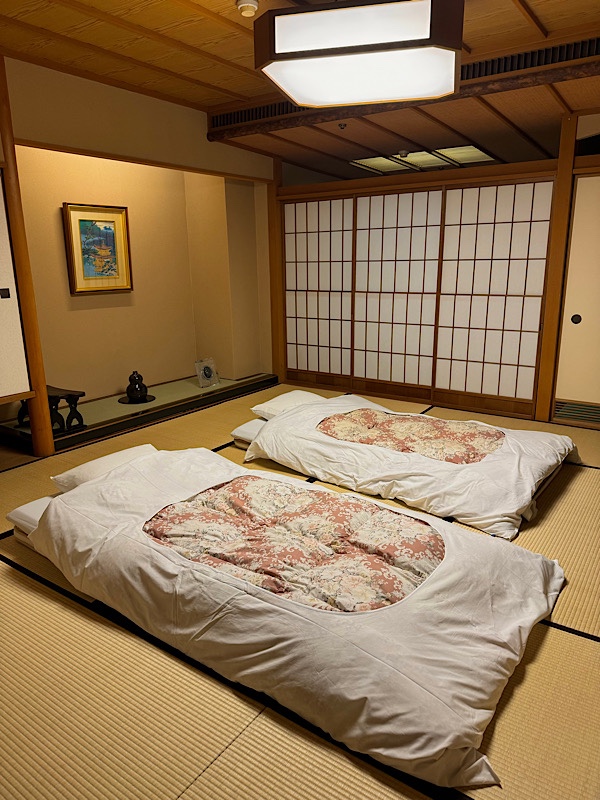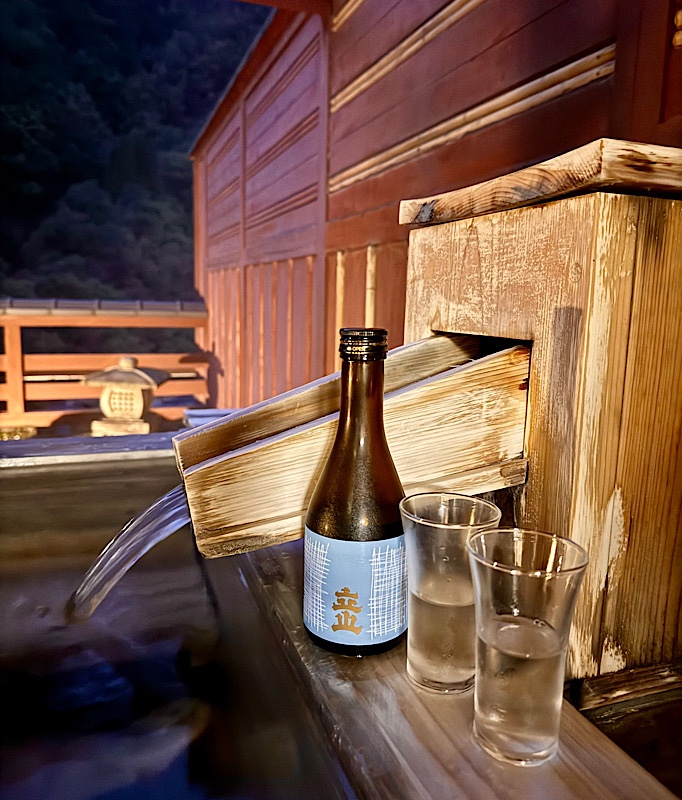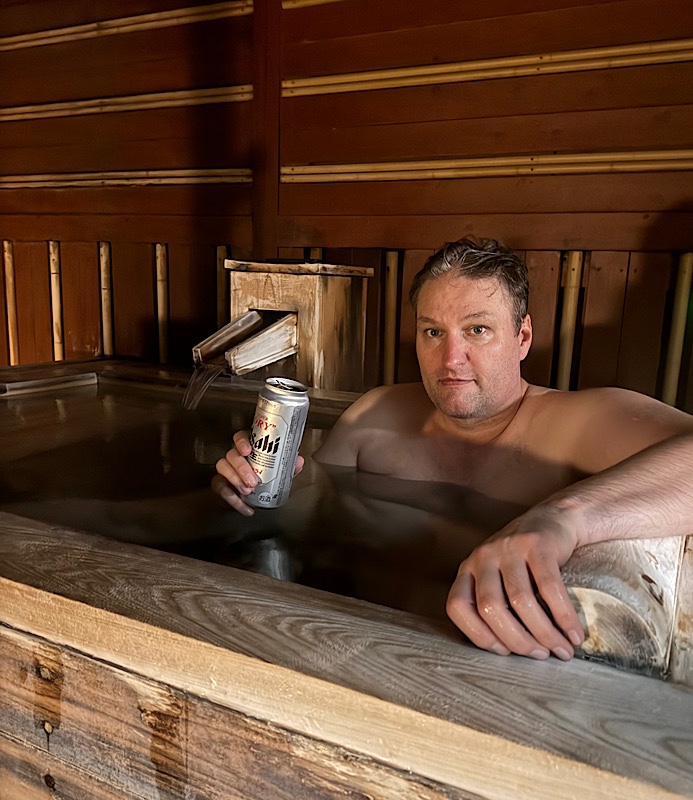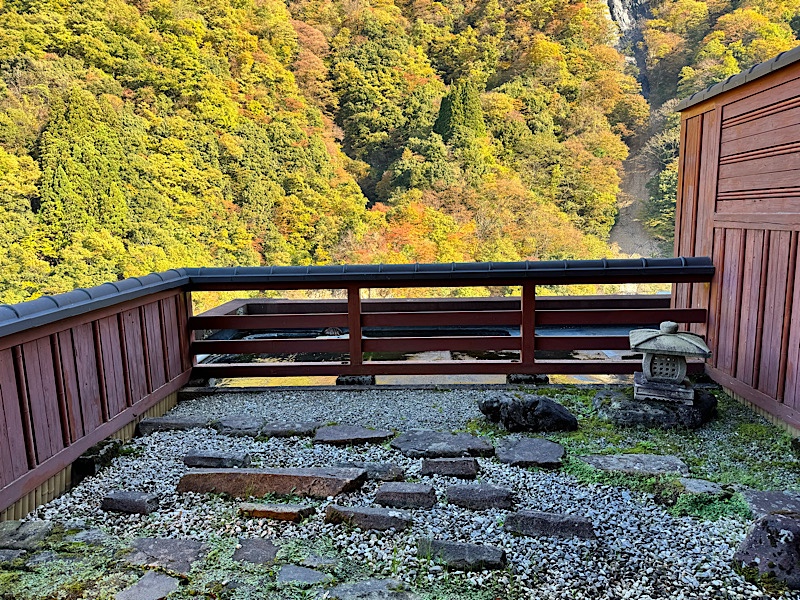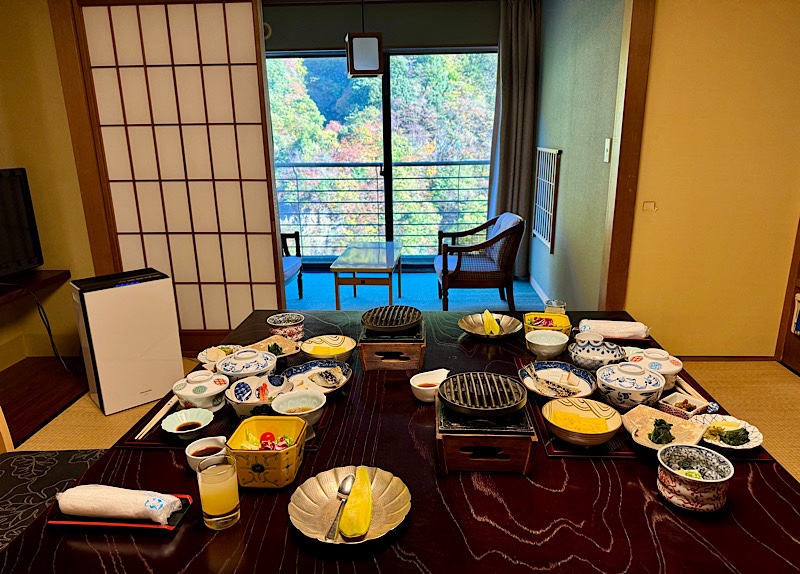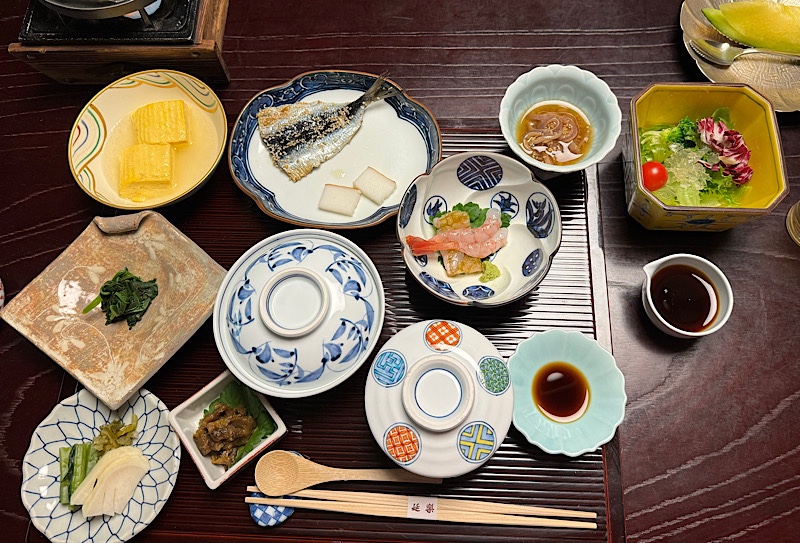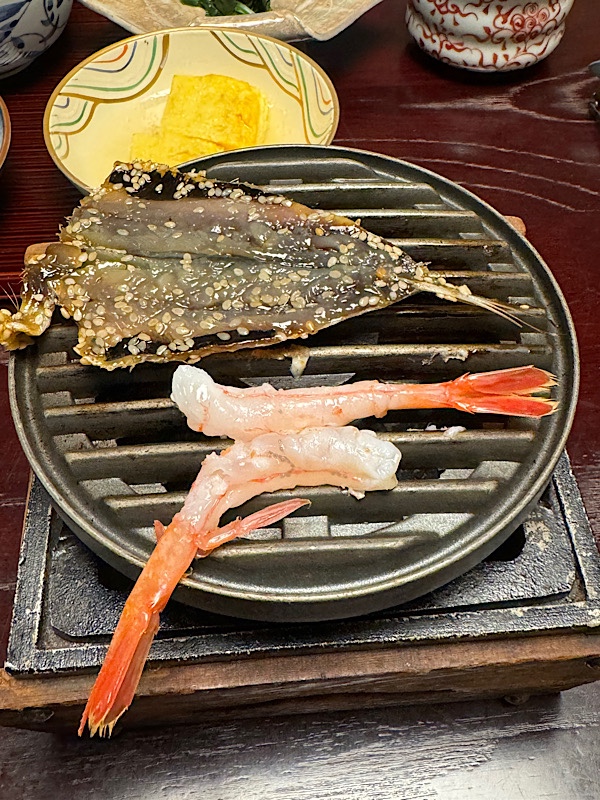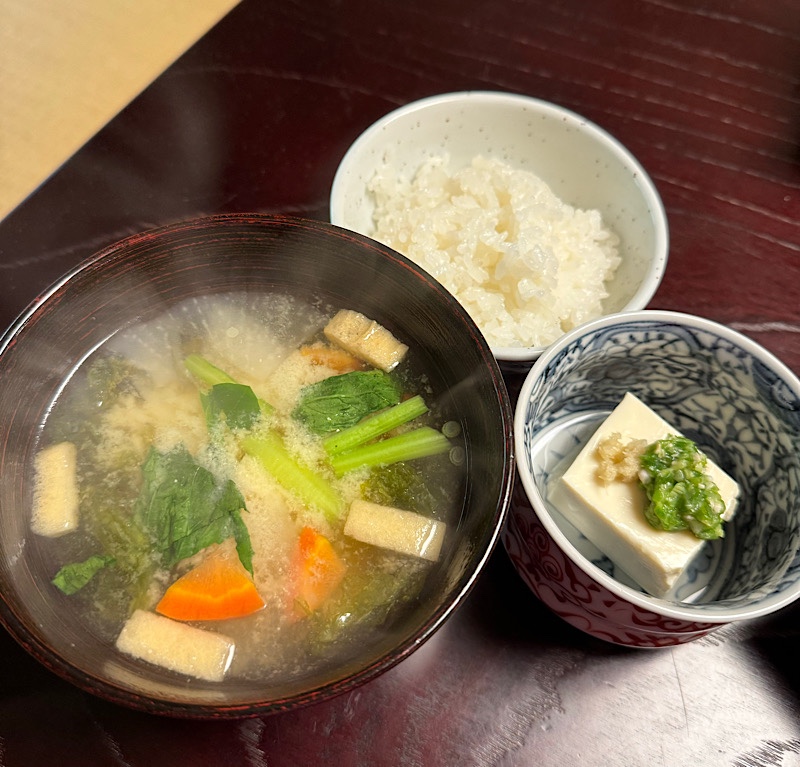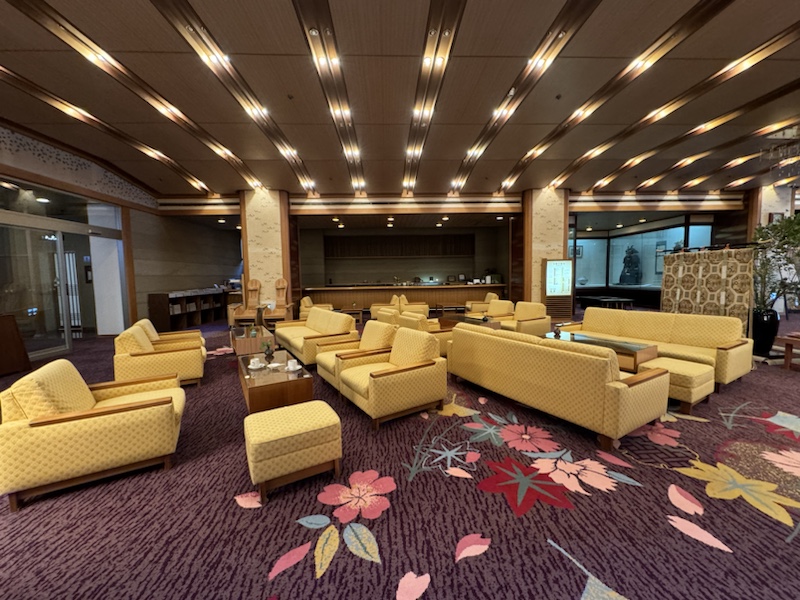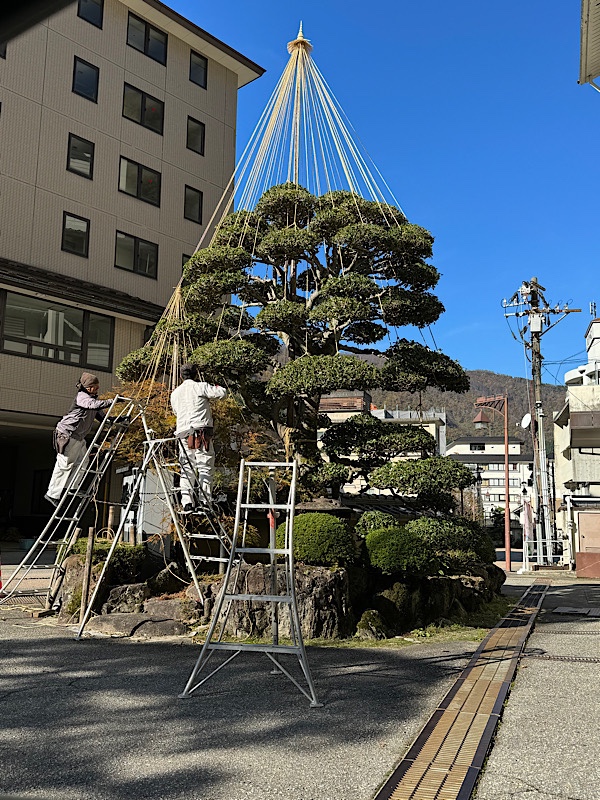Work was pretty full on today – we were looking at integrated transport solutions in Nagoya and then had to make our way to Shizuoka which took longer than anticipated… we have found the SatNav in the car to be variously reliable. It gives us decent information on route options and is usually accurate on the cost of tolls, (which are seriously prohibitive considering they barely save you any time at all on some occasions), but we don’t think is always operating on real time traffic data. We have had a couple of instances where the tolls route had a lot of congestion and ended up taking much longer than the no tolls route would have taken. C’est la vie. Live and learn.
We stayed for the night at Migiwaya in Yaizu Harbour in Shizuoka in a lovely little ryokan known for the fresh and crystal clear onsen water. 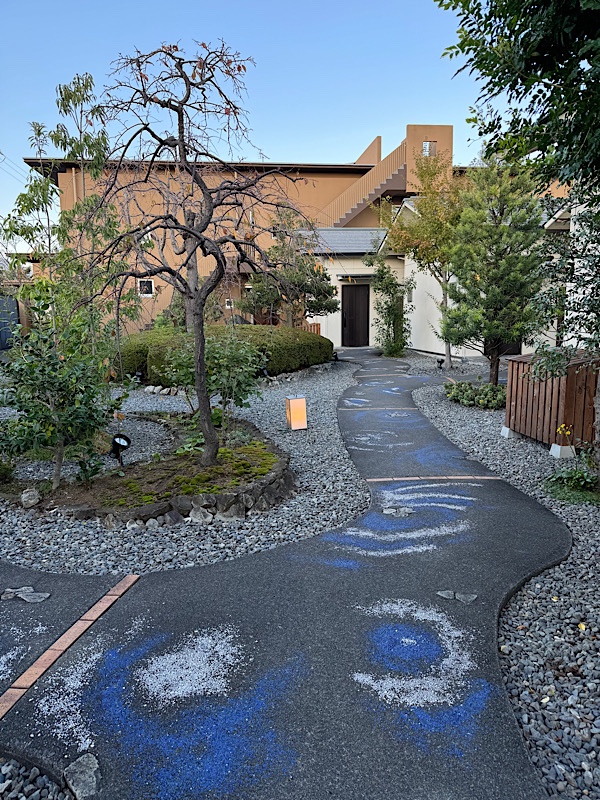 We had a quiet little garden villa at the back of the properly in a tucked away secluded little spot.
We had a quiet little garden villa at the back of the properly in a tucked away secluded little spot.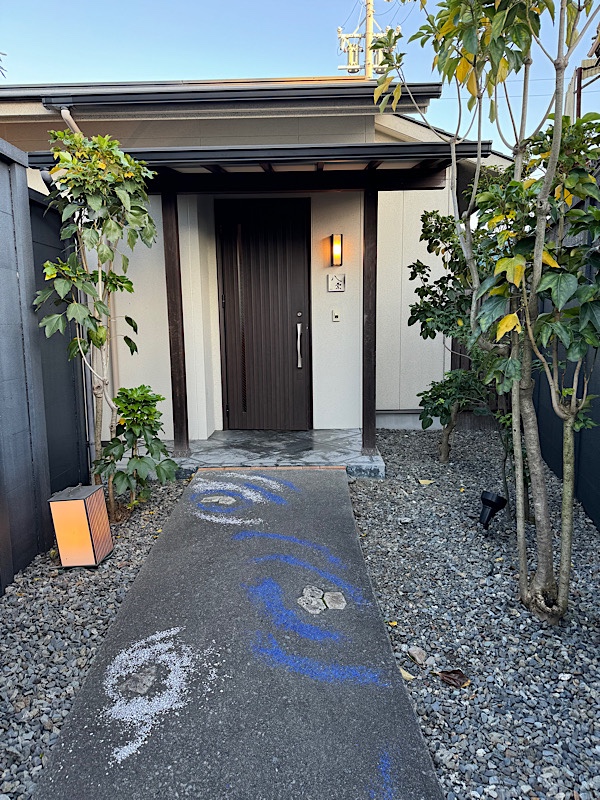
The room was enormous – I think these newer ryokan establishments have realised how people from the cramped larger cities of the country enjoy a bit of space for restful and relaxation.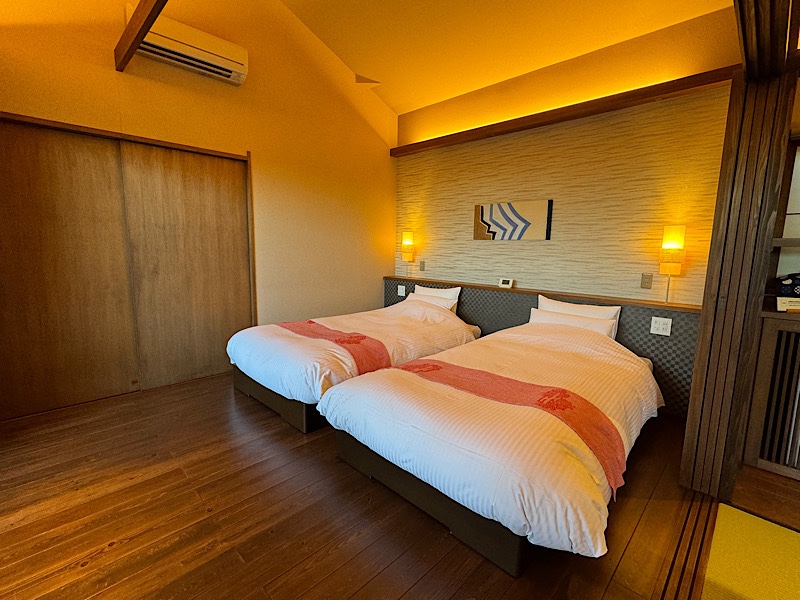
The living room was also quite large – had enormous closets and the lovely little half height rocking chairs that were really comfortable.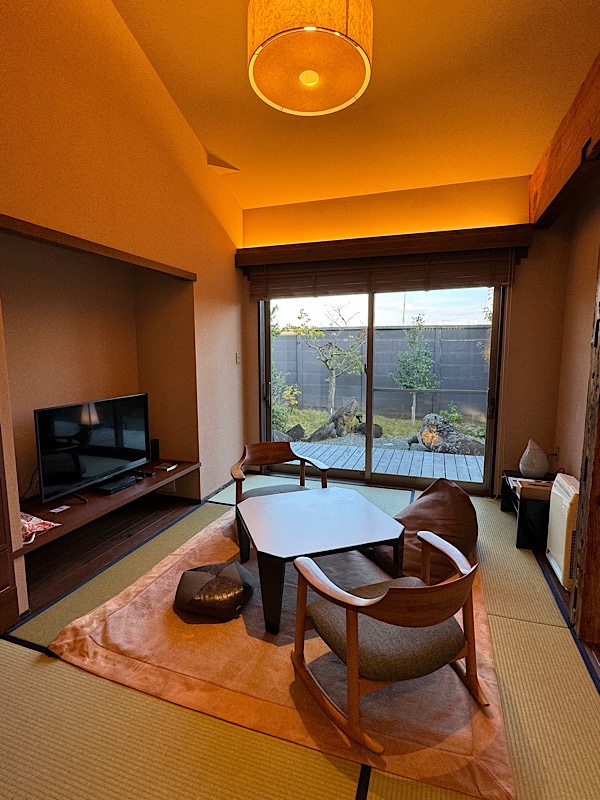
The tea making space was well equipped and the fridge stocked with complimentary beer, highball and non alcoholic drinks.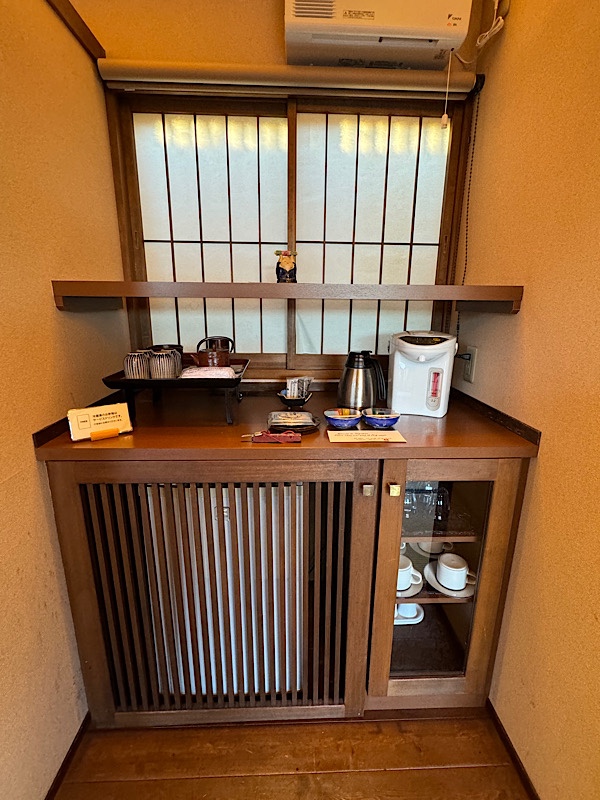
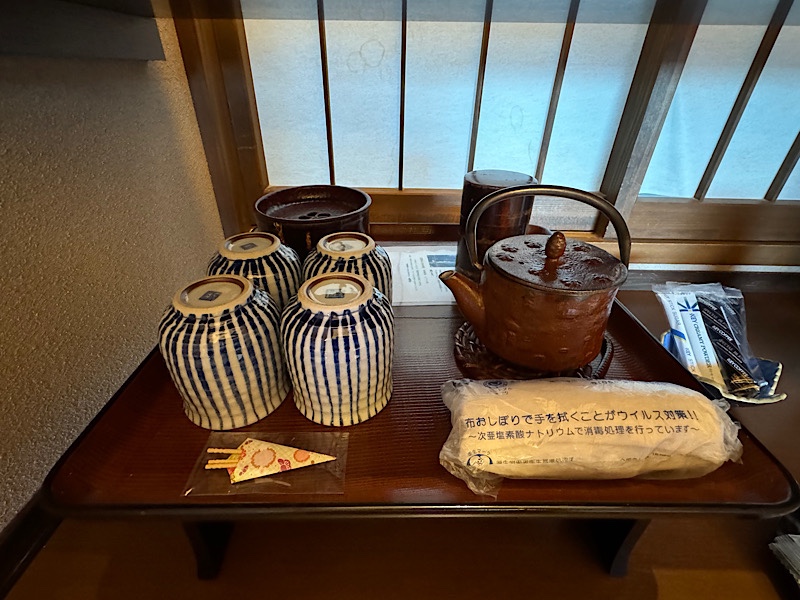
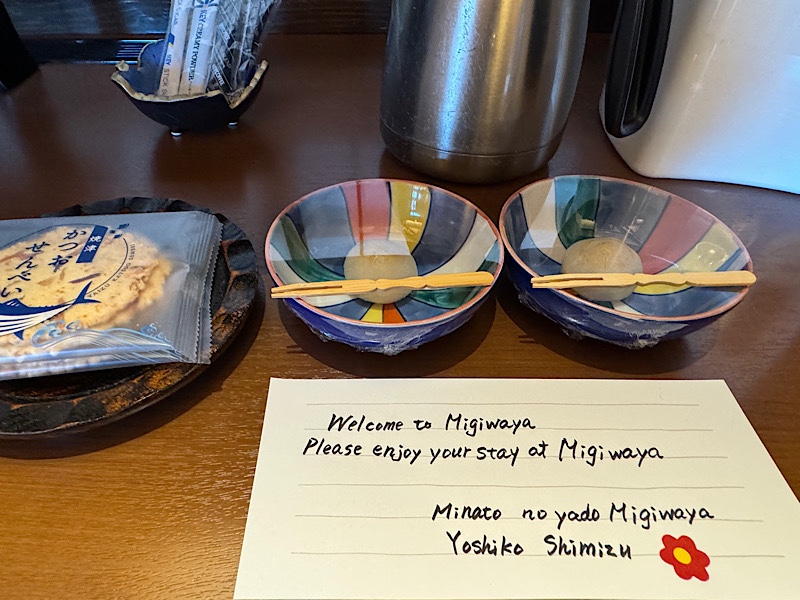 His and her yukata for the stay.
His and her yukata for the stay.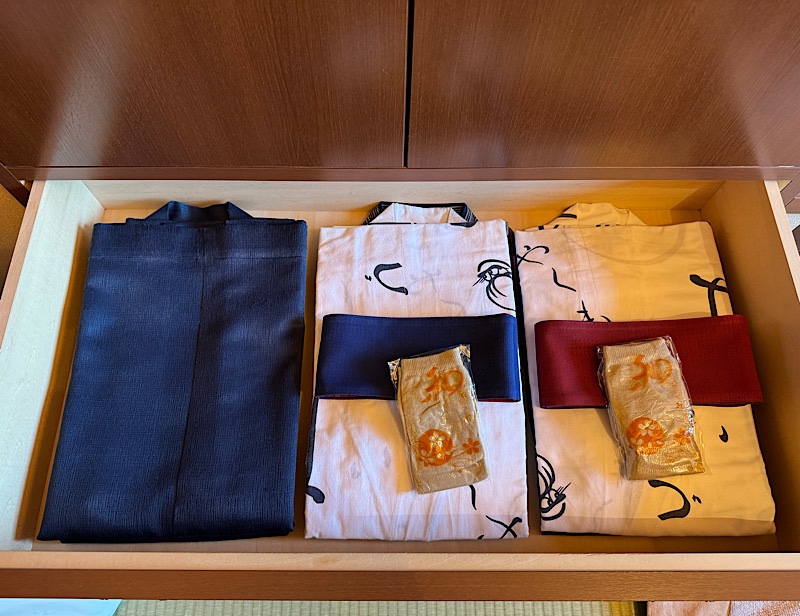 and his and her towels. The blue is for boys, and pink is for girls really is ubiquitous.
and his and her towels. The blue is for boys, and pink is for girls really is ubiquitous. 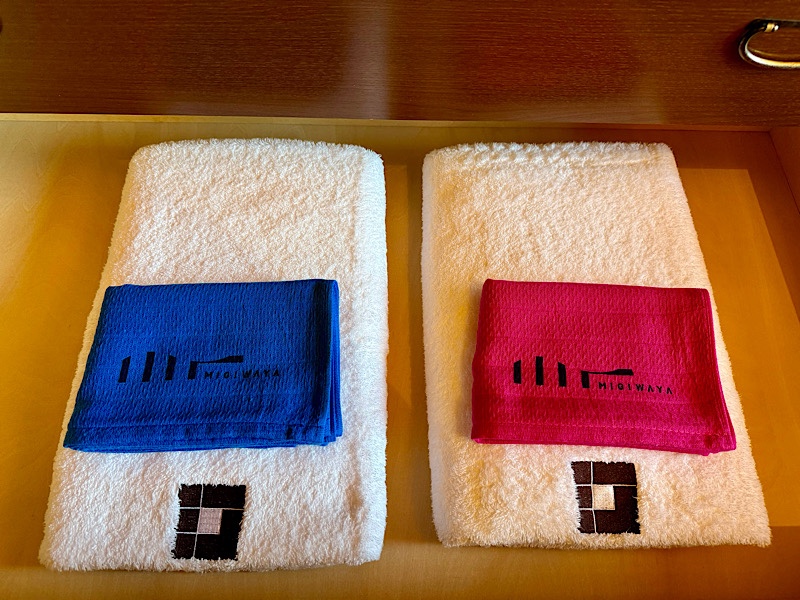
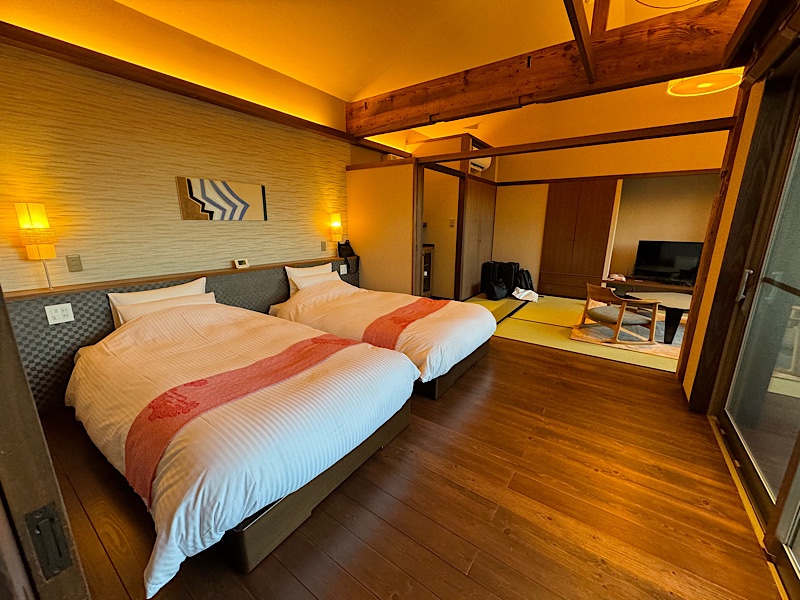 Outside was a lovely deck overlooking a private garden. Not as established as some gardens but will be lovely in a few years as the plants mature.
Outside was a lovely deck overlooking a private garden. Not as established as some gardens but will be lovely in a few years as the plants mature. 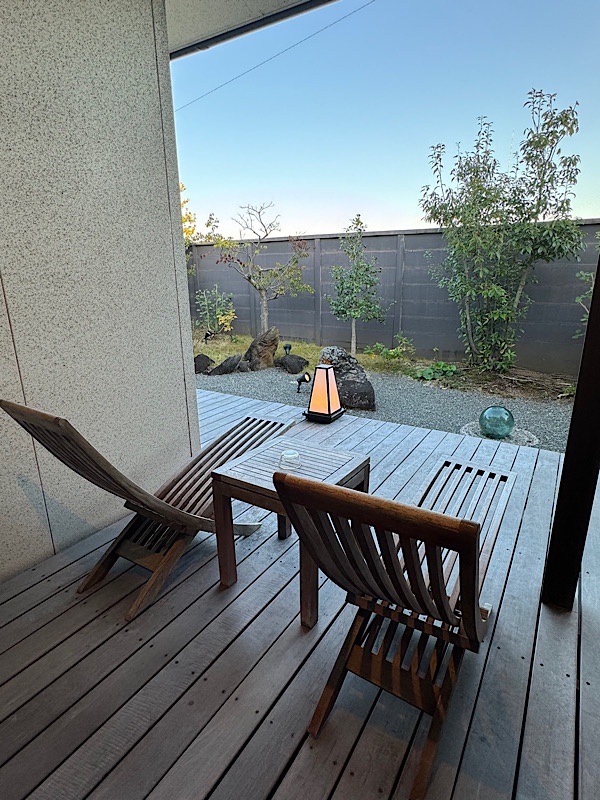 Dressing room:
Dressing room: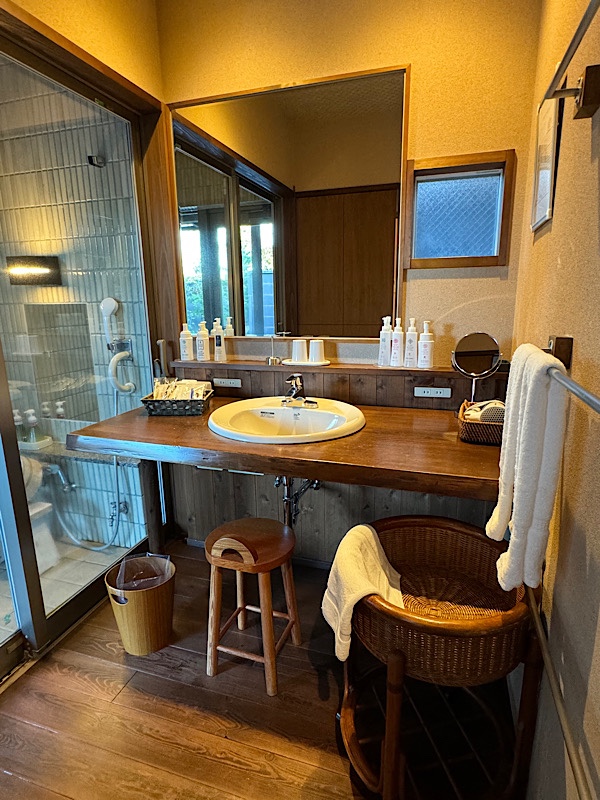 Bathroom:
Bathroom: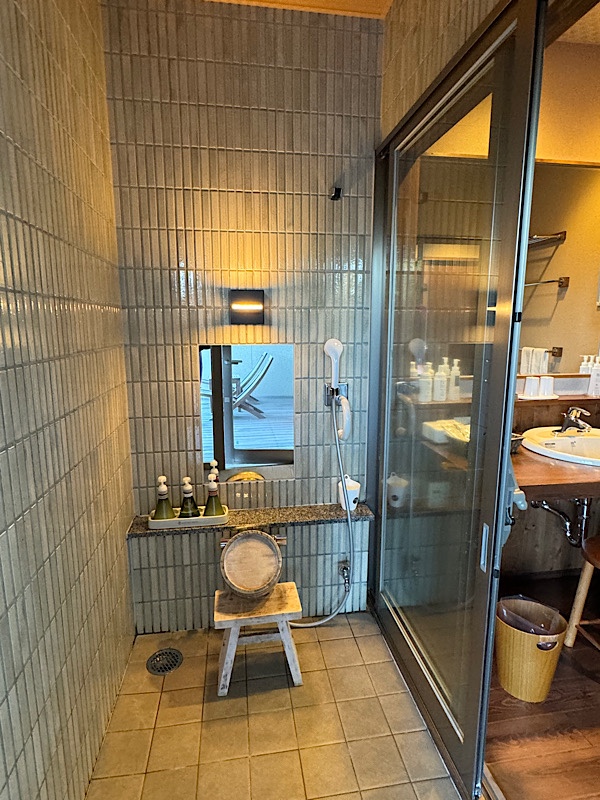 Snackage and drinks:
Snackage and drinks: 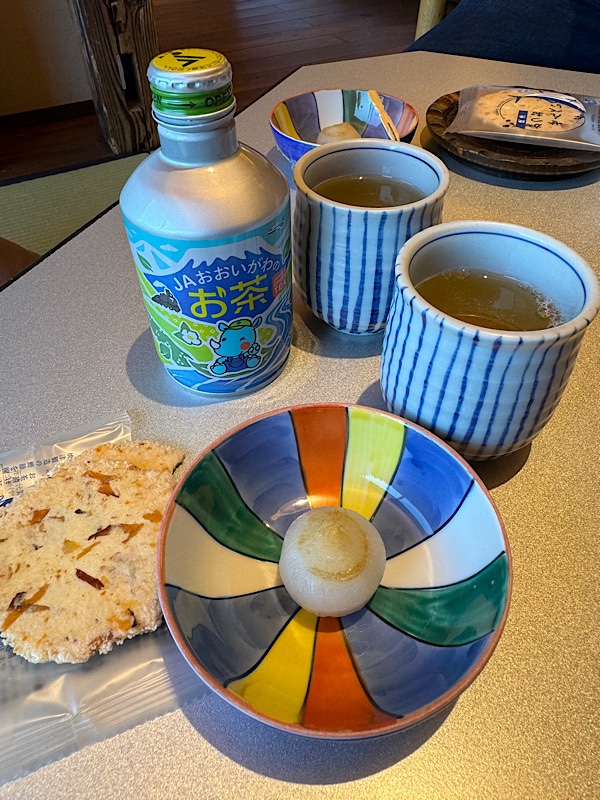 Before scubbing off the road and into the onsen. It was a very warm 41C – which probably only felt warm because the ambient temp was closer to 20C than 10C this close to the coastline. The water really is crystal clear, and while not as soft as some others, was lovely and refreshing.
Before scubbing off the road and into the onsen. It was a very warm 41C – which probably only felt warm because the ambient temp was closer to 20C than 10C this close to the coastline. The water really is crystal clear, and while not as soft as some others, was lovely and refreshing. 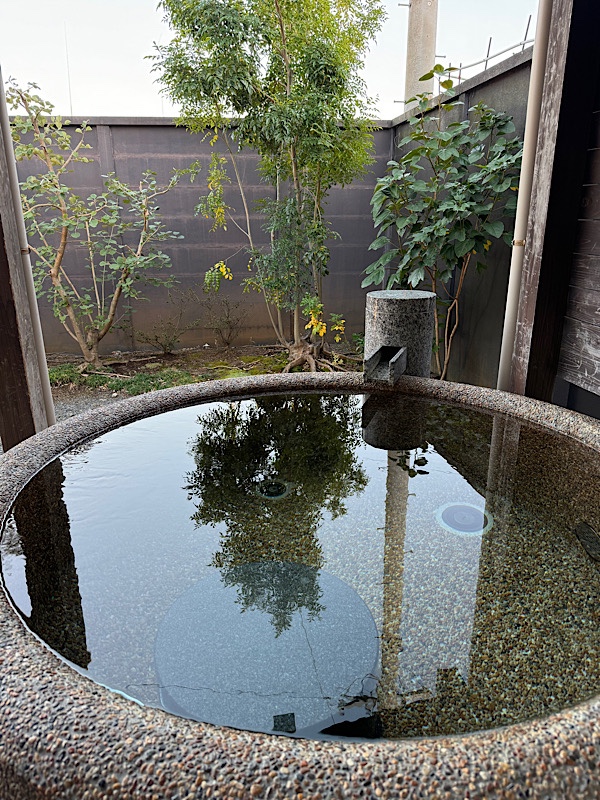
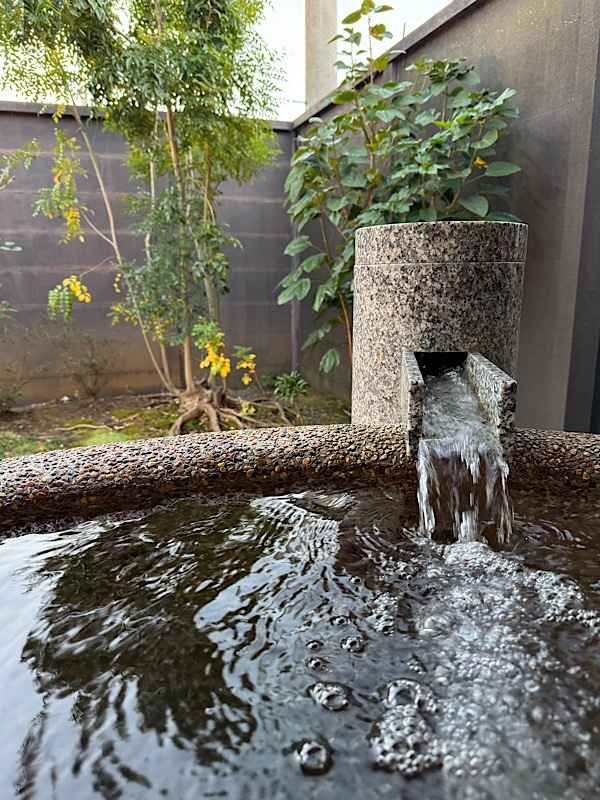 After a couple of dips in the bath (in between getting some work done) it was time to go for dinner. Here was the menu for the evening, laid out in a lovely autumnal design:
After a couple of dips in the bath (in between getting some work done) it was time to go for dinner. Here was the menu for the evening, laid out in a lovely autumnal design: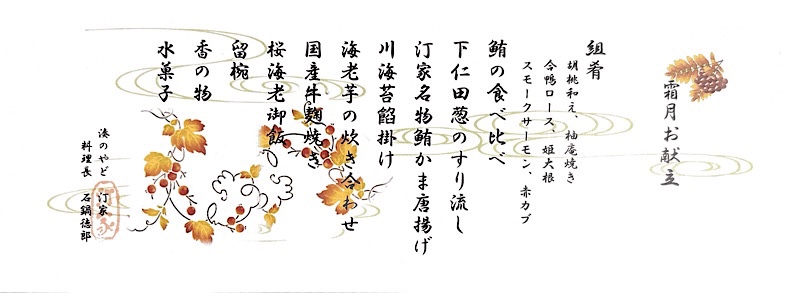
Appetisers of wheat bread and persimmon mixed with walnut paste, roasted duck, smoked salmon, Japanese radish, red turnip pickle and citrus seasoned grilled fish. So tasty.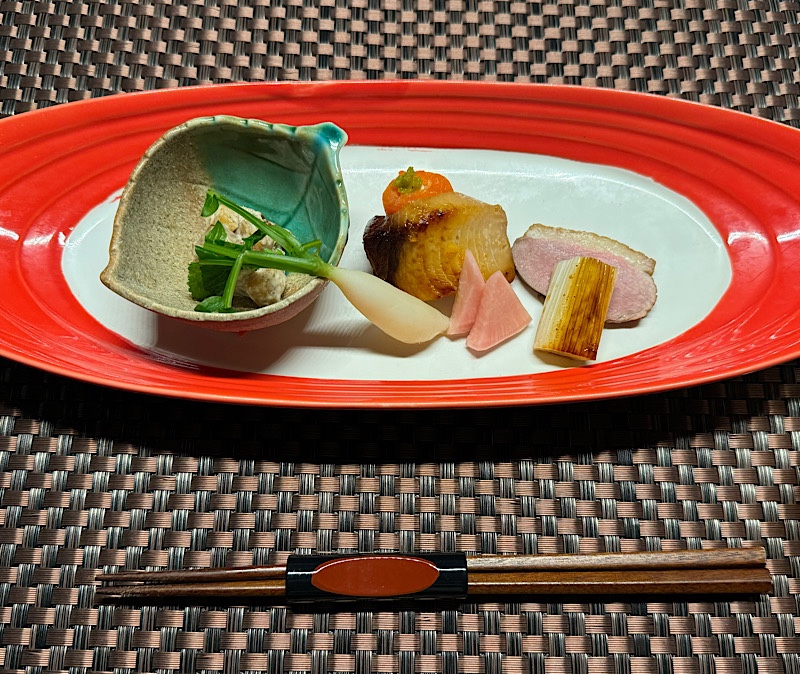 Maguro sashimi – this was delicious. Lovely three different cuts of tuna of varying grades. <3 Big fan!
Maguro sashimi – this was delicious. Lovely three different cuts of tuna of varying grades. <3 Big fan! 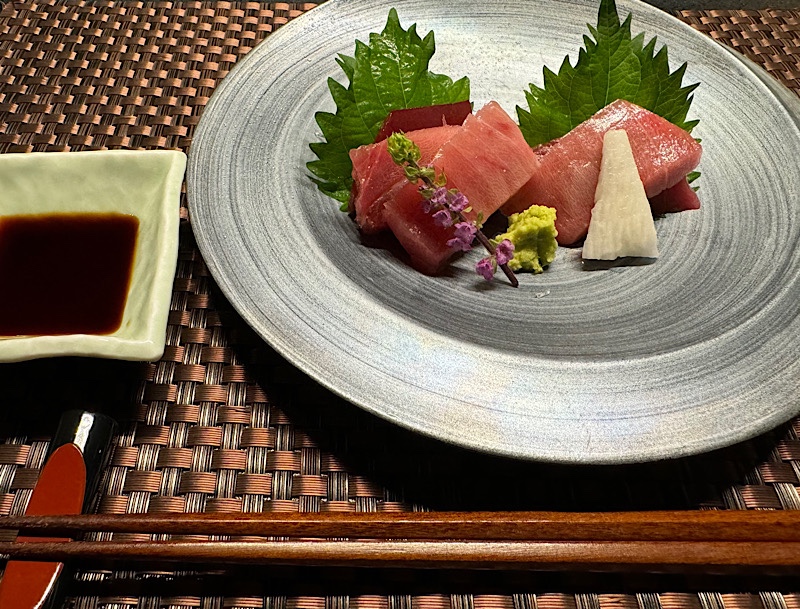
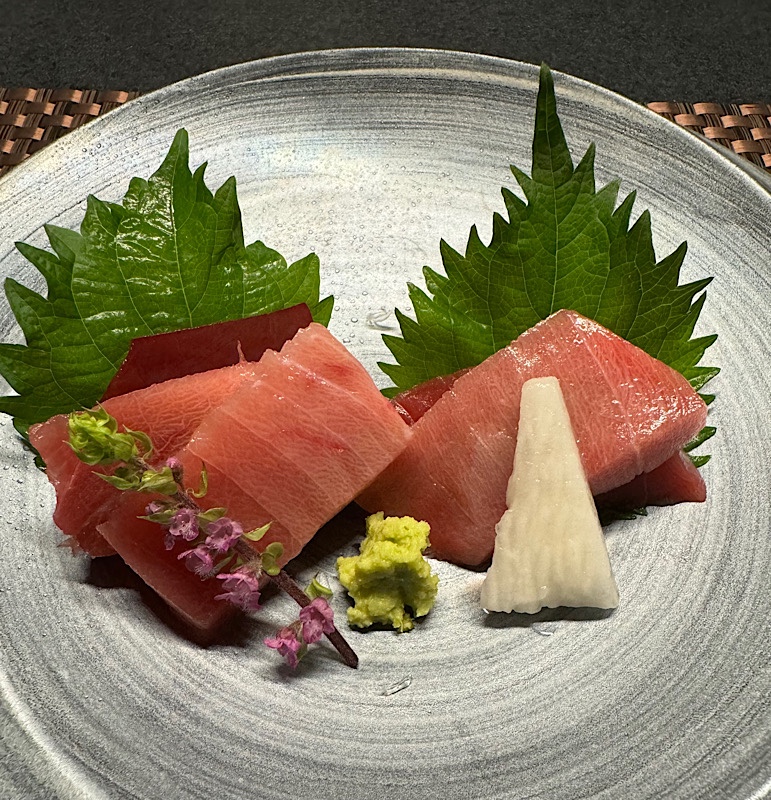 Had to try the local saké of course – cute little saké jug.
Had to try the local saké of course – cute little saké jug.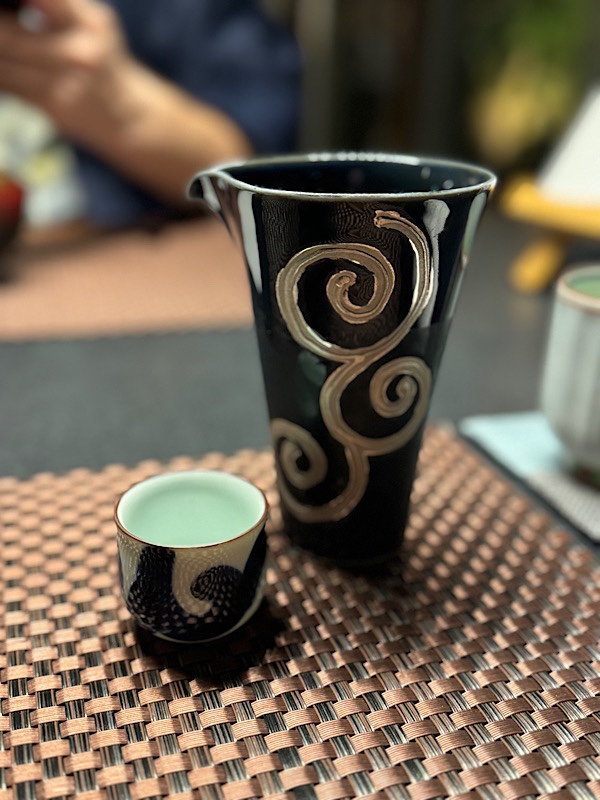 Shimonita leek soup.
Shimonita leek soup. 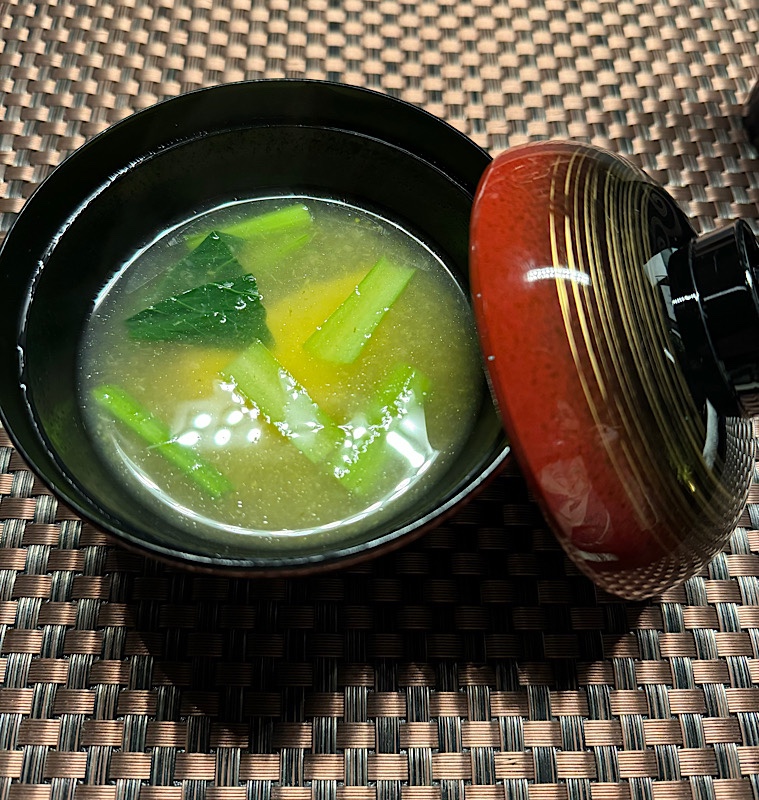 Followed by a house speciality – deep fried tuna cheek. This was possibly the most flavourful cooked piece of tuna I’ve ever had in my life. I’m not super fond of tuna once it’s more than lightly seared, but this was fantastic.
Followed by a house speciality – deep fried tuna cheek. This was possibly the most flavourful cooked piece of tuna I’ve ever had in my life. I’m not super fond of tuna once it’s more than lightly seared, but this was fantastic.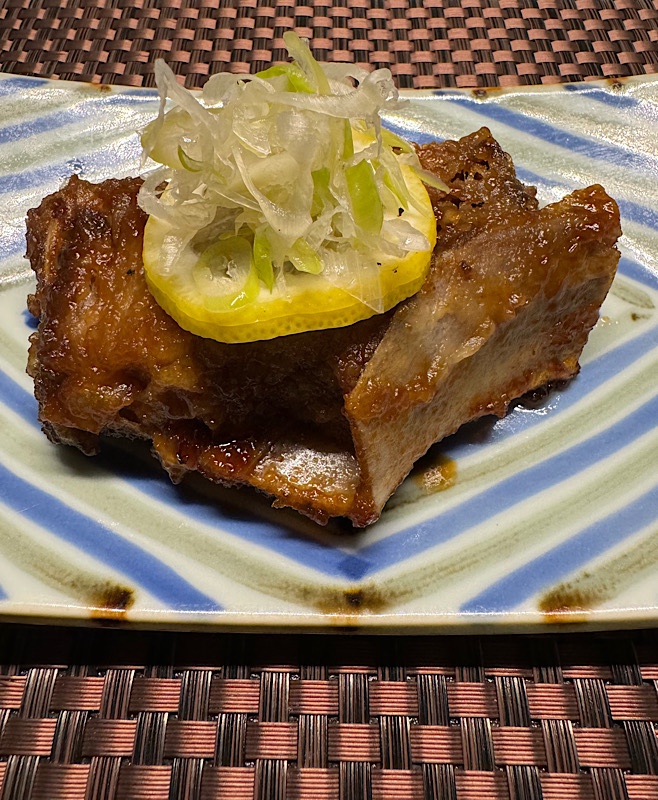 Local fish with Chinese cabbage served with seaweed sauce.
Local fish with Chinese cabbage served with seaweed sauce.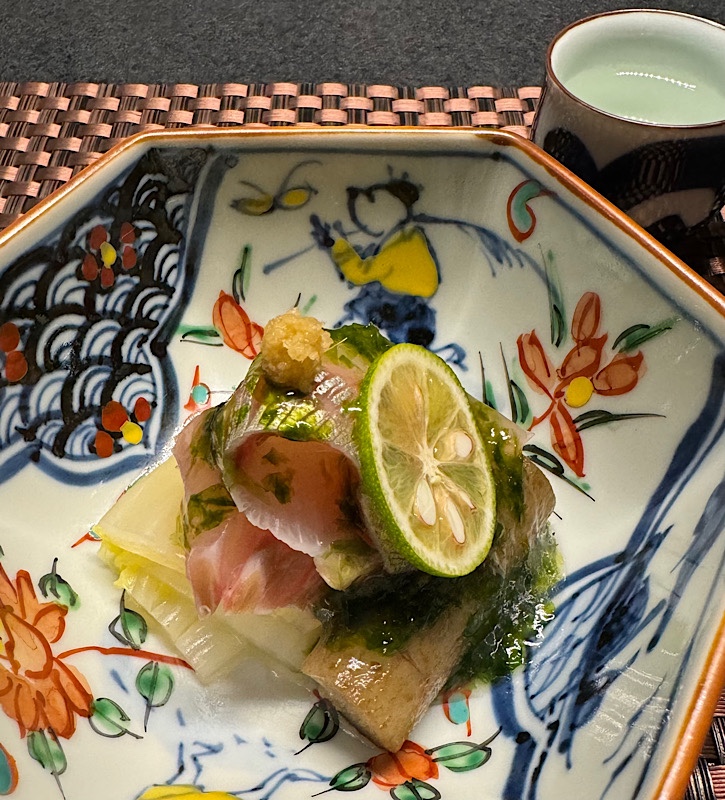 Simmered Shrim Potatoes.
Simmered Shrim Potatoes.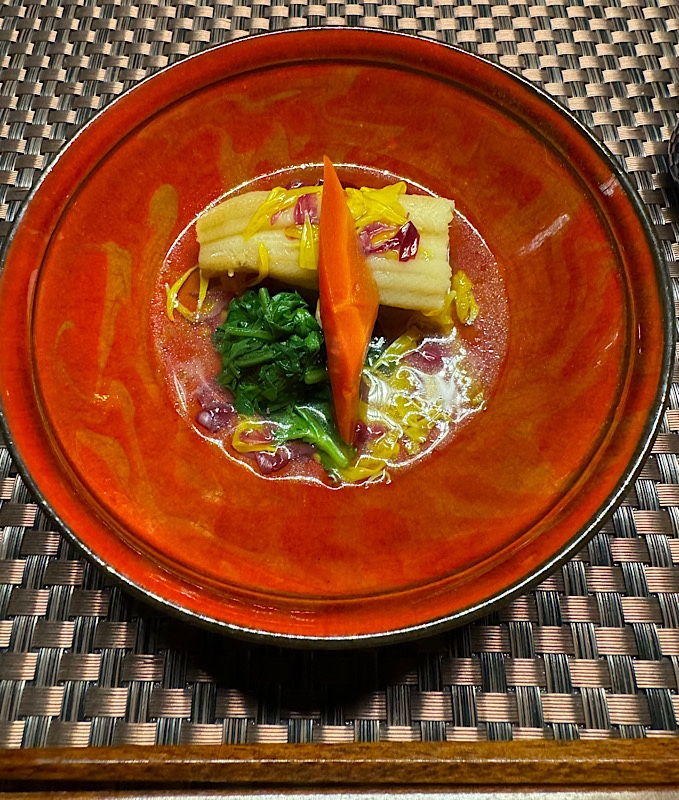 Marinated steak with malted rice paste.
Marinated steak with malted rice paste.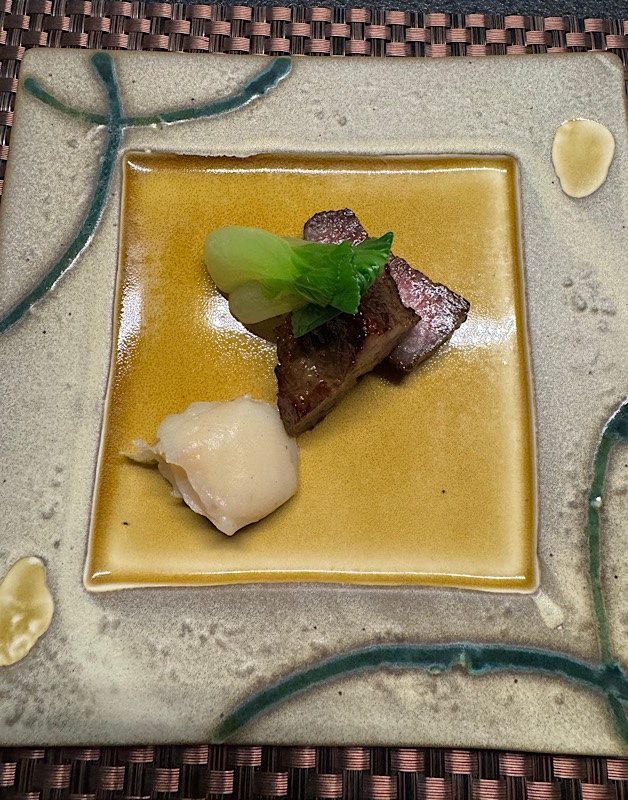
Steamed rice with fried Sakura shrimp, served with miso soup and pickles. It’s interesting to see how the flavours in miso soup change so much from region to region.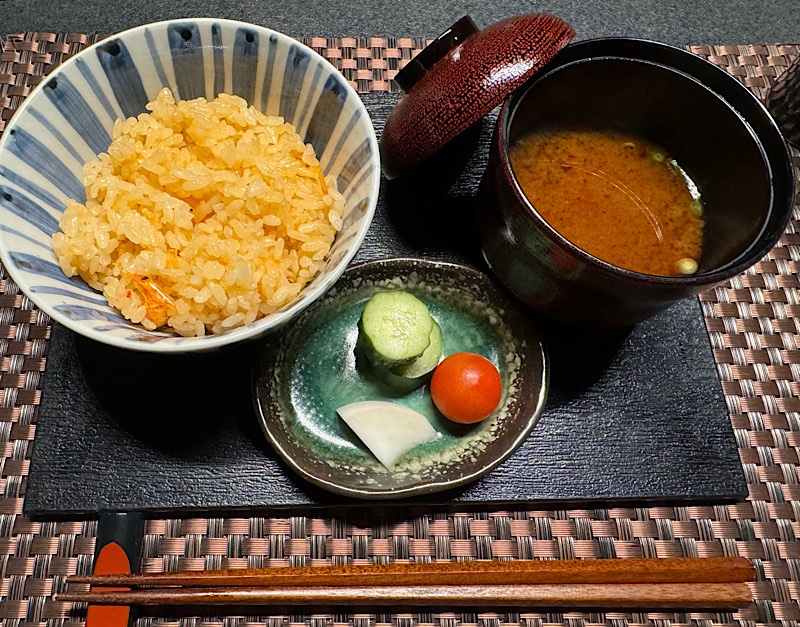
For dessert, a small brown sugar pudding and some local fruits.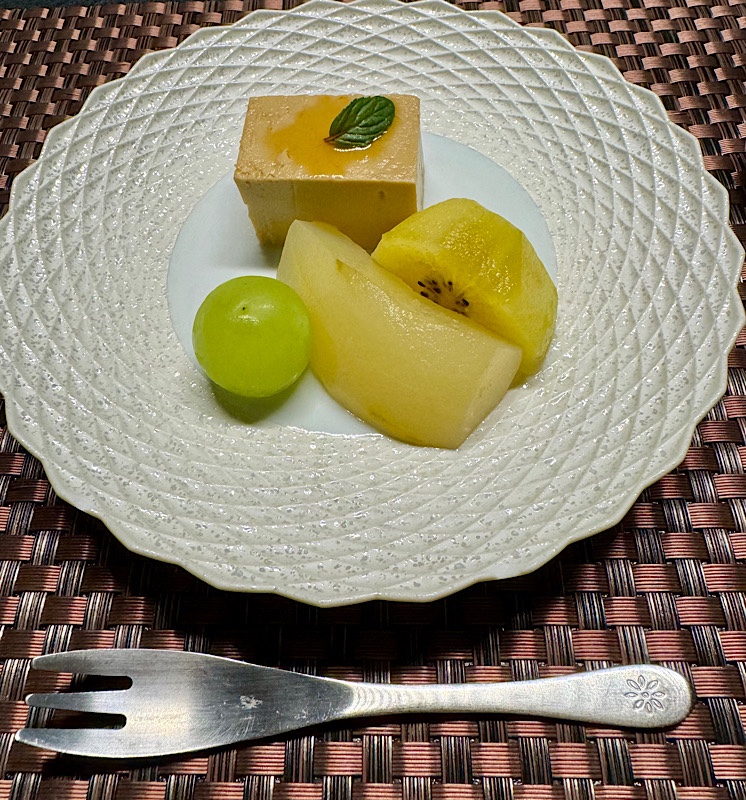
Another delicious meal, and so beautifully presented… 10/10 would dine here again.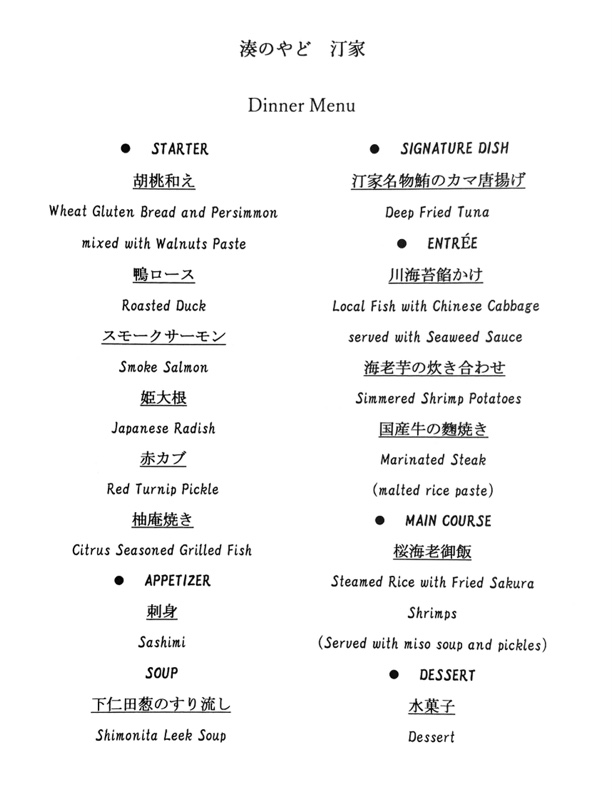
After dinner we had a reservation in a different, larger, private onsen… so we made our way down the garden paths to a private little cabana-like space. 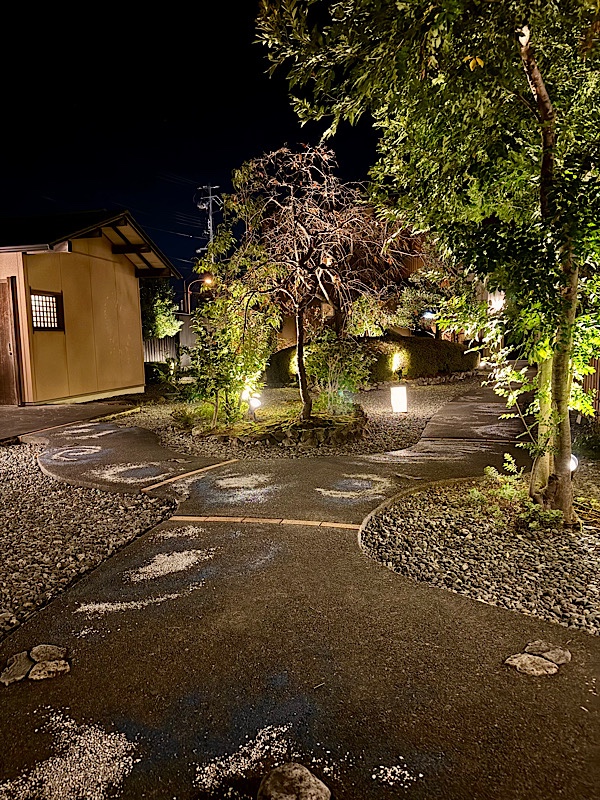 It had a double dressing room, a double shower room and this lovely large onsen. Only we found it to be rather too well lit and took care of that pronto…much nicer without a spotlight overhead, and just the garden lights left on.
It had a double dressing room, a double shower room and this lovely large onsen. Only we found it to be rather too well lit and took care of that pronto…much nicer without a spotlight overhead, and just the garden lights left on. 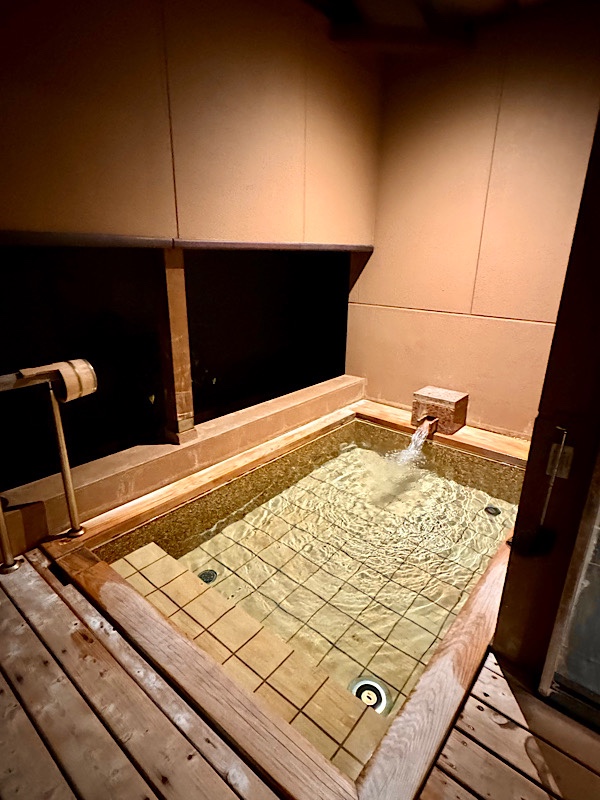
This was actually an odd space to be bathing in – it has all the appearance and feel of privacy, but probably had the actual privacy of a tent! People couldn’t see in, but you definitely got the impression with the open air space that your voices would carry, though the ryokan was not full and we saw only two other parties at dinner.
After this it was time for a much need, good night sleep with the sounds of the ocean not far away. We both woke up bright and early – our deck faced predominantly east, and even though we had remembered to close all the blinds, we found ourselves waking early. Never mind, that just gave more time to have another soak in the onsen on the deck before breakfast in the dining room.
Breakfast that comprised of a cast of a thousand dishes!
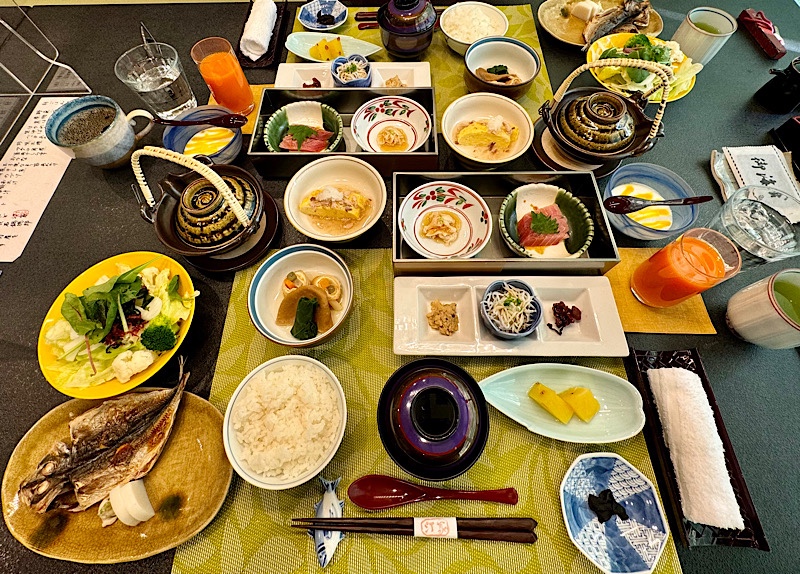 Grilled Japanese horse mackerel with fish sausage and wasabi.
Grilled Japanese horse mackerel with fish sausage and wasabi.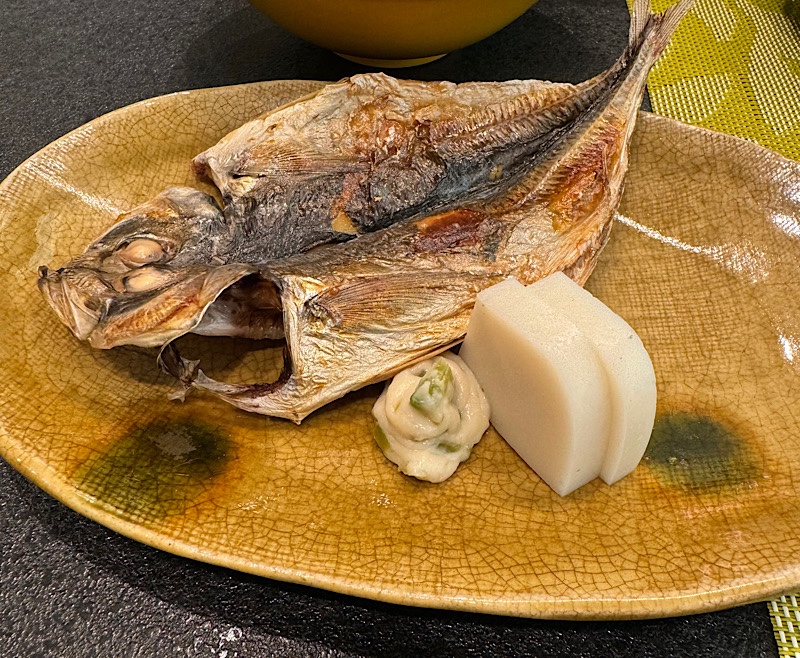 Tuna sashimi for breakfast! How decadent.
Tuna sashimi for breakfast! How decadent.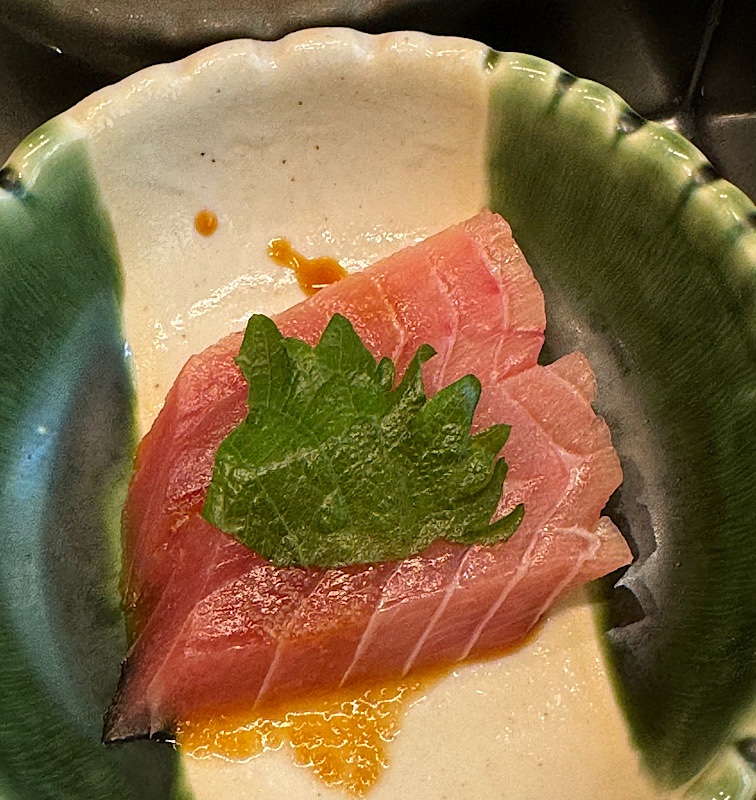 Tamago with pickled broth sauce.
Tamago with pickled broth sauce.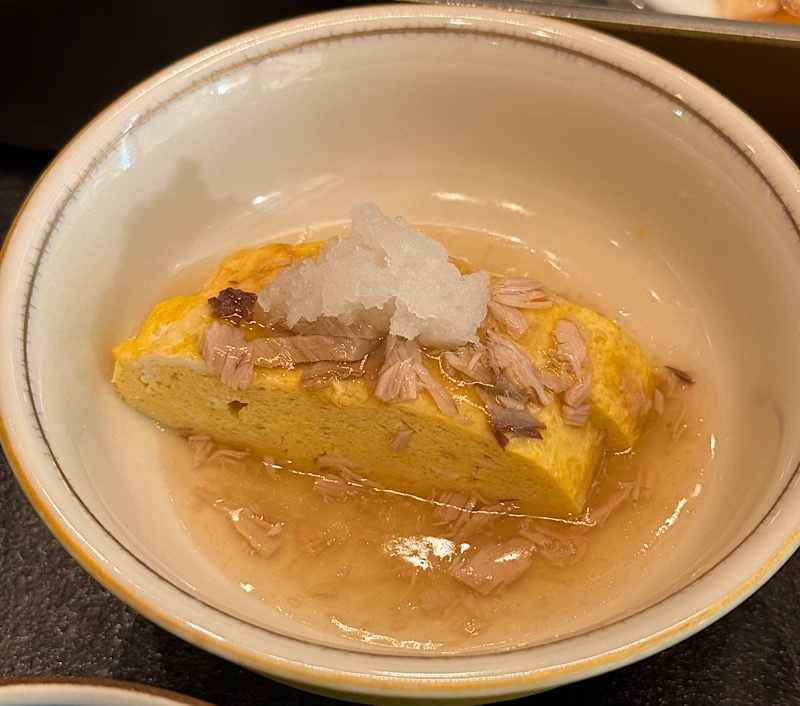
Plus a bunch of other delicious things – they seem determined to fill us up at breakfasts here, which works well – if you skip lunch!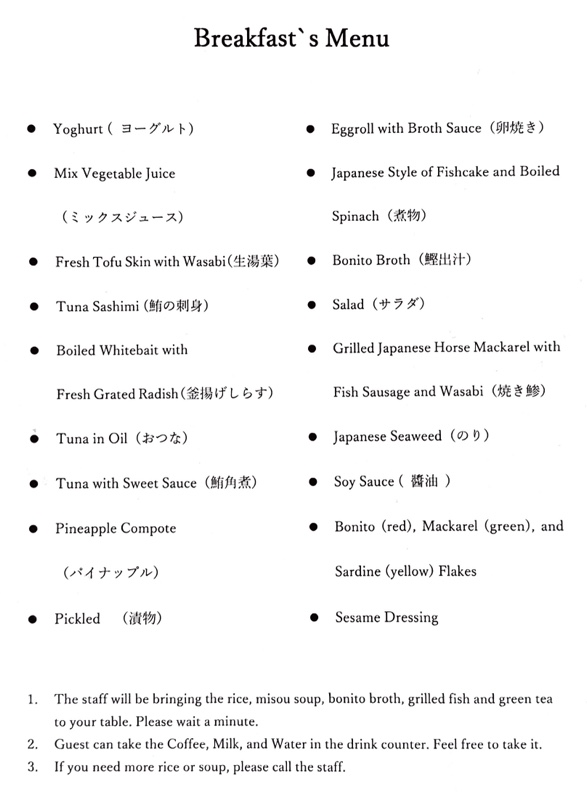
.

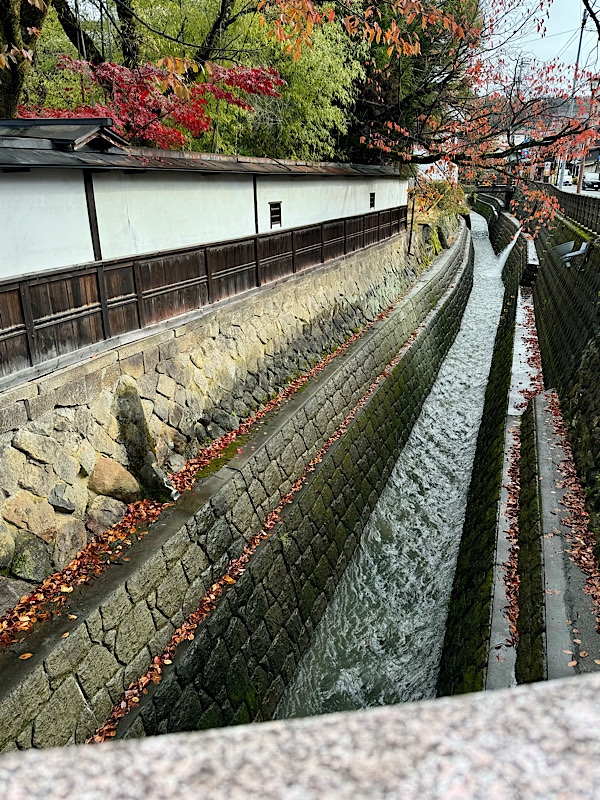 Takayama’s Old Town district isn’t very big so a few hours is a goodly amount of time to spend wandering the streets here – unless you get side tracked.
Takayama’s Old Town district isn’t very big so a few hours is a goodly amount of time to spend wandering the streets here – unless you get side tracked.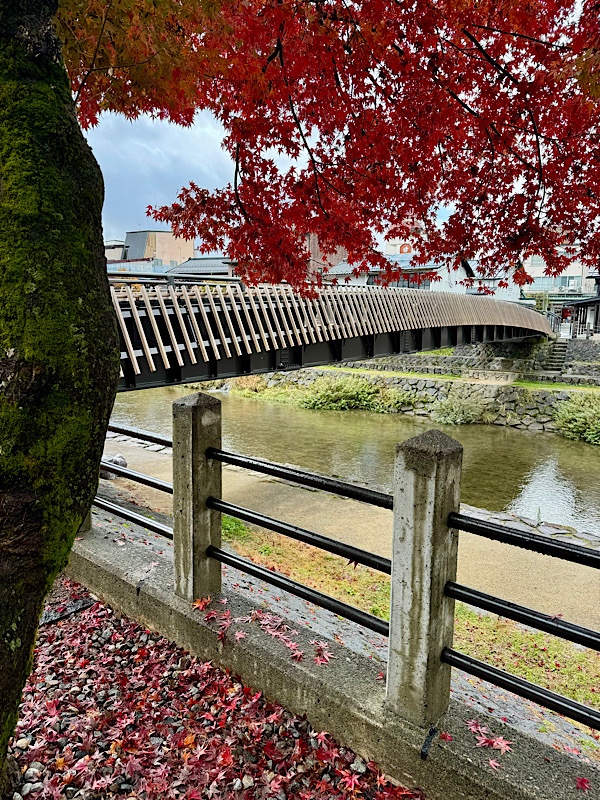 There were chop stick shops, LOADS of sweets, biscuits and lollies for sale, puddings, beef stores, fans, glassware, ceramics, and cutesy as hell Japanese kitch.
There were chop stick shops, LOADS of sweets, biscuits and lollies for sale, puddings, beef stores, fans, glassware, ceramics, and cutesy as hell Japanese kitch. 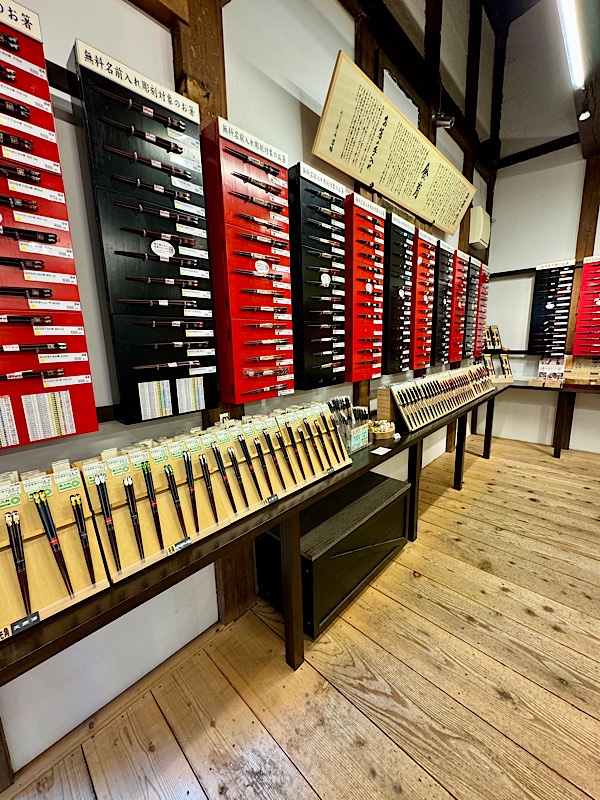 Cute little glass chopstick rests… I nearly bought a set to bring home but while the chopsticks I bought home from Kanazawa back in 2015 are probably the most used and useful souvenir I have ever bought from anywhere, we tend not to set the table too fancy when we are having Japanese at home. So they probably wouldn’t end up getting used much.
Cute little glass chopstick rests… I nearly bought a set to bring home but while the chopsticks I bought home from Kanazawa back in 2015 are probably the most used and useful souvenir I have ever bought from anywhere, we tend not to set the table too fancy when we are having Japanese at home. So they probably wouldn’t end up getting used much. 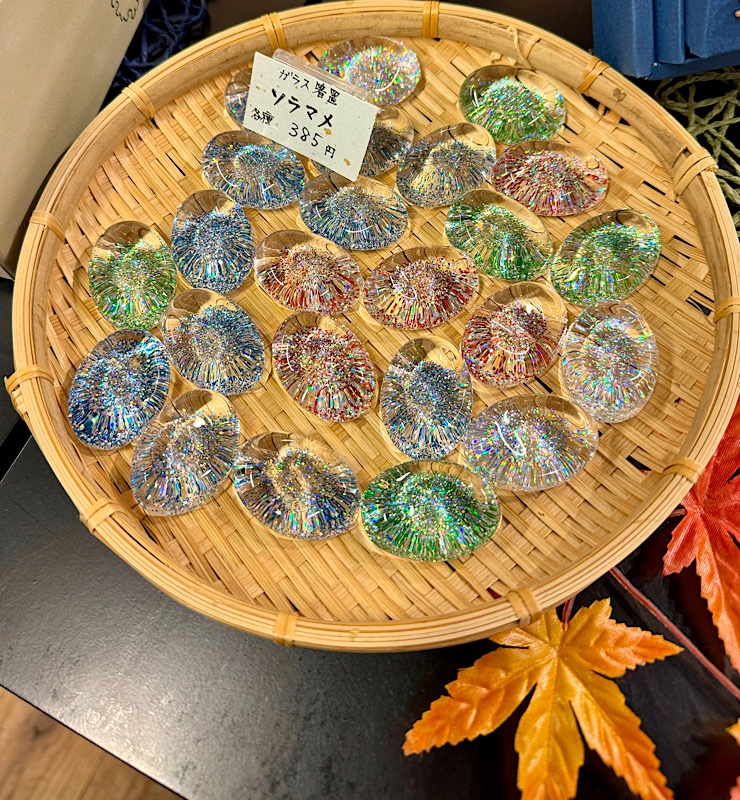
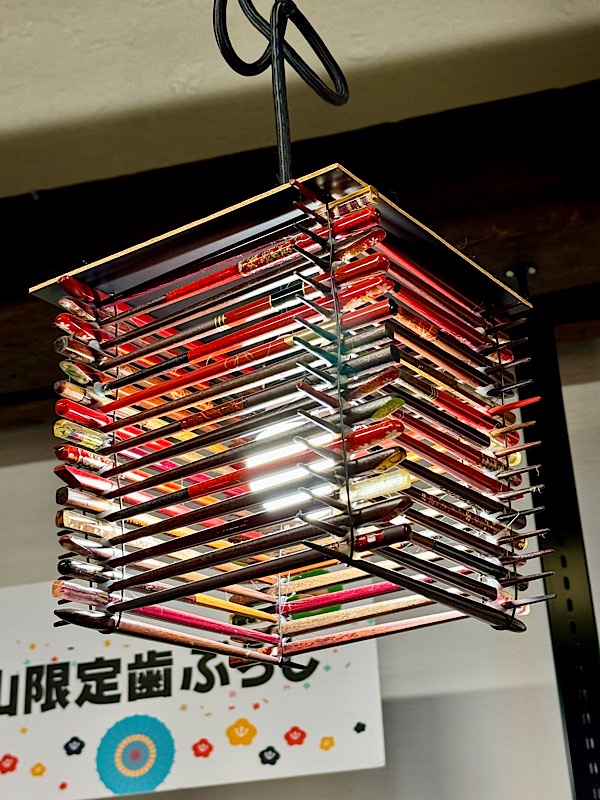 These fans remind me of the hundreds of fan shops all over Kyoto… Takayama is sometimes called ‘Little Kyoto’, as its old town district is relatively well kept.
These fans remind me of the hundreds of fan shops all over Kyoto… Takayama is sometimes called ‘Little Kyoto’, as its old town district is relatively well kept. 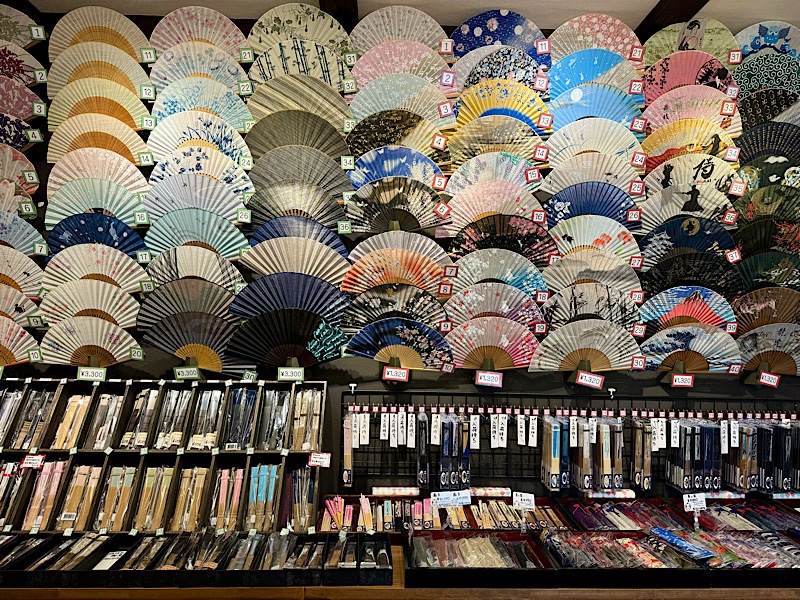 Takayama is also really well known for its Hida beef… this is a Hida beef bun – the type you usually get full of pork. Mr K felt that he just *had* to get one and it I stole a bite, it was really tasty.
Takayama is also really well known for its Hida beef… this is a Hida beef bun – the type you usually get full of pork. Mr K felt that he just *had* to get one and it I stole a bite, it was really tasty. 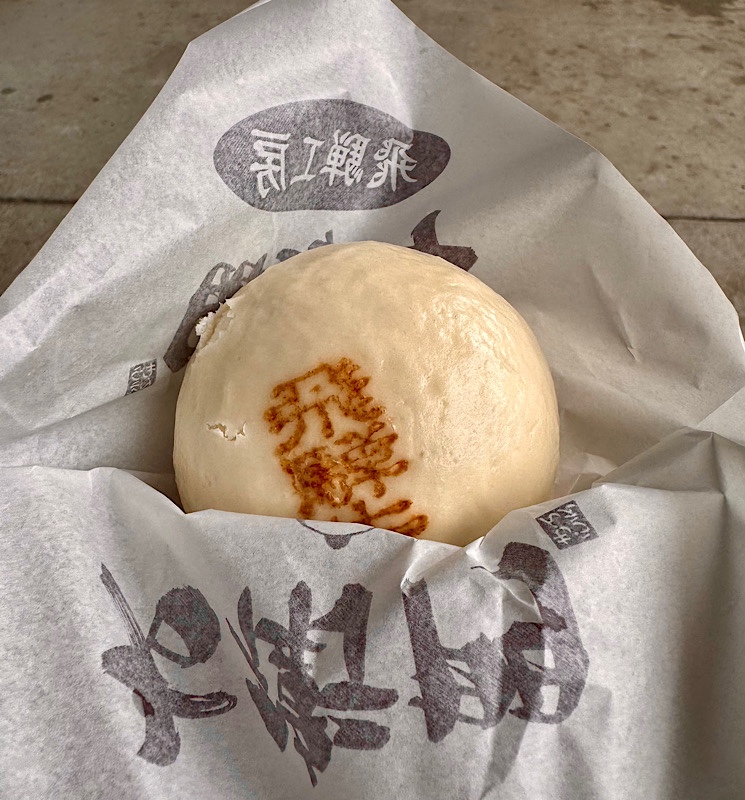
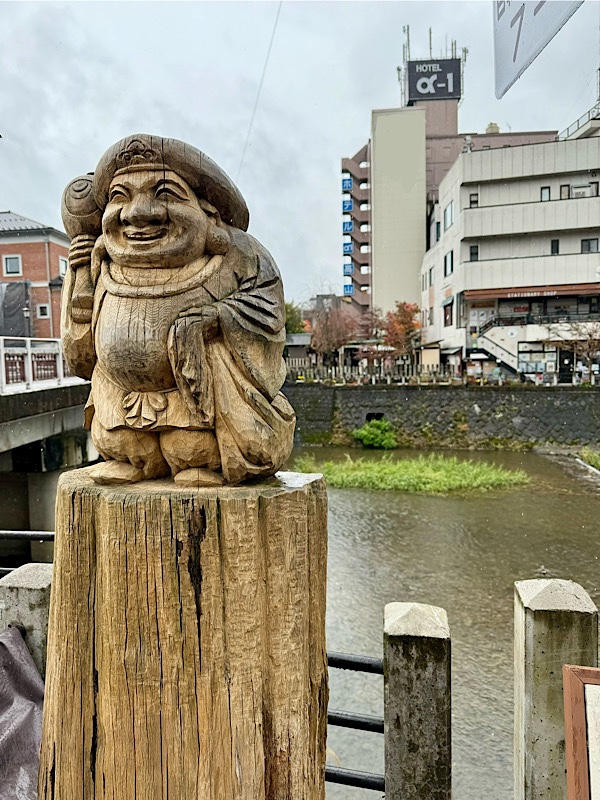 This guy actually represents Daikoku who is one of the Seven Gods of Fortune. This god is said to be a fusion of the mythological creator of Japan, known as Okuninushi no Mikoto, and an Indian God…. weird combo.
This guy actually represents Daikoku who is one of the Seven Gods of Fortune. This god is said to be a fusion of the mythological creator of Japan, known as Okuninushi no Mikoto, and an Indian God…. weird combo.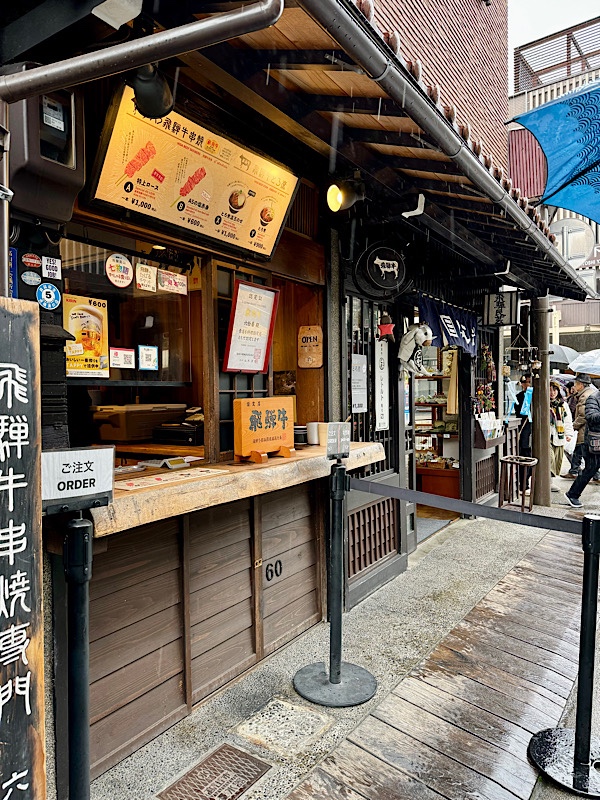 This is his, ‘I’m not working for ten minutes together, and there is beer and beef!’, face.
This is his, ‘I’m not working for ten minutes together, and there is beer and beef!’, face.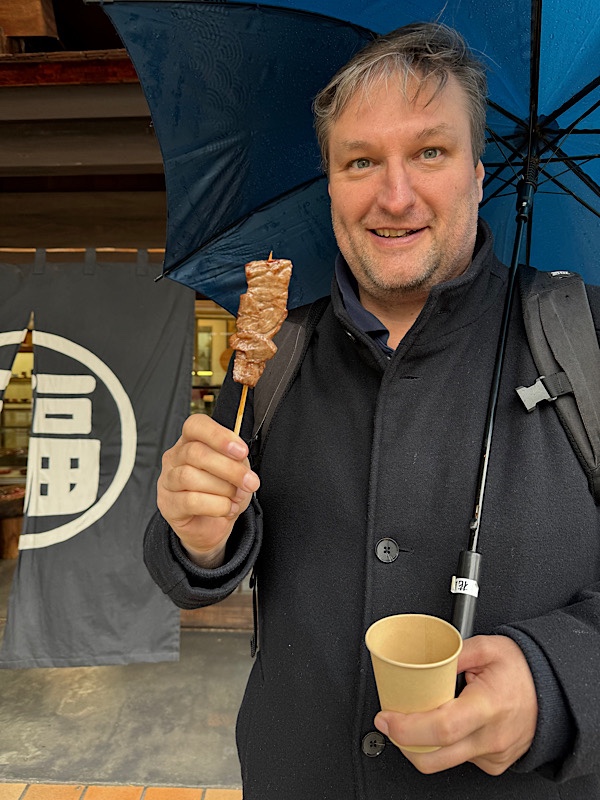
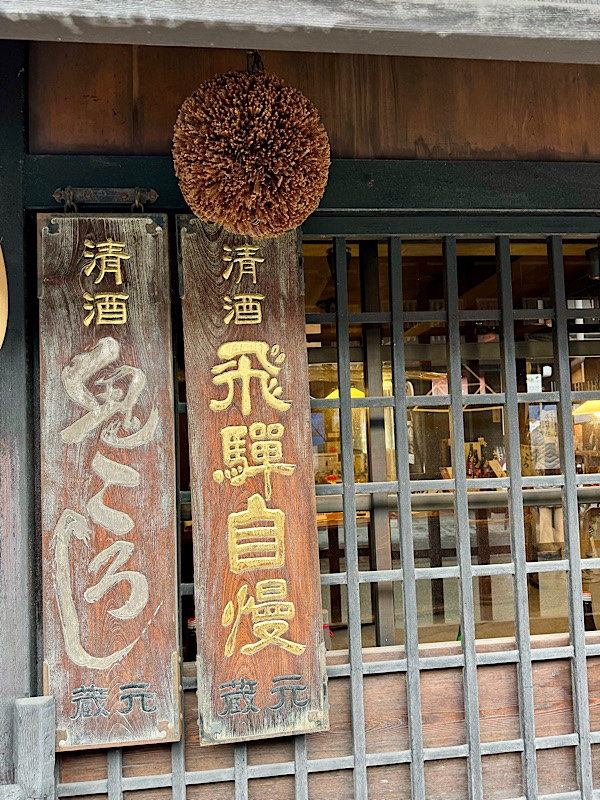 Why hello? This is where I parked my car!
Why hello? This is where I parked my car!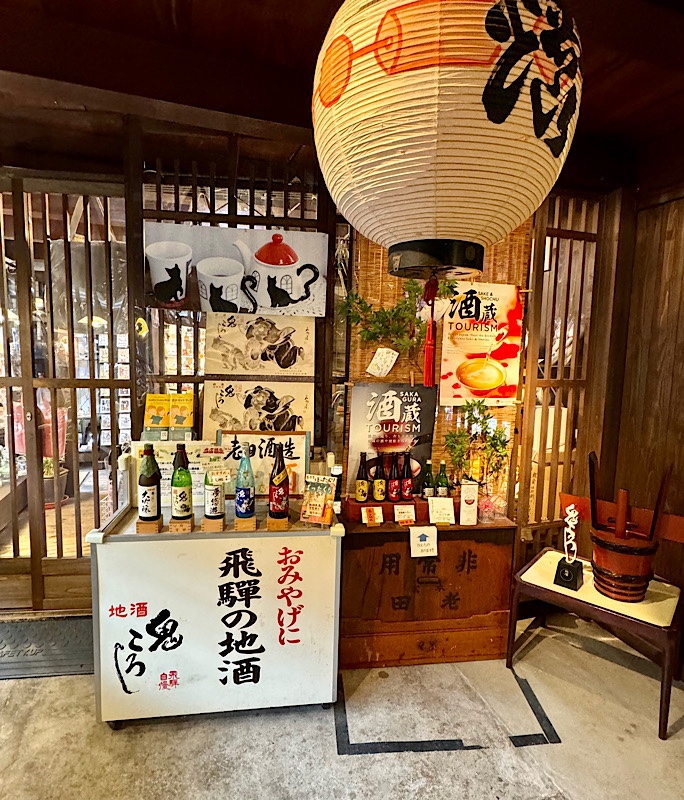
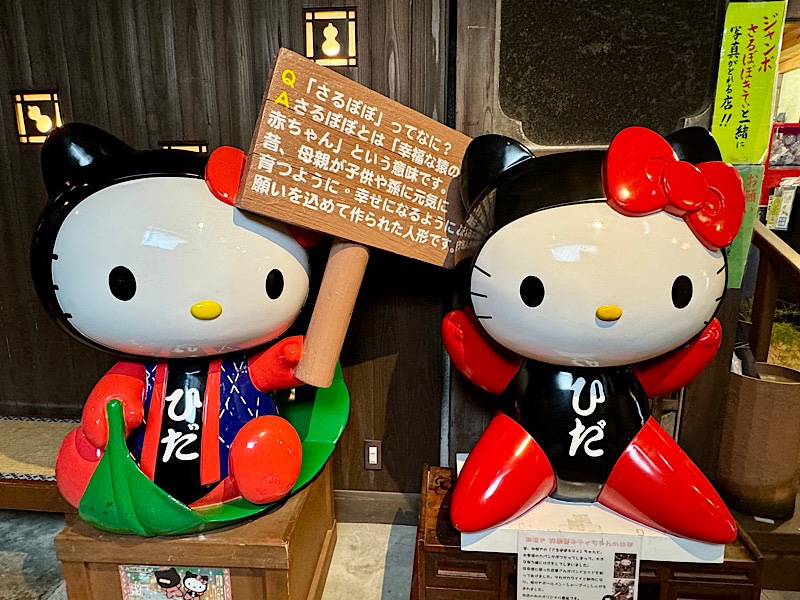
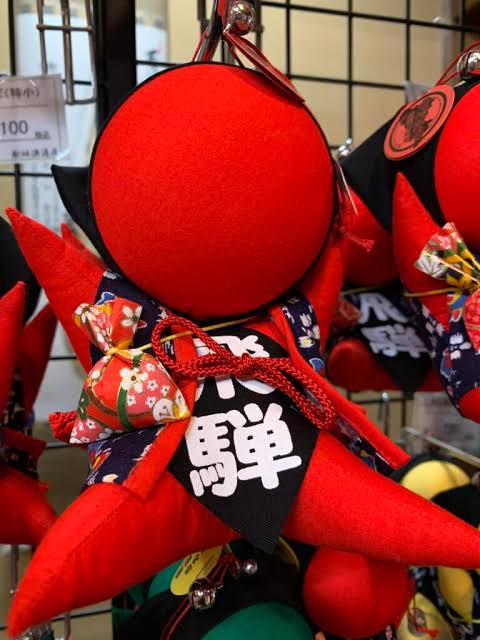 Anyway… what was Hello Kitty doing in the middle of my saké adventure, anyway? I think we accidentally wandered into saké heaven… there are so many breweries here that there are walking tours and special maps showing you which brewery is where.
Anyway… what was Hello Kitty doing in the middle of my saké adventure, anyway? I think we accidentally wandered into saké heaven… there are so many breweries here that there are walking tours and special maps showing you which brewery is where.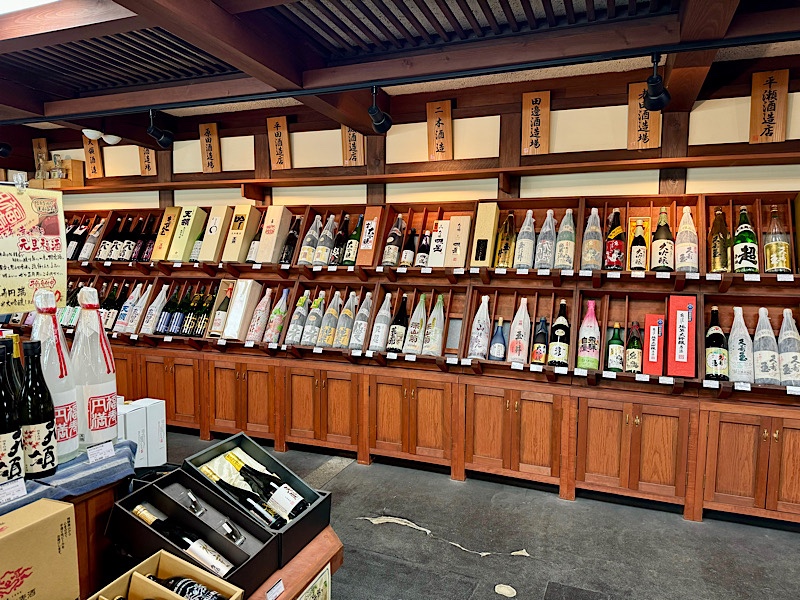
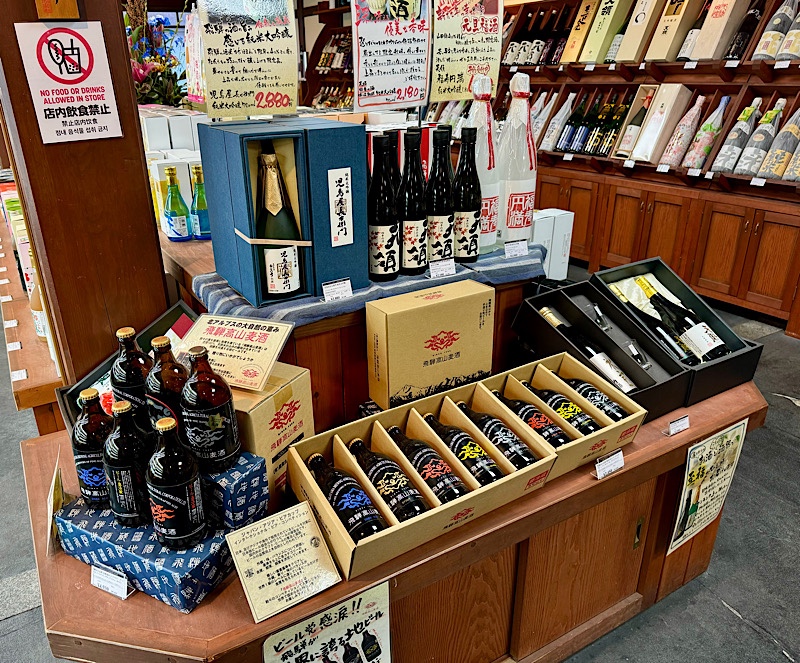
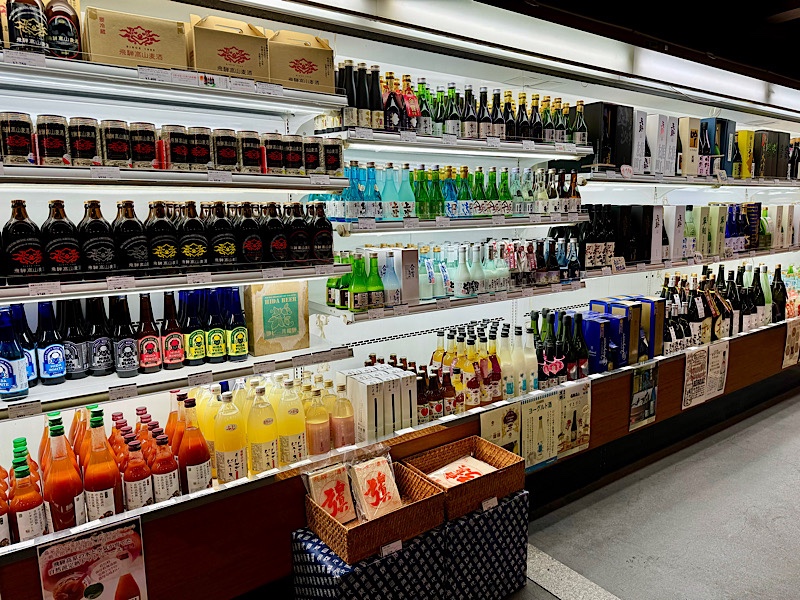
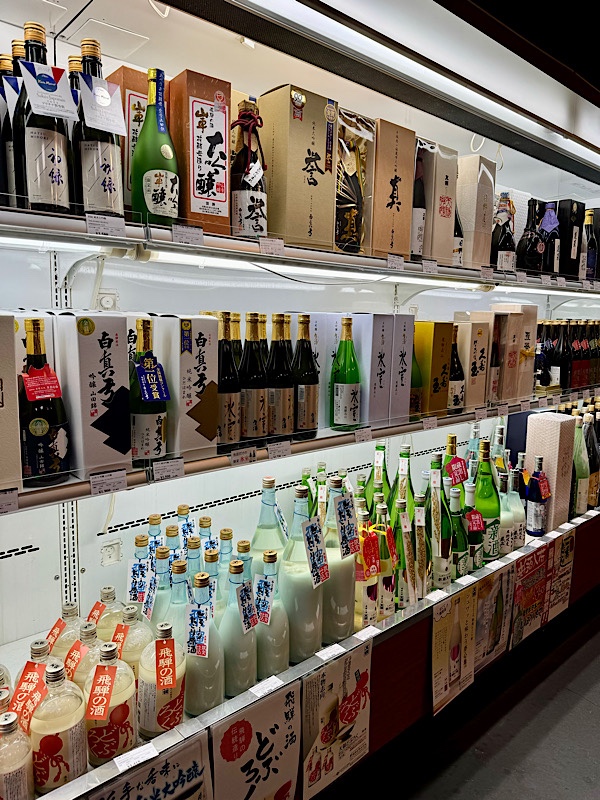
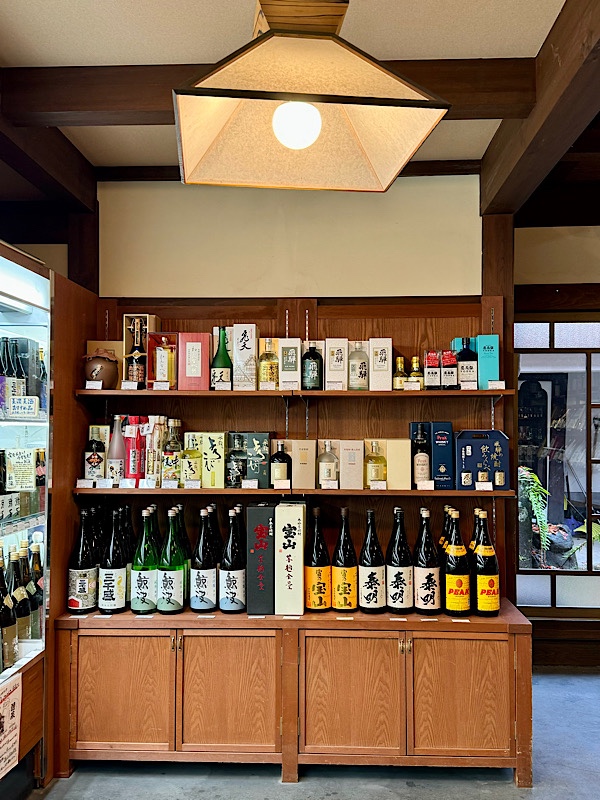
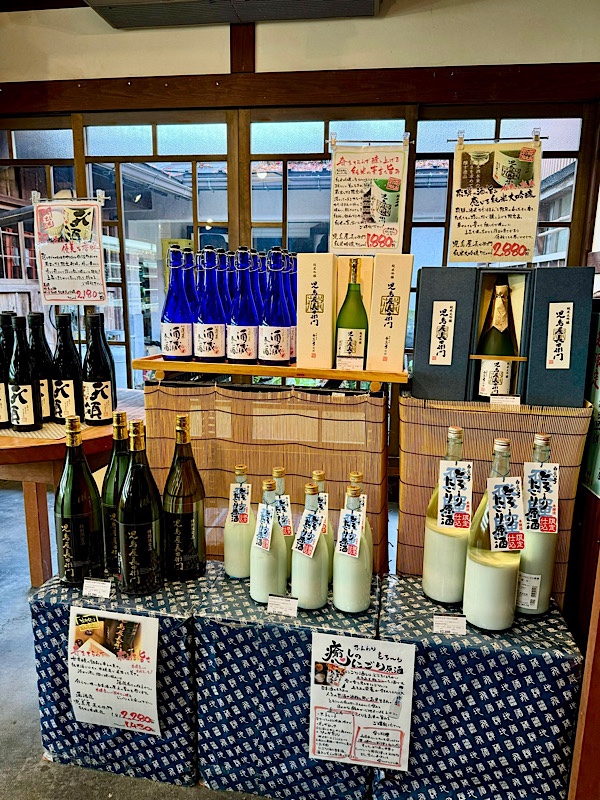
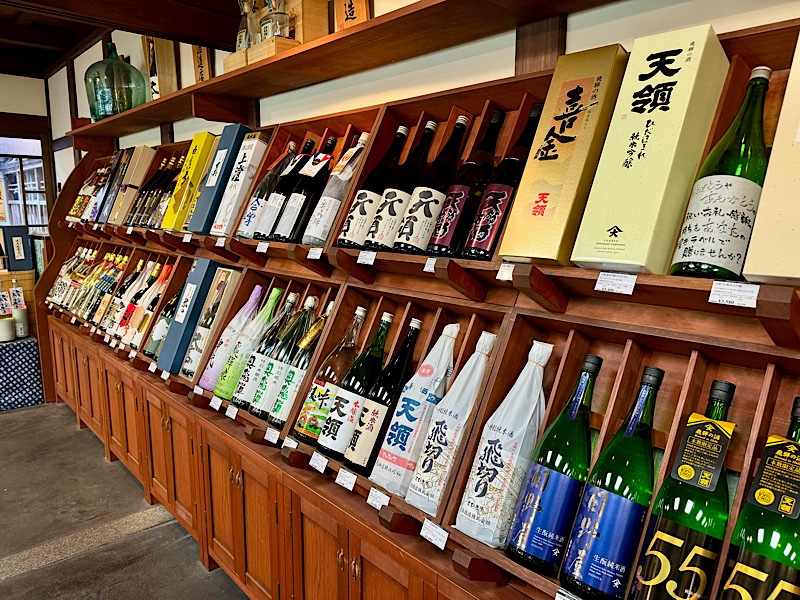
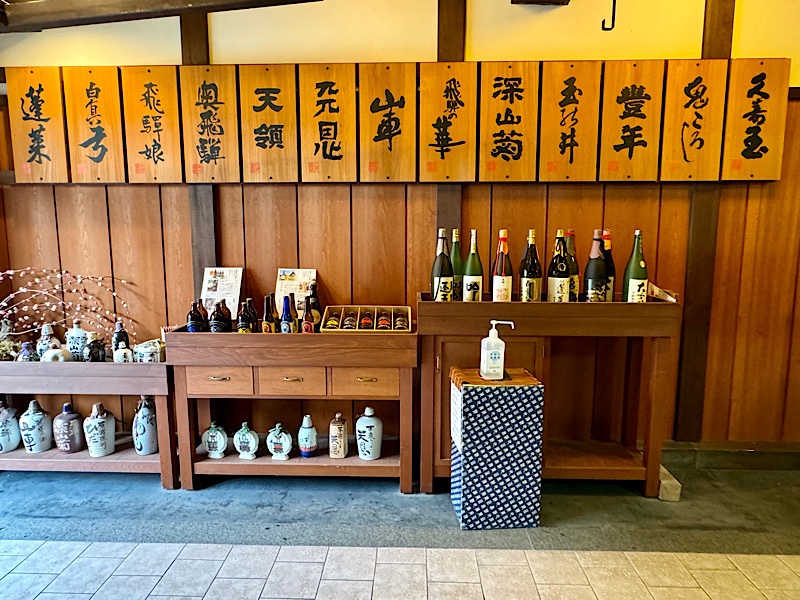 Okay, so that was just one Takayama saké store – it isn’t even one of their brewery store fronts! >.> This may take longer than we anticipated…
Okay, so that was just one Takayama saké store – it isn’t even one of their brewery store fronts! >.> This may take longer than we anticipated… 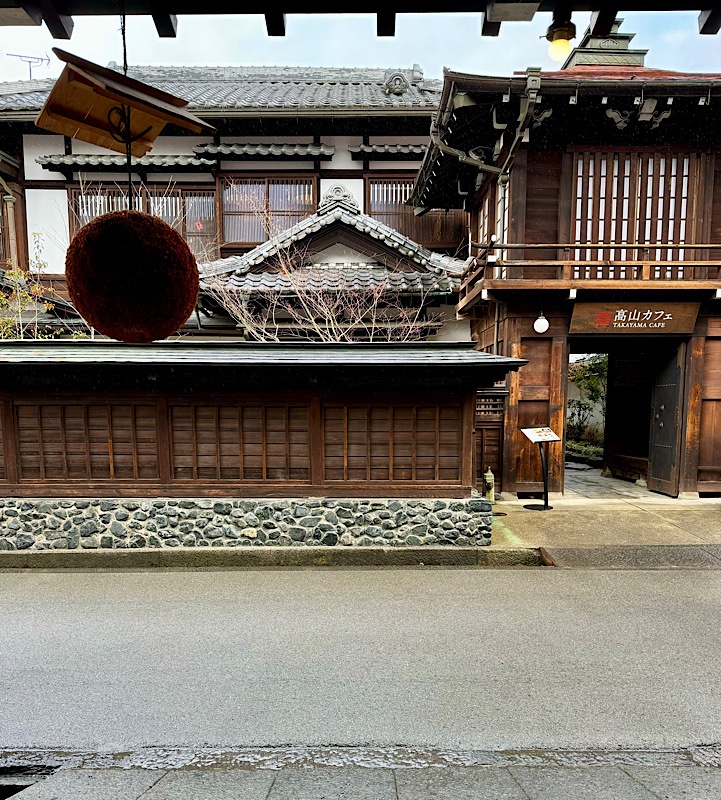 Oita Sake Brewery Kamisannomachi *(I think… by the time you get to the end of this you’ll see where the confusion is creeping in!)
Oita Sake Brewery Kamisannomachi *(I think… by the time you get to the end of this you’ll see where the confusion is creeping in!)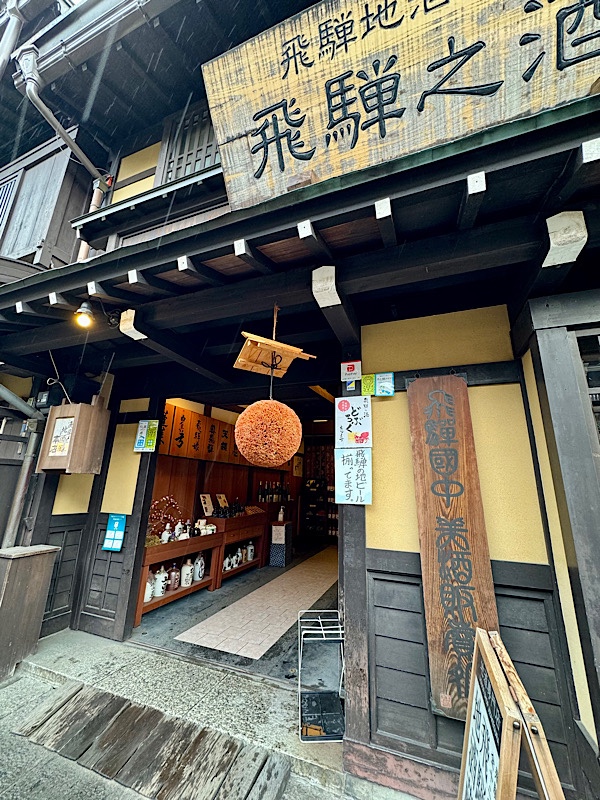 This place was directly across the street from the Takayama Cafe…e
This place was directly across the street from the Takayama Cafe…e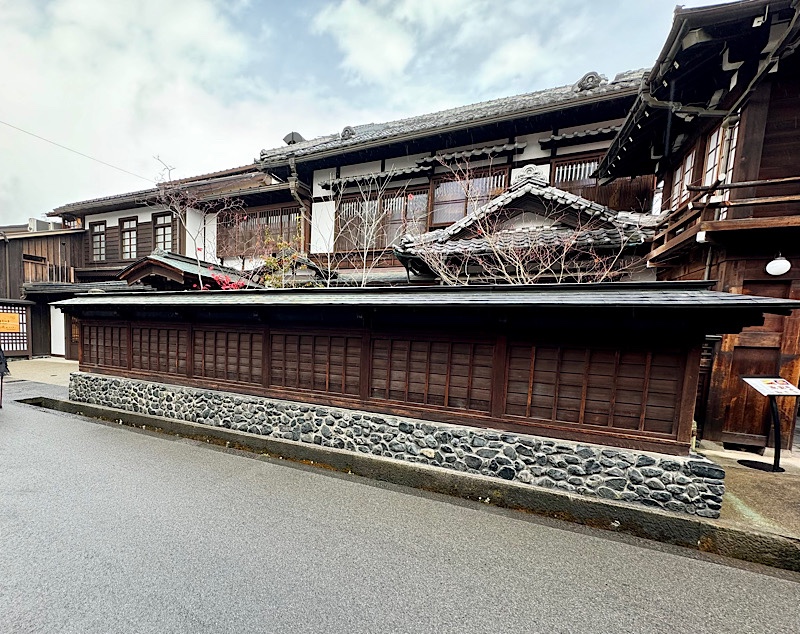
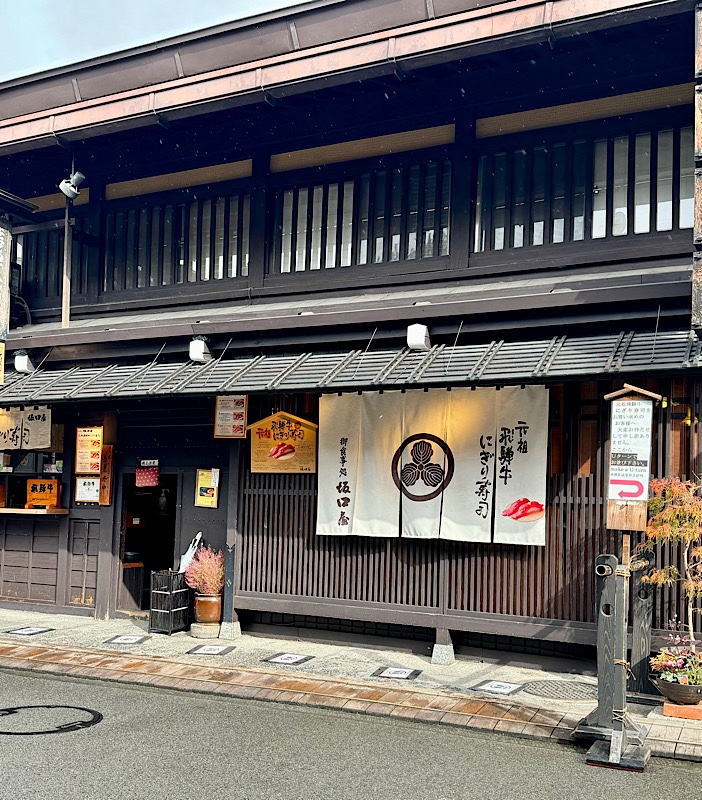
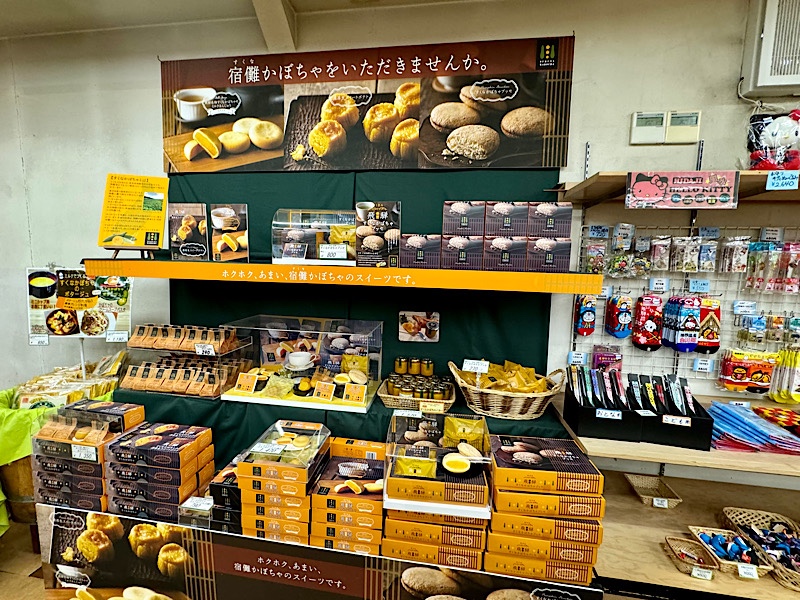
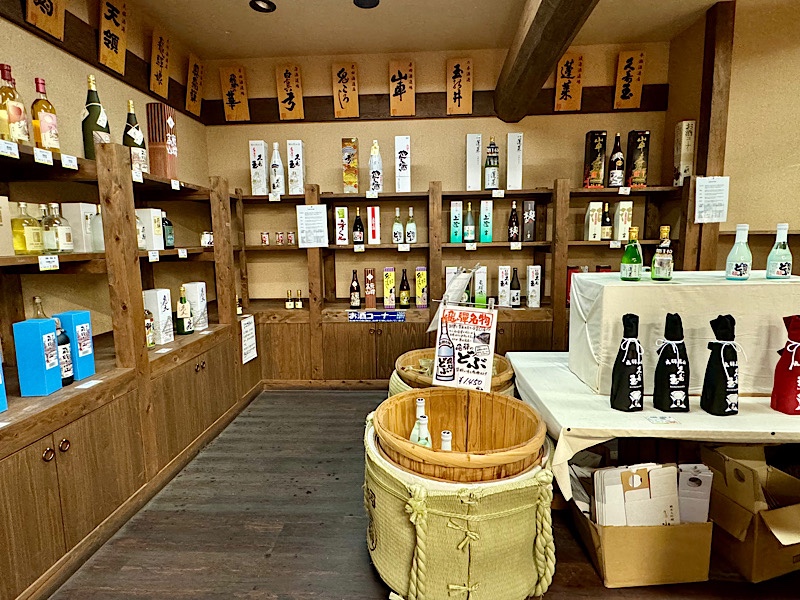
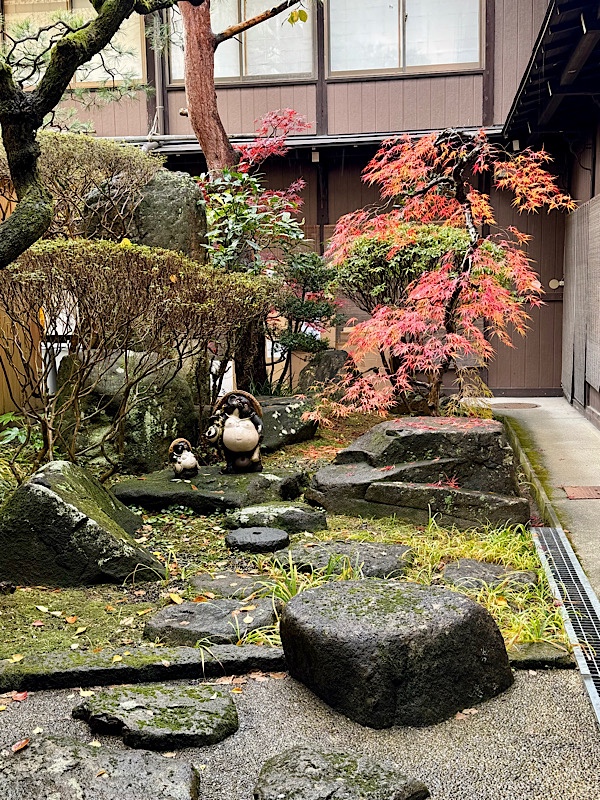
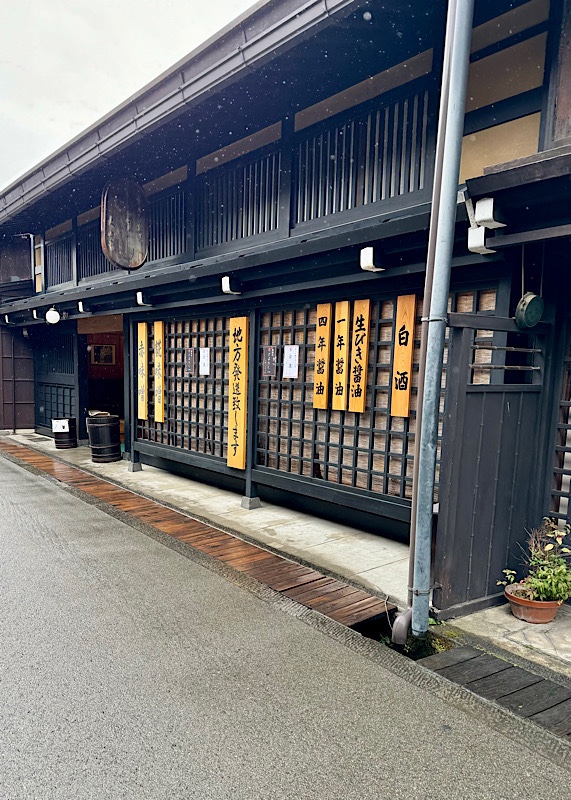
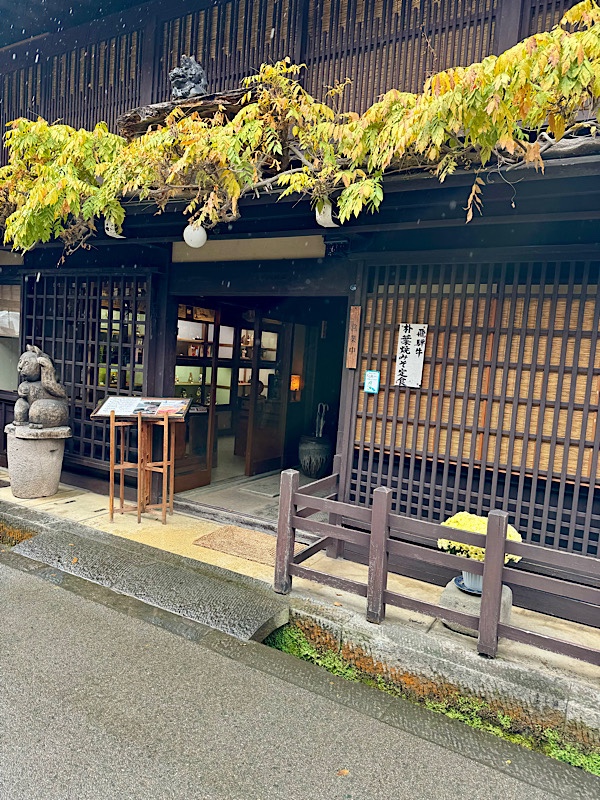 Funasaka Saké Brewery…
Funasaka Saké Brewery…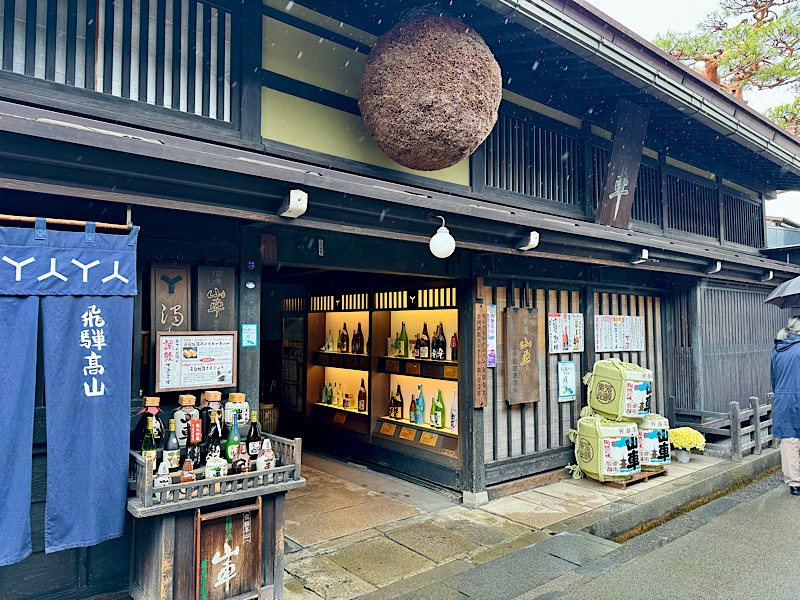 This place was great – you pay 450JPY for a little cup and you can fill it 12 times from 12 different bottles in their range that are kept in a big fridge you can access.
This place was great – you pay 450JPY for a little cup and you can fill it 12 times from 12 different bottles in their range that are kept in a big fridge you can access.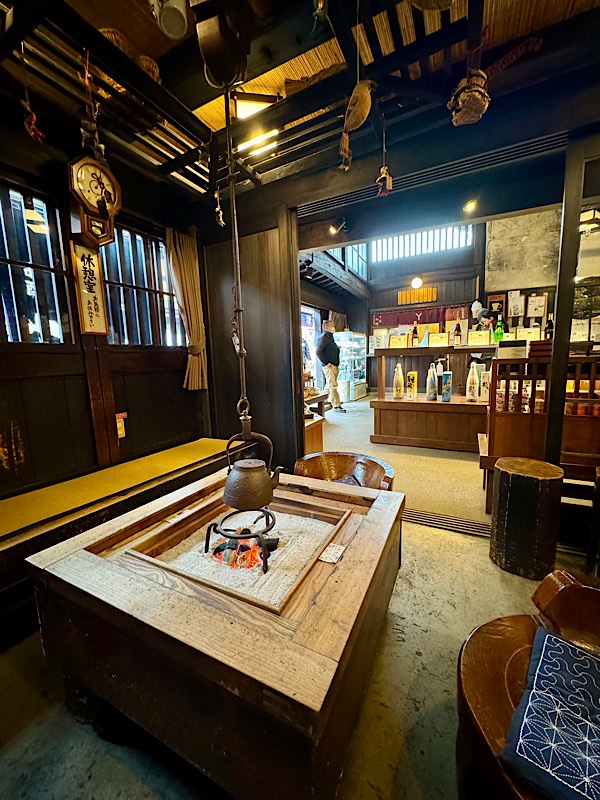
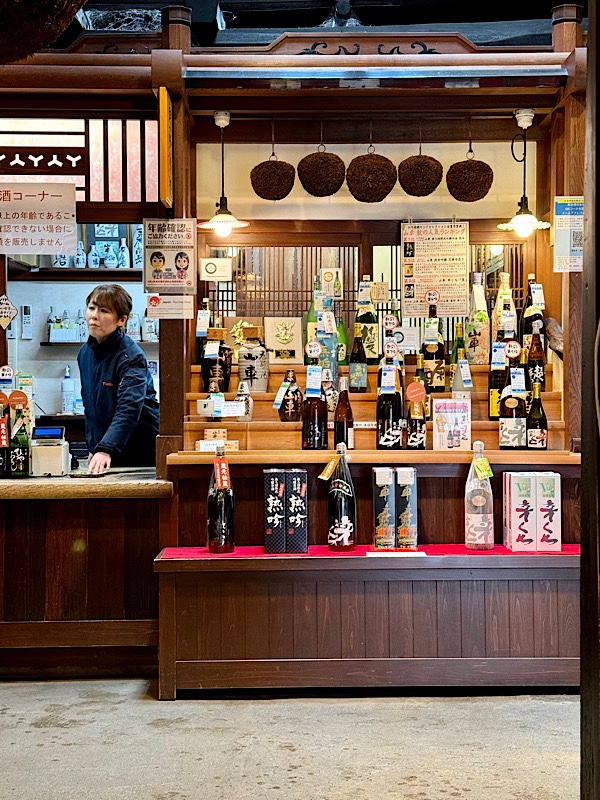
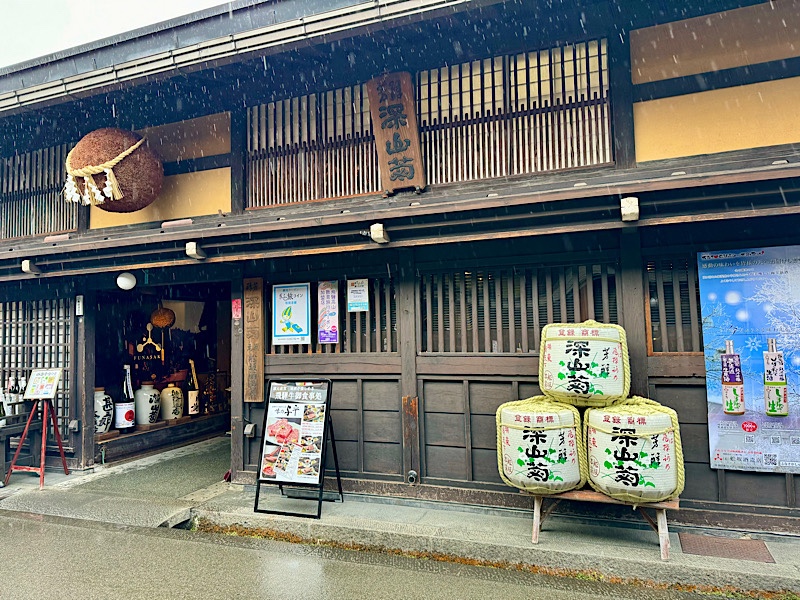
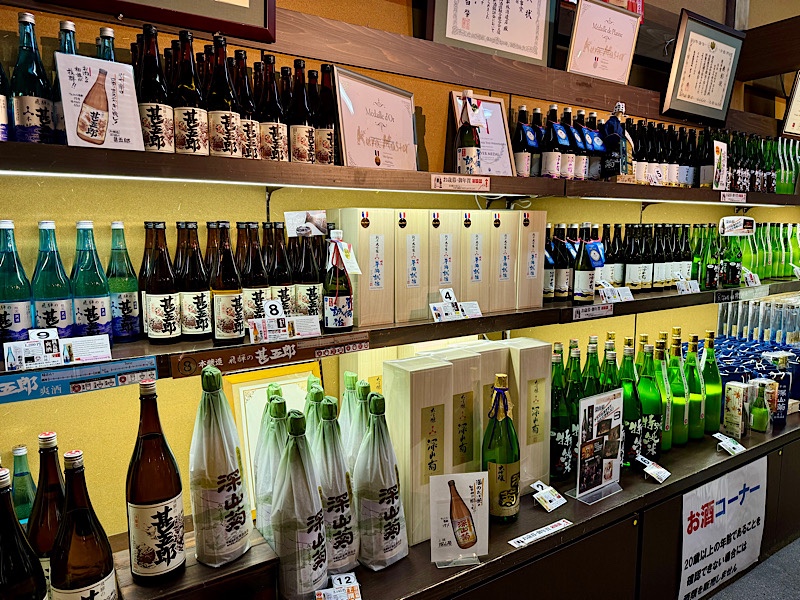
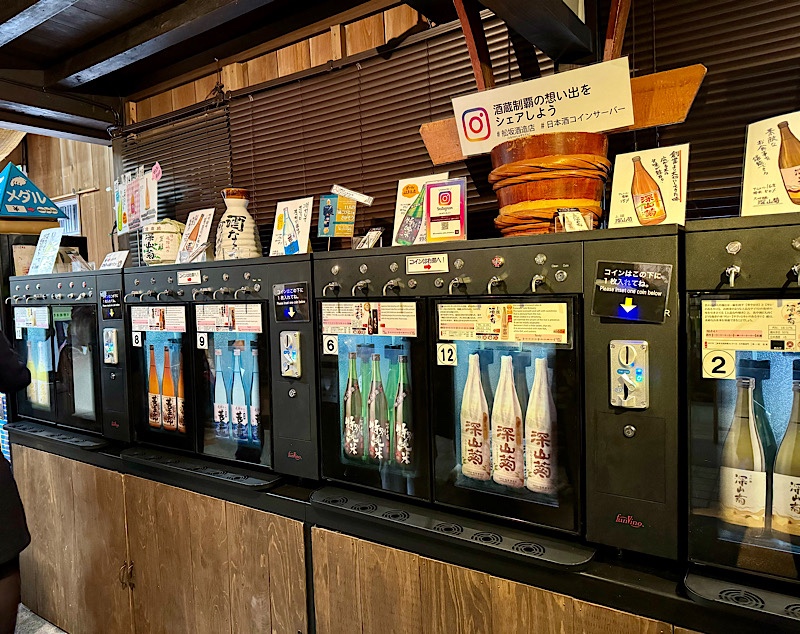
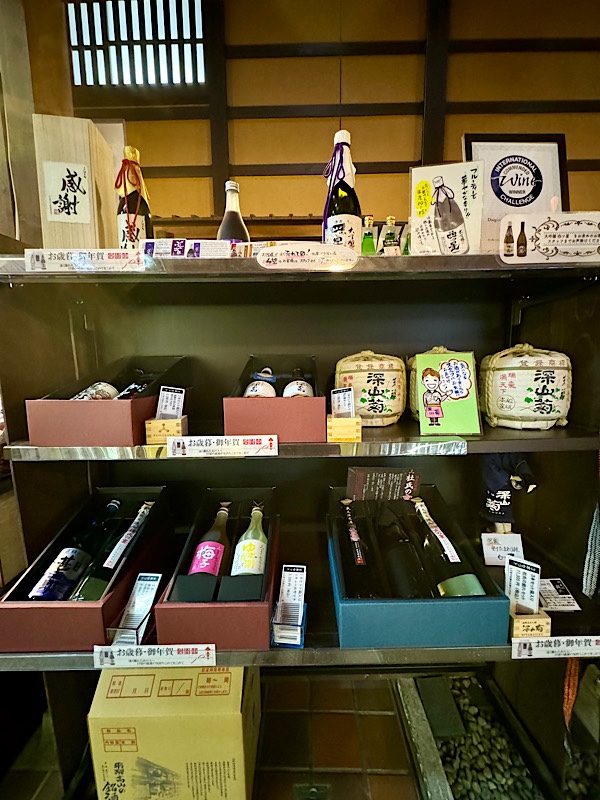 Matsuzaka Saké…
Matsuzaka Saké… 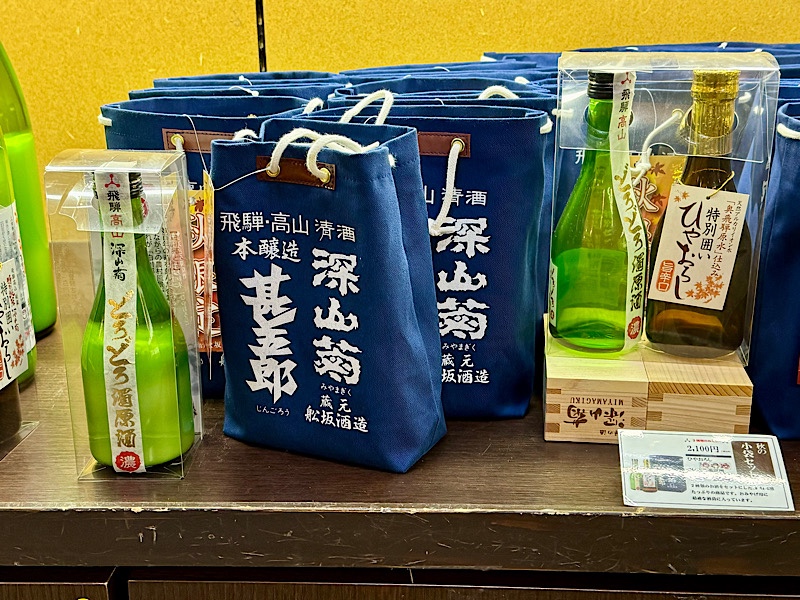 So many people lining up for the token machine!
So many people lining up for the token machine!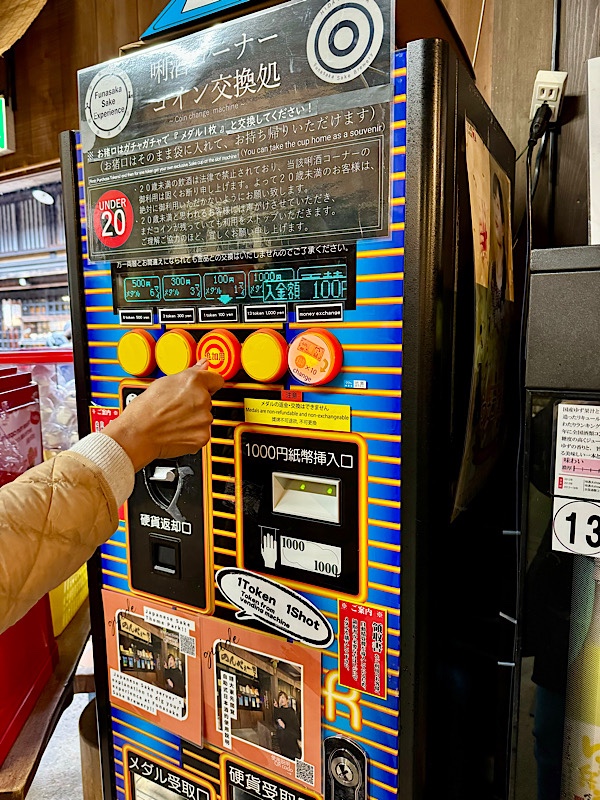
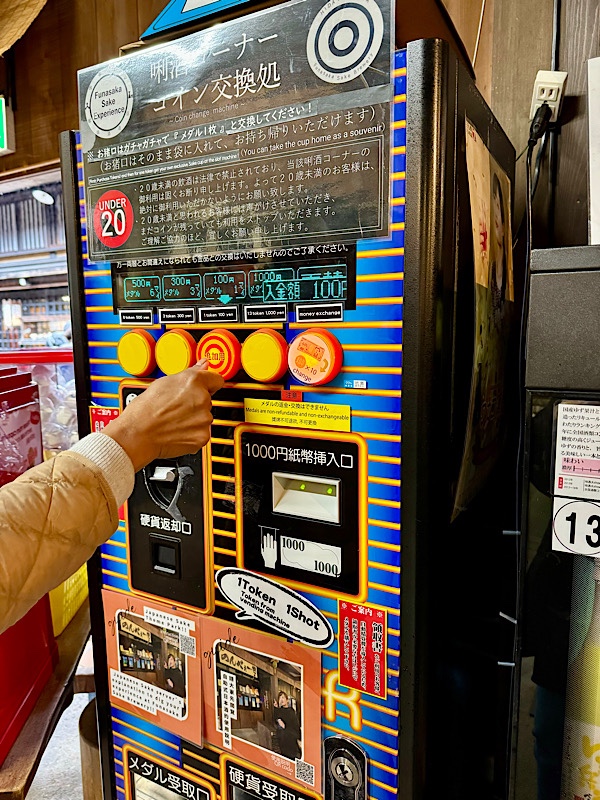 It was so easy to just hook into this… $10 later and you’re really quite toasted.
It was so easy to just hook into this… $10 later and you’re really quite toasted.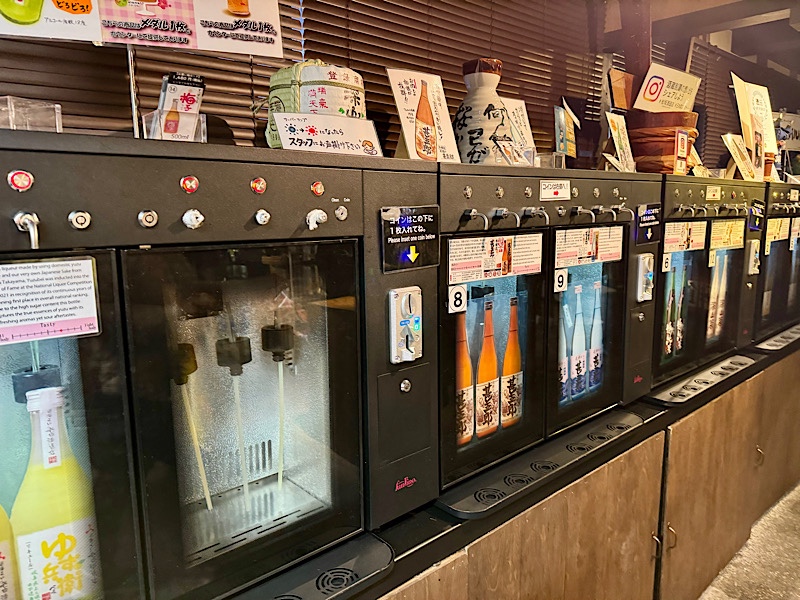 Quaffable stuff and well worth a stop!
Quaffable stuff and well worth a stop!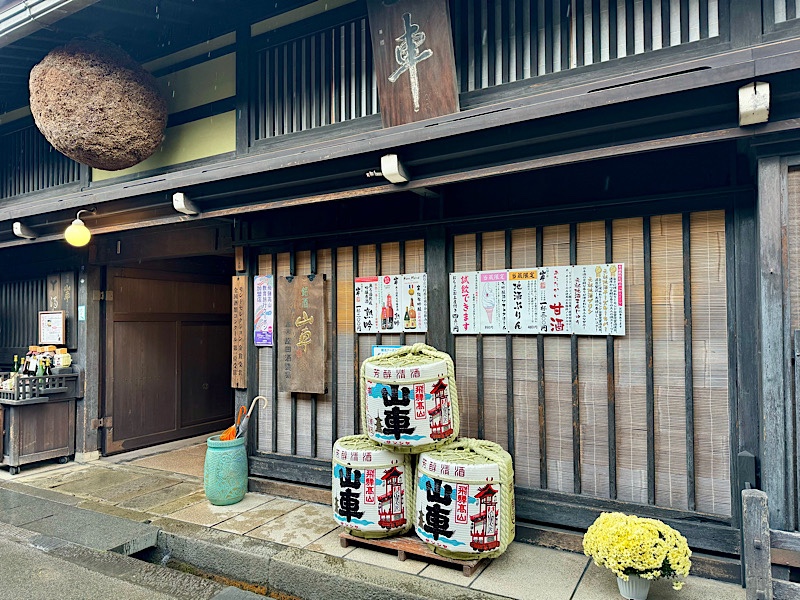 Ummm.. Kawashiri Brewery I think? :/
Ummm.. Kawashiri Brewery I think? :/ 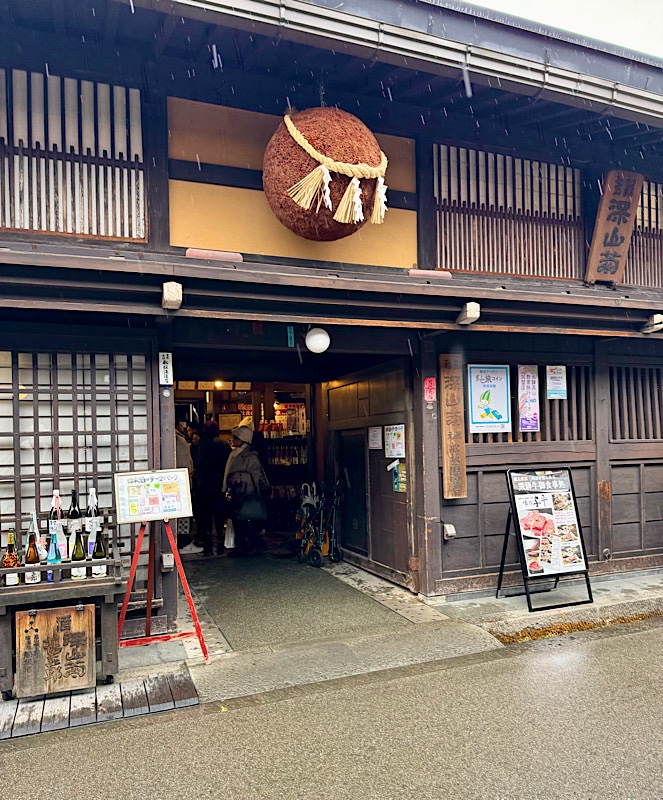 It was about this point that we decided we should get back to our accom as we had more work to do and I was rapidly ending up in a state where I wasn’t going to useful at all!
It was about this point that we decided we should get back to our accom as we had more work to do and I was rapidly ending up in a state where I wasn’t going to useful at all!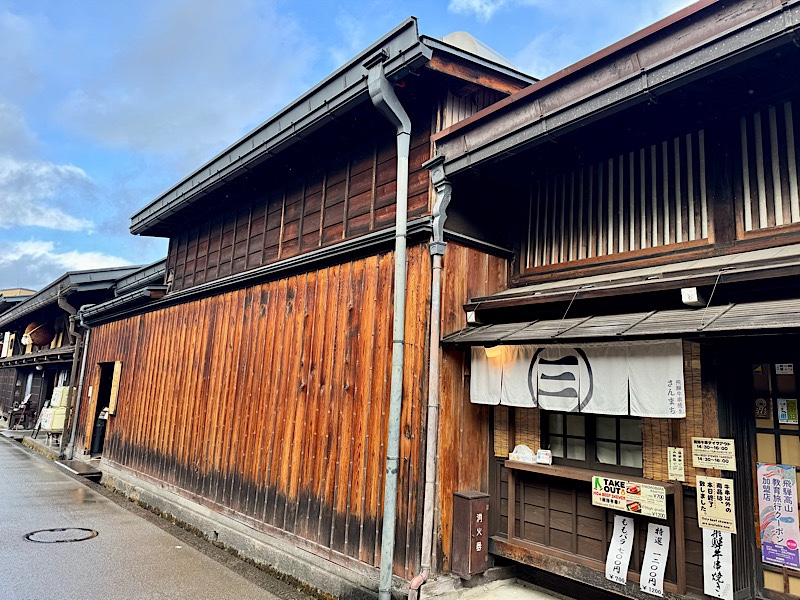
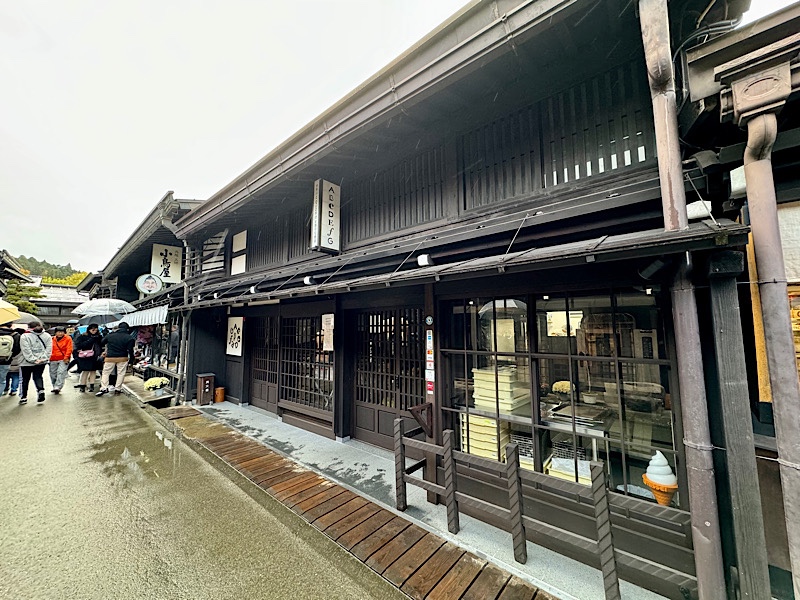
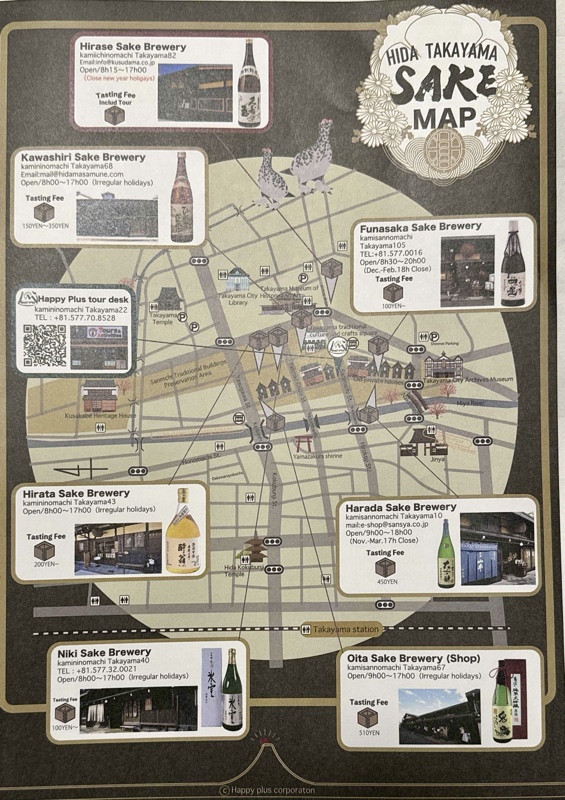
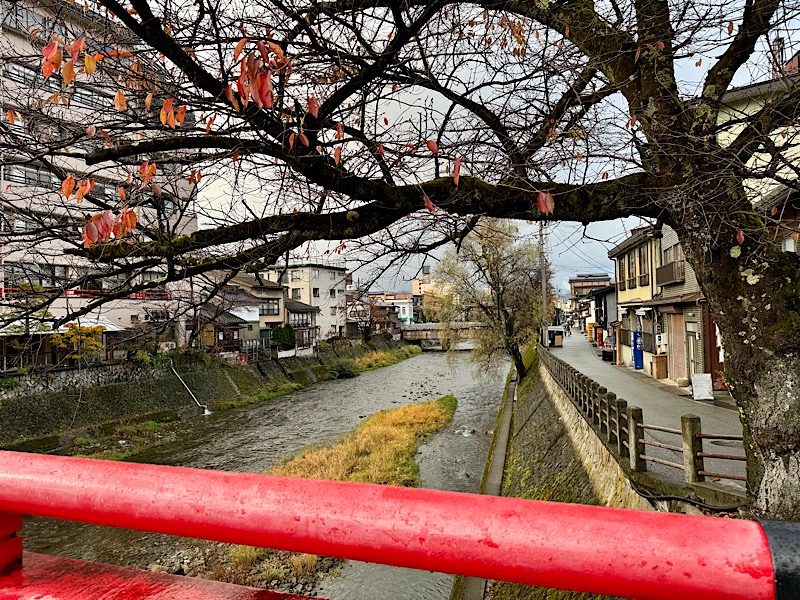
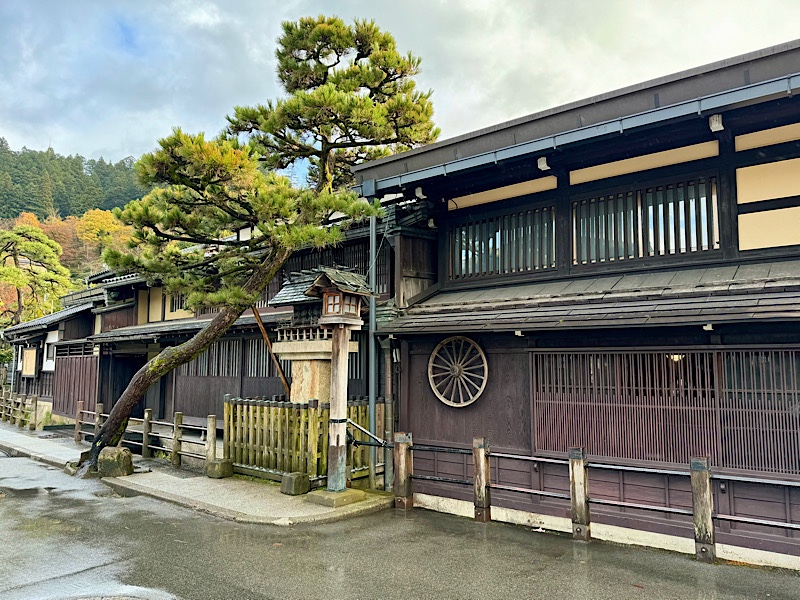 Gorgeous little town with heaps to see. And we didn’t even touch on their weird retro museums and other offerings.
Gorgeous little town with heaps to see. And we didn’t even touch on their weird retro museums and other offerings.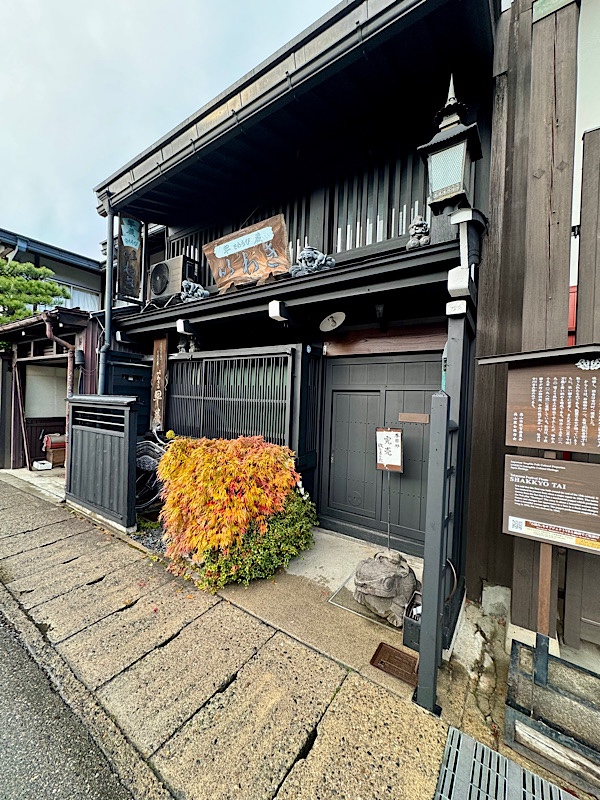
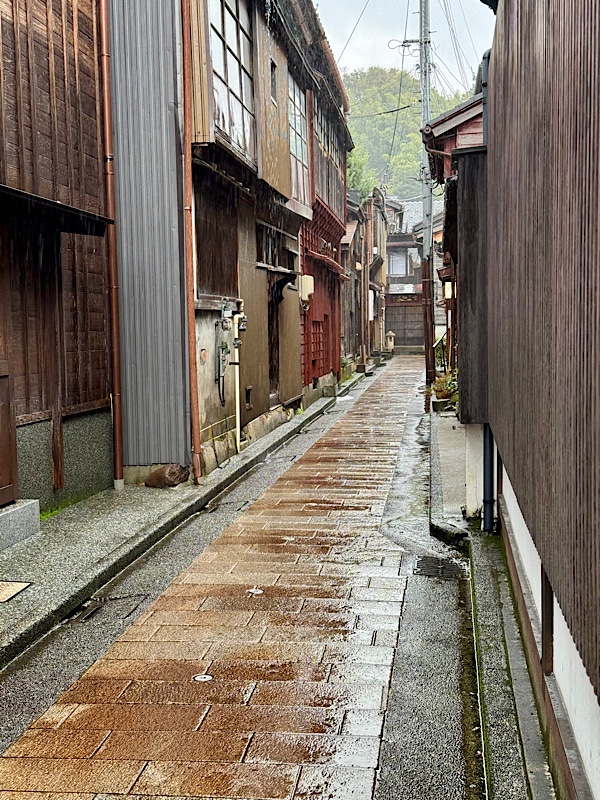
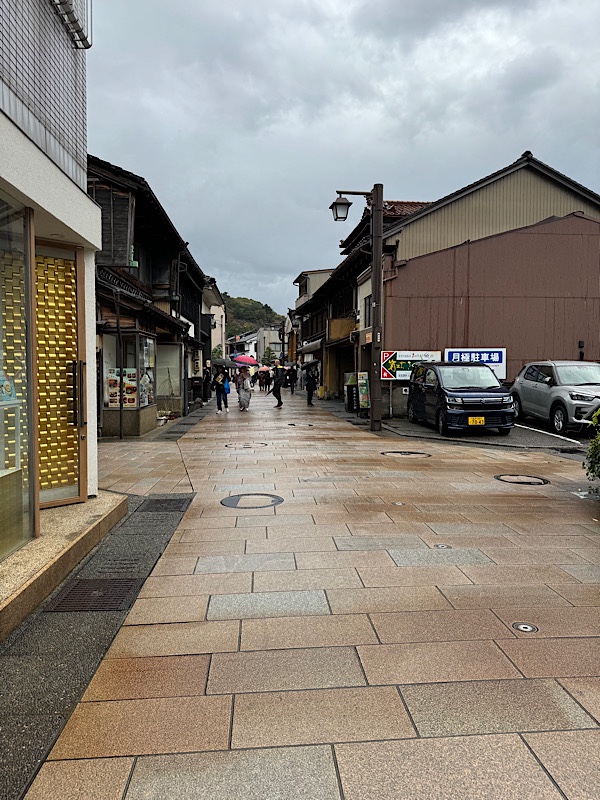
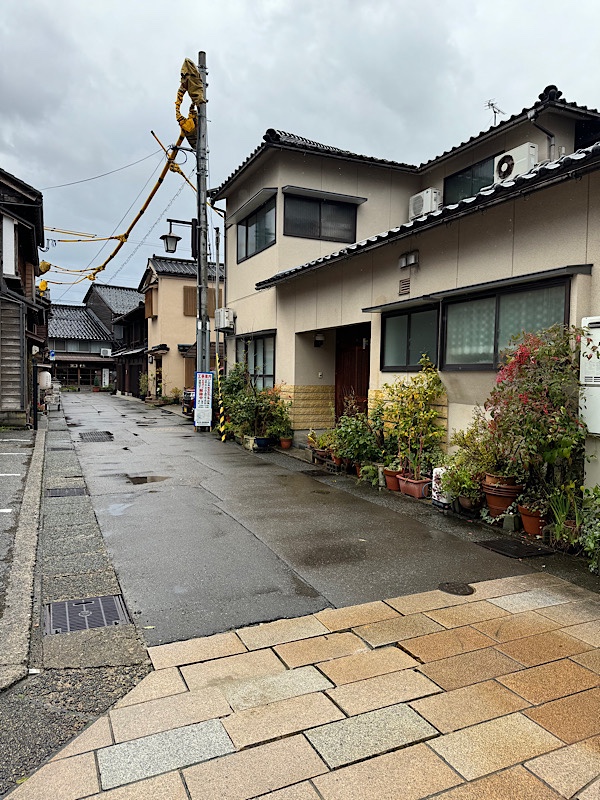
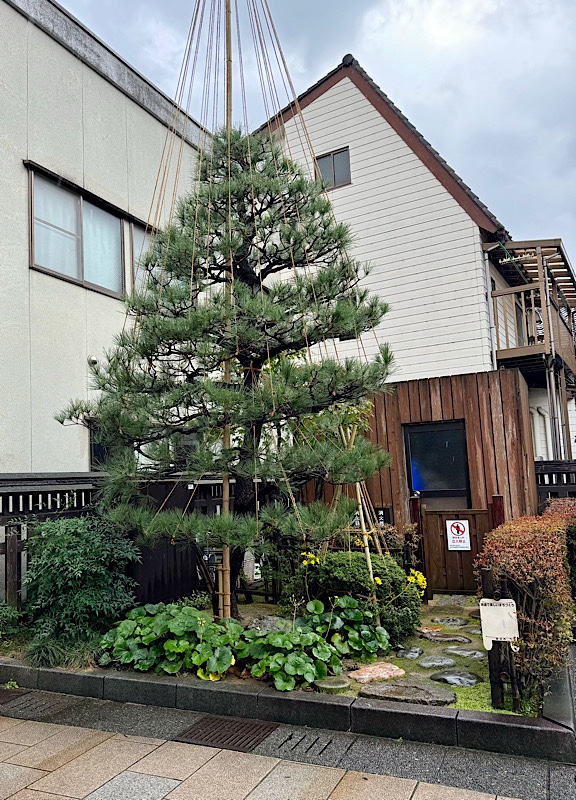 No, not shops that sell actual gold like the Ponte Vecchio or something, but things covered in ‘gold’… mostly craft items and beauty products either that are either guided in, or contain gold leaf. And, somewhat weirdly loads of food products with edible gold leaf on them – though it’s anybody’s guess why as gold leaf doesn’t seem to have a great deal of taste about it. **shrug**
No, not shops that sell actual gold like the Ponte Vecchio or something, but things covered in ‘gold’… mostly craft items and beauty products either that are either guided in, or contain gold leaf. And, somewhat weirdly loads of food products with edible gold leaf on them – though it’s anybody’s guess why as gold leaf doesn’t seem to have a great deal of taste about it. **shrug**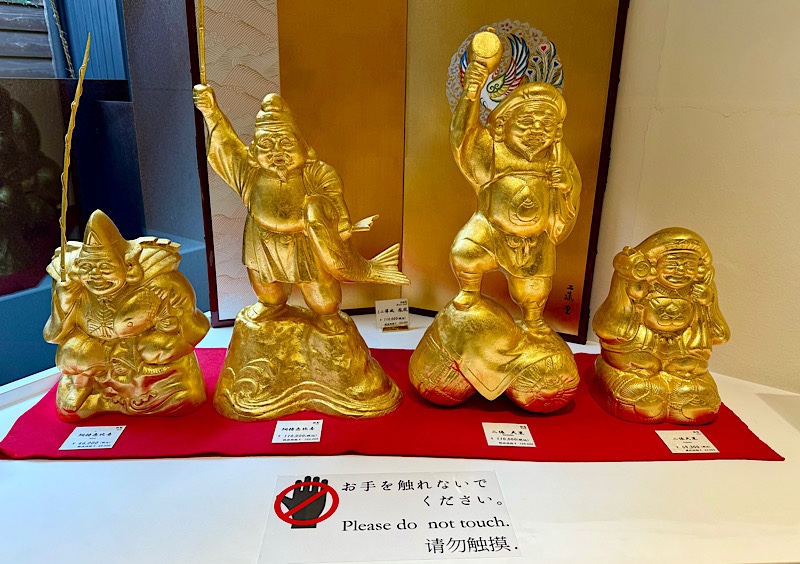 And less of the traditional Japanese lacquerware etc…
And less of the traditional Japanese lacquerware etc…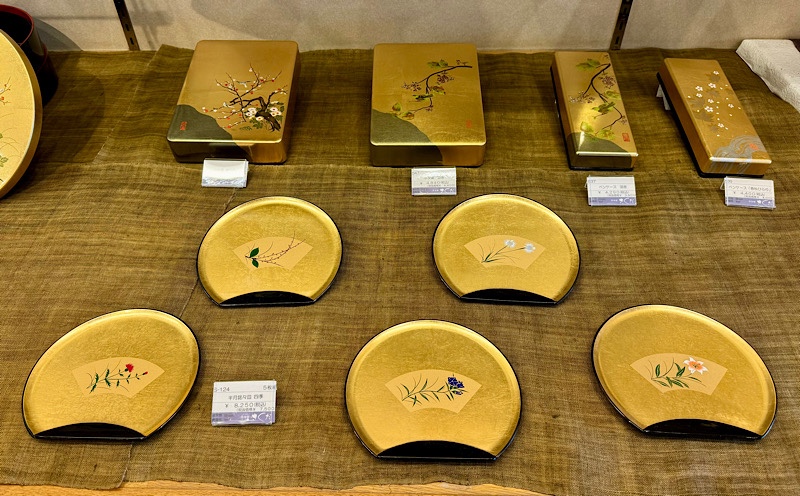 There is quite on lot of hand blown glass products with gold accents of course that seem really popular and always with the saké sets – we’ve noticed that since our last visit to Japan in 2019, there seems to be a trend towards saké jugs shaped like this one, rather than the traditional little carafes that you see used in restaurants a lot. They seem quite neat and I dare say have a much higher capacity than the small carafes, which I imagine is what is putting the restaurant industry off adopting them. 🙂
There is quite on lot of hand blown glass products with gold accents of course that seem really popular and always with the saké sets – we’ve noticed that since our last visit to Japan in 2019, there seems to be a trend towards saké jugs shaped like this one, rather than the traditional little carafes that you see used in restaurants a lot. They seem quite neat and I dare say have a much higher capacity than the small carafes, which I imagine is what is putting the restaurant industry off adopting them. 🙂 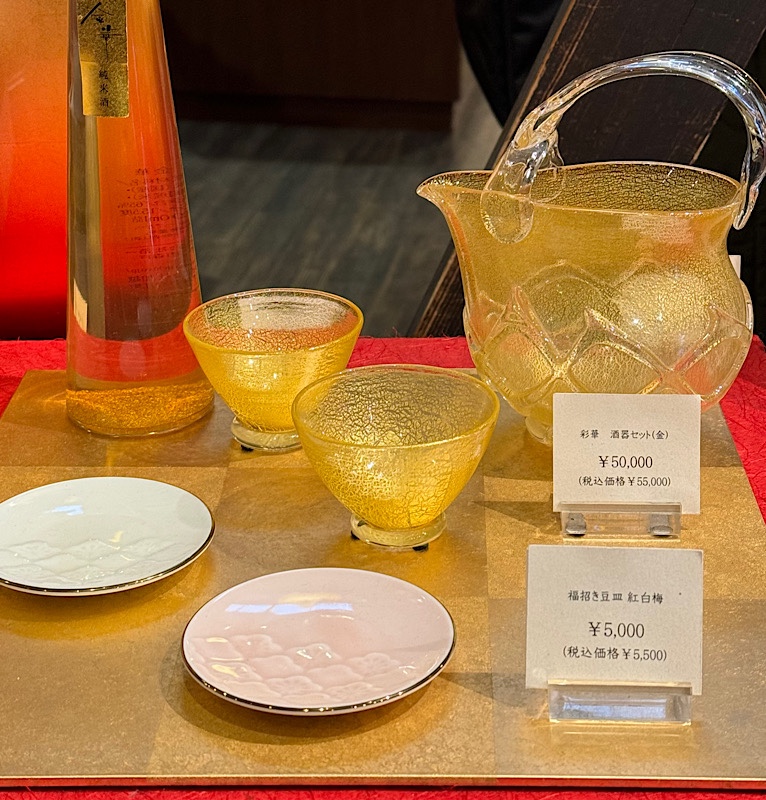 I mostly came here to hunt for some new chopsticks. I bought four sets of lovely ebony chopsticks last time we were in Kanazawa and they are the singly most useful and used souvenir object I think I have bought back with me from any trip ever… but so far I haven’t seen any designs that took my eye for every day use at home.
I mostly came here to hunt for some new chopsticks. I bought four sets of lovely ebony chopsticks last time we were in Kanazawa and they are the singly most useful and used souvenir object I think I have bought back with me from any trip ever… but so far I haven’t seen any designs that took my eye for every day use at home.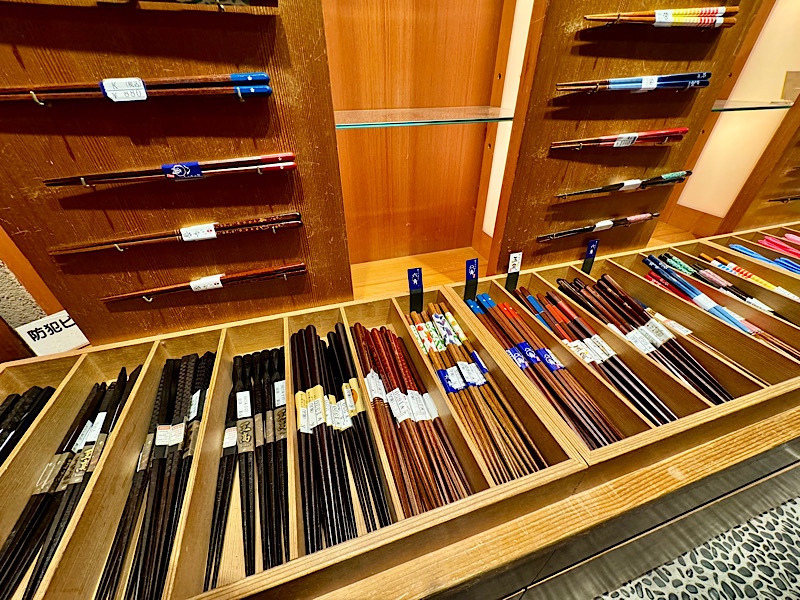 The gold leaf, gold powder body products are destined to remain a mystery to me, though. I was Google Translating posters and signage like a mo-fo today, and do you think I could find anything that was able to explain ‘why’ having gold in your face creams, lotions, potions and actual face masks was supposed to be good for your skin? Nope. Not so much. The one store person I asked what the gold is good for, responded by telling me it is ‘very skin luxuriating for your complexion’. So… yeah. I guess it looks pretty and seems super fancy is the reason for it?
The gold leaf, gold powder body products are destined to remain a mystery to me, though. I was Google Translating posters and signage like a mo-fo today, and do you think I could find anything that was able to explain ‘why’ having gold in your face creams, lotions, potions and actual face masks was supposed to be good for your skin? Nope. Not so much. The one store person I asked what the gold is good for, responded by telling me it is ‘very skin luxuriating for your complexion’. So… yeah. I guess it looks pretty and seems super fancy is the reason for it?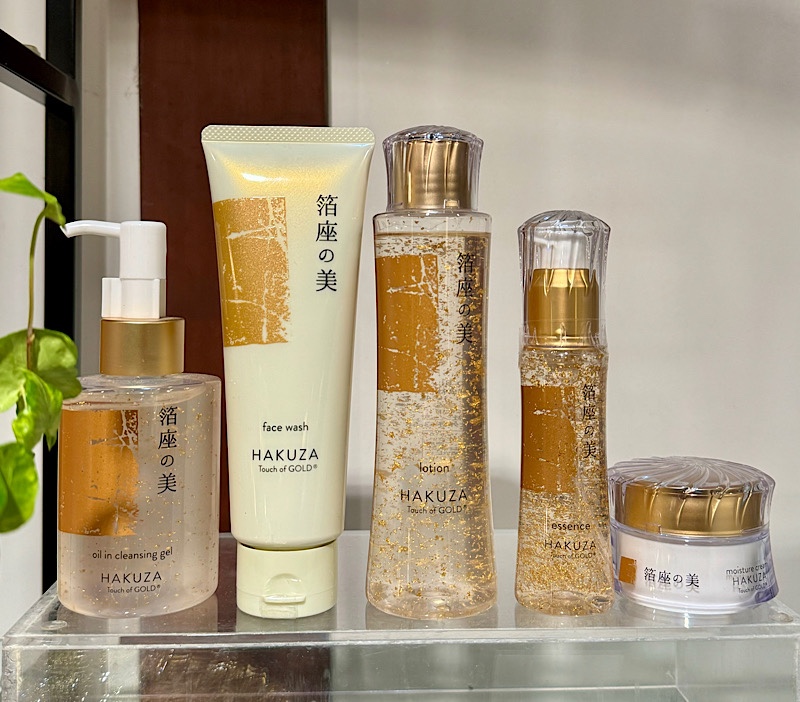
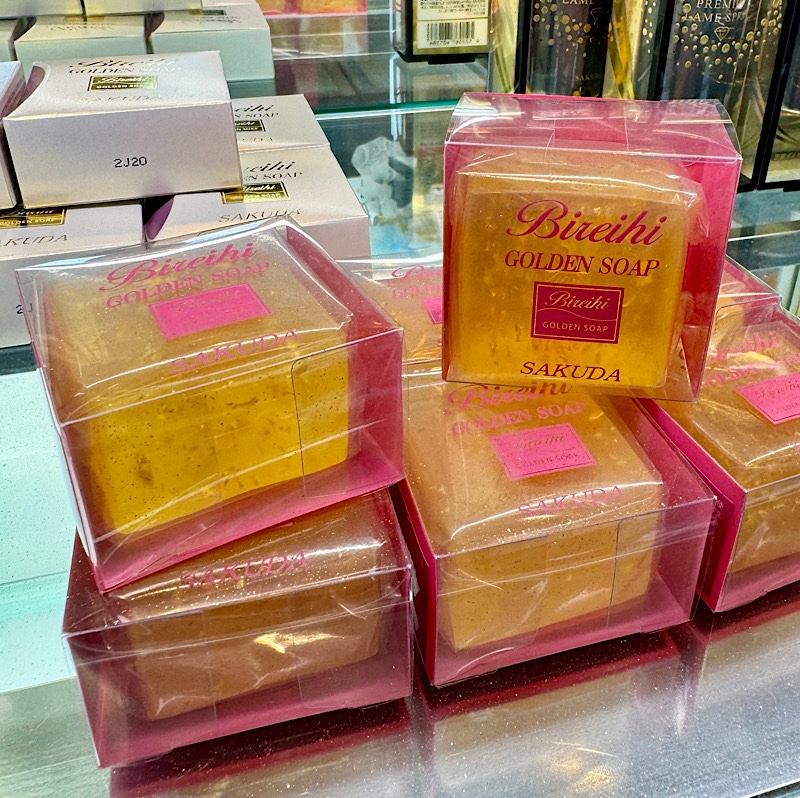
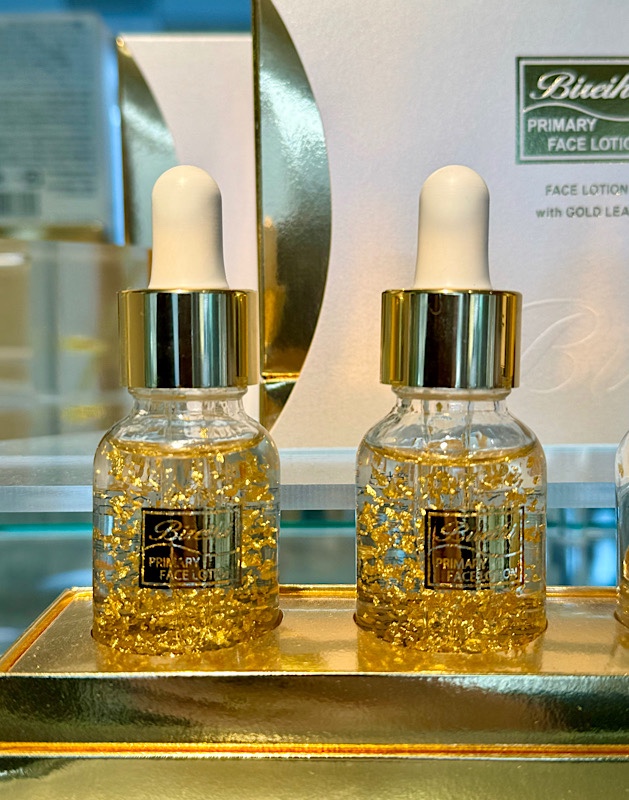
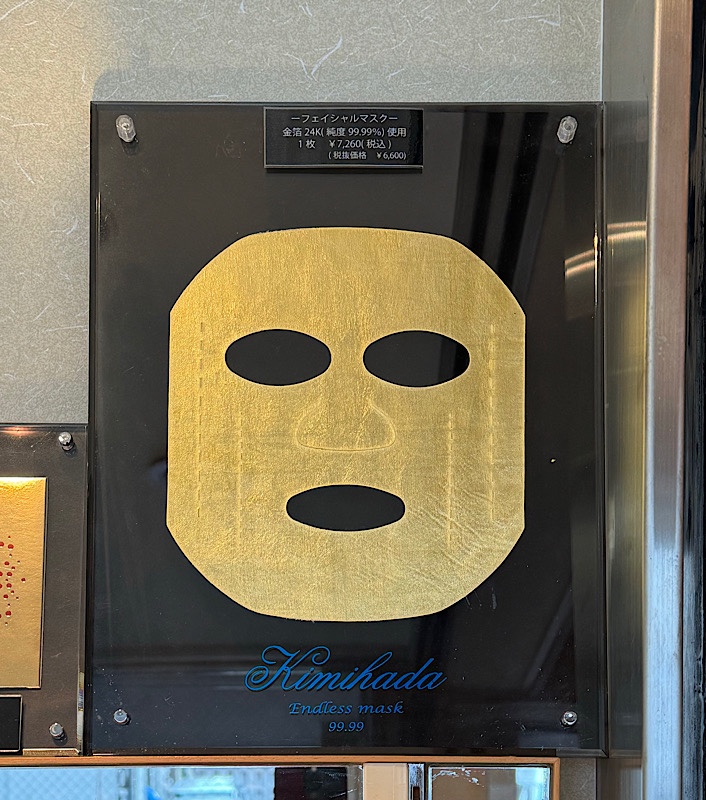

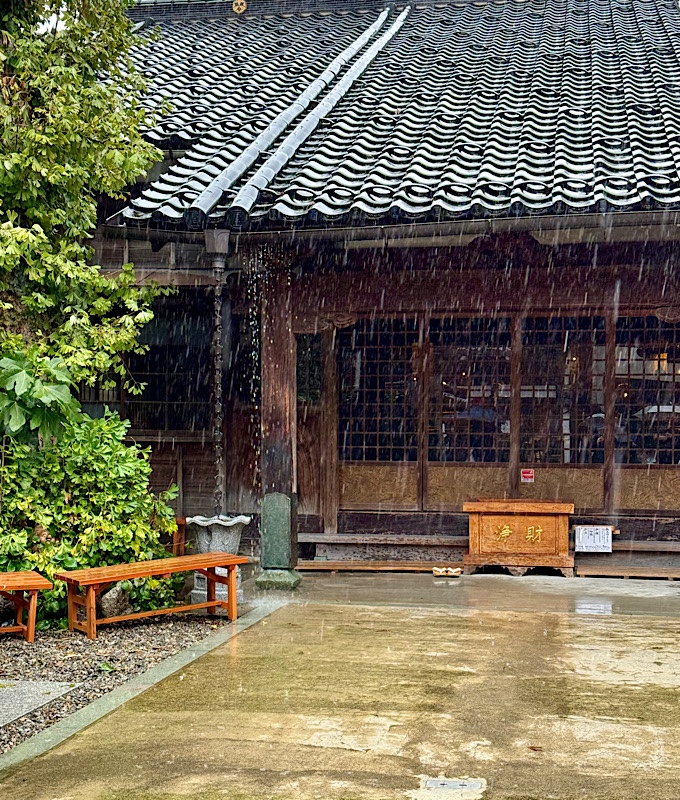
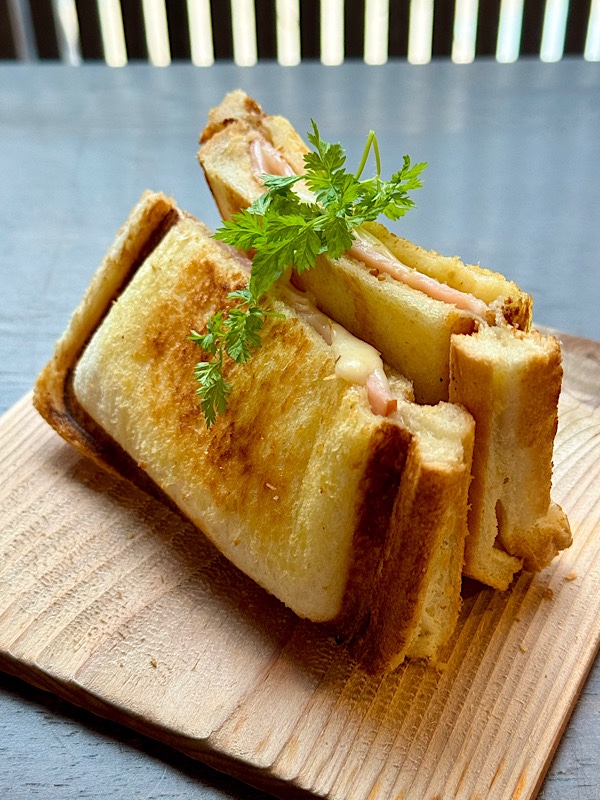
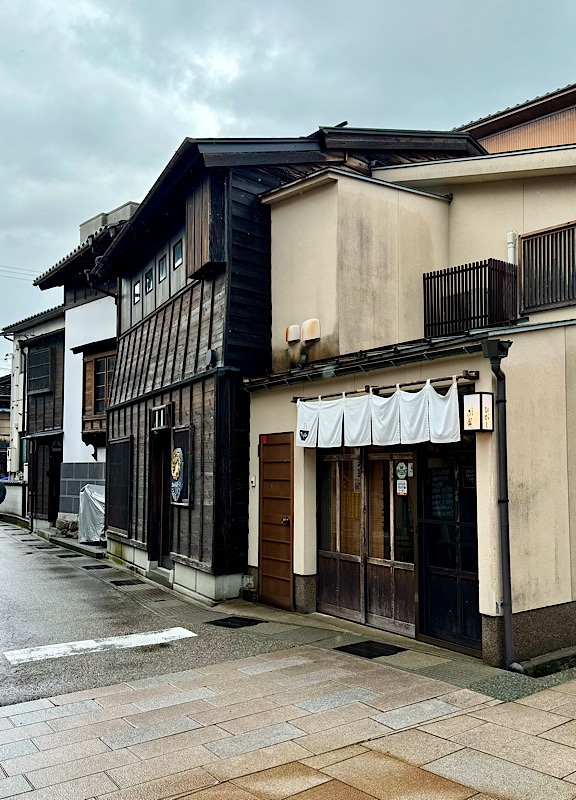
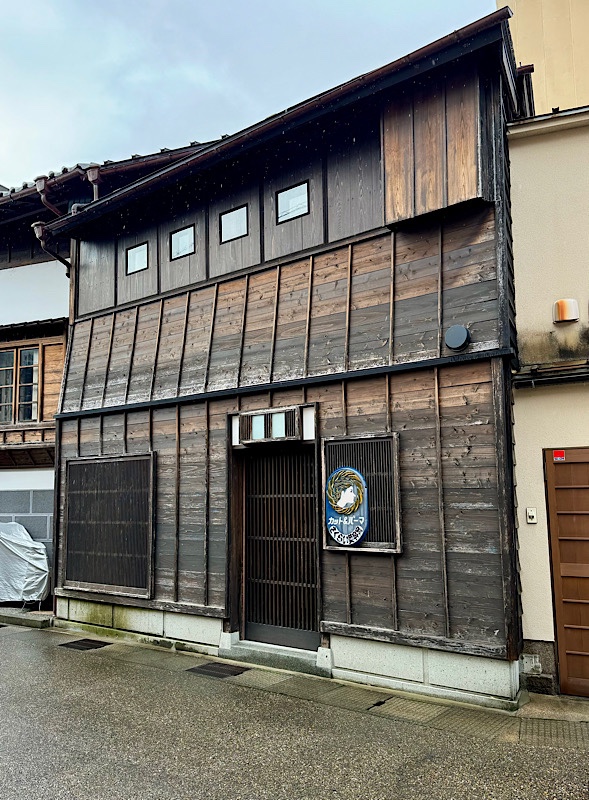
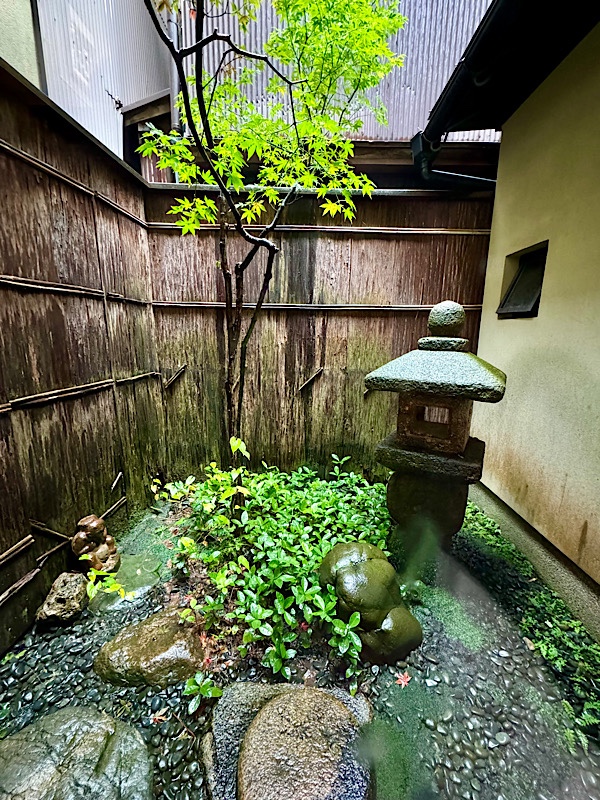
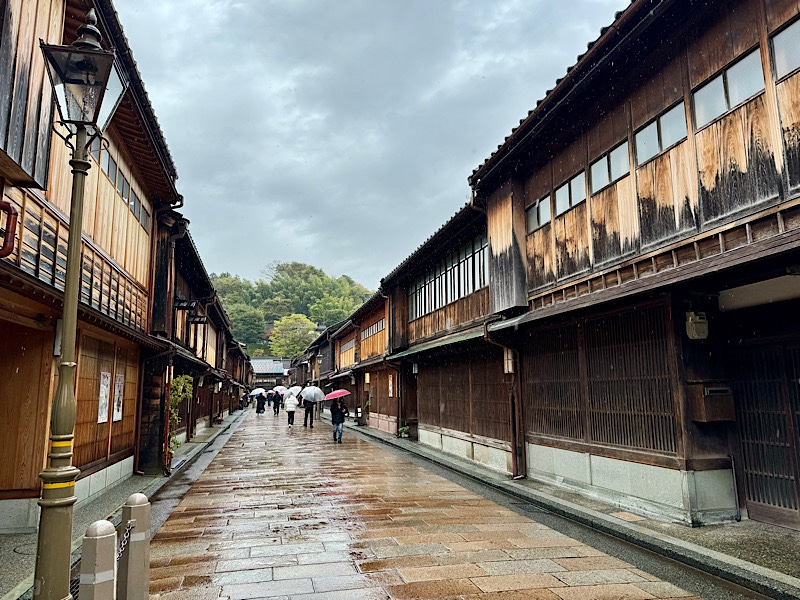
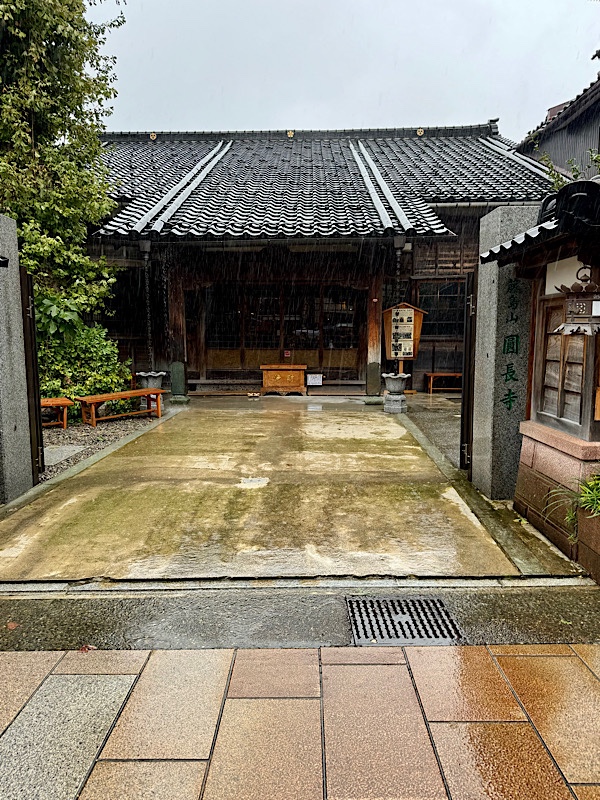 I promise there were actually quite a few people wandering around here today – I just seem to have taken most of my pictures of these old buildings and winding little streets with hardly any people in them.
I promise there were actually quite a few people wandering around here today – I just seem to have taken most of my pictures of these old buildings and winding little streets with hardly any people in them. 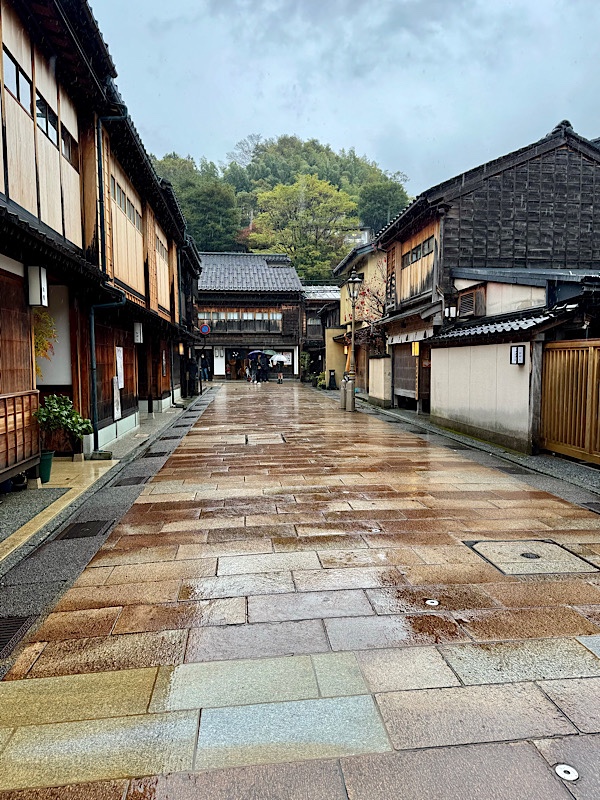
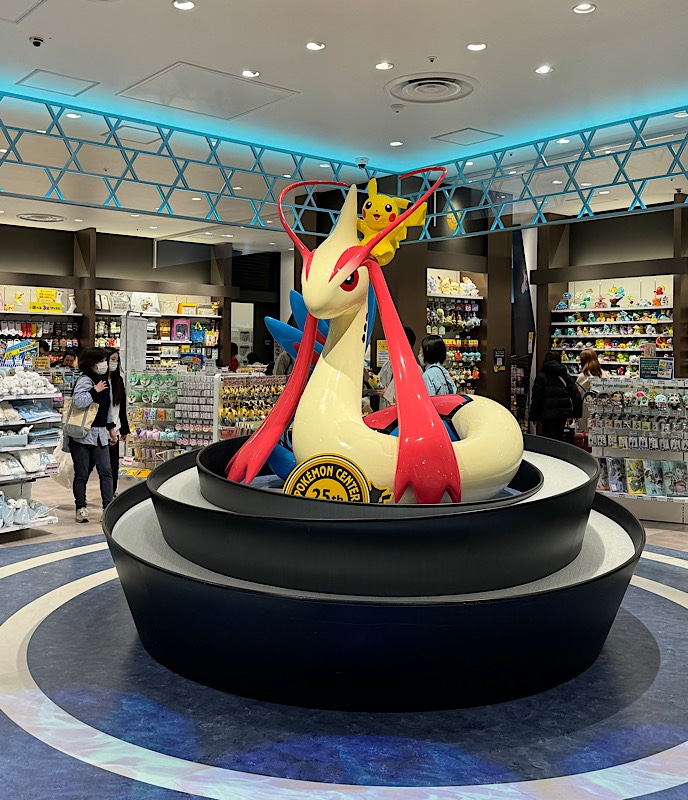 Pikachu in a kimono is apparently a limited edition Kanazawa Pikachu… the lady in the store went to great pains in broken English to let me know I couldn’t get this particuar stuffed Pikachu anywhere else.
Pikachu in a kimono is apparently a limited edition Kanazawa Pikachu… the lady in the store went to great pains in broken English to let me know I couldn’t get this particuar stuffed Pikachu anywhere else. 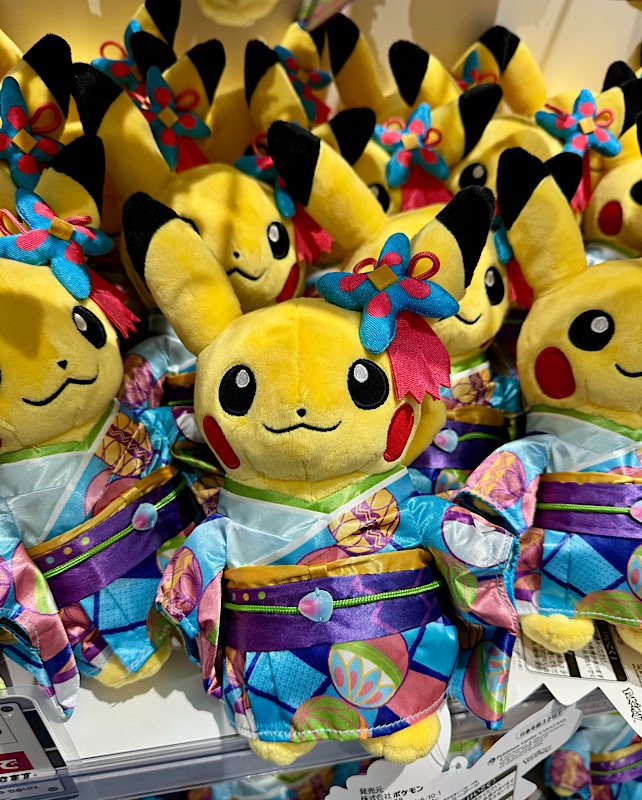
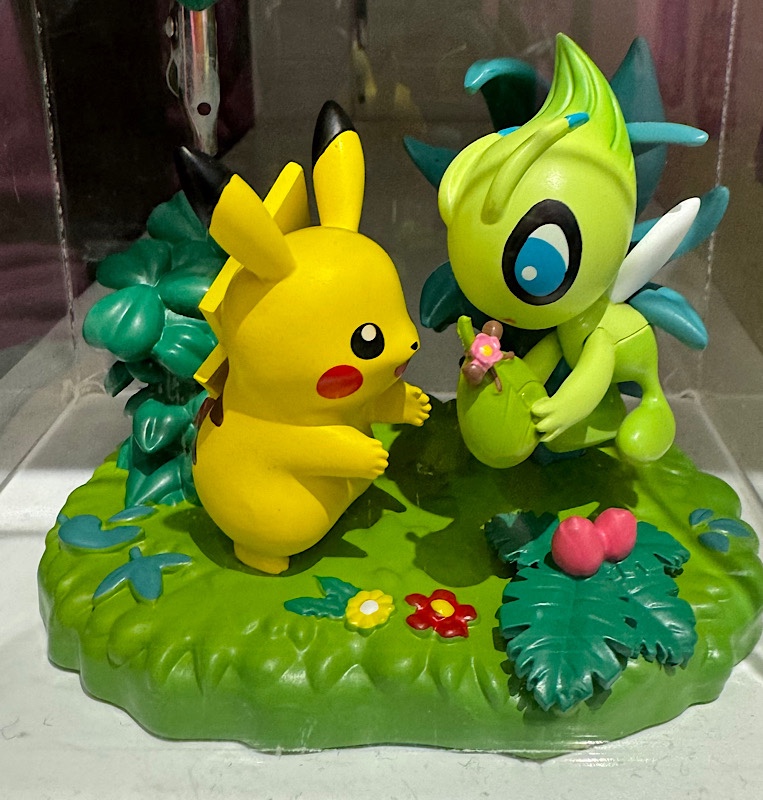 This wasn’t actually in the Pokémon store it was just a display in a regular chemist when I popped in looking for a nail file. Cute.
This wasn’t actually in the Pokémon store it was just a display in a regular chemist when I popped in looking for a nail file. Cute. 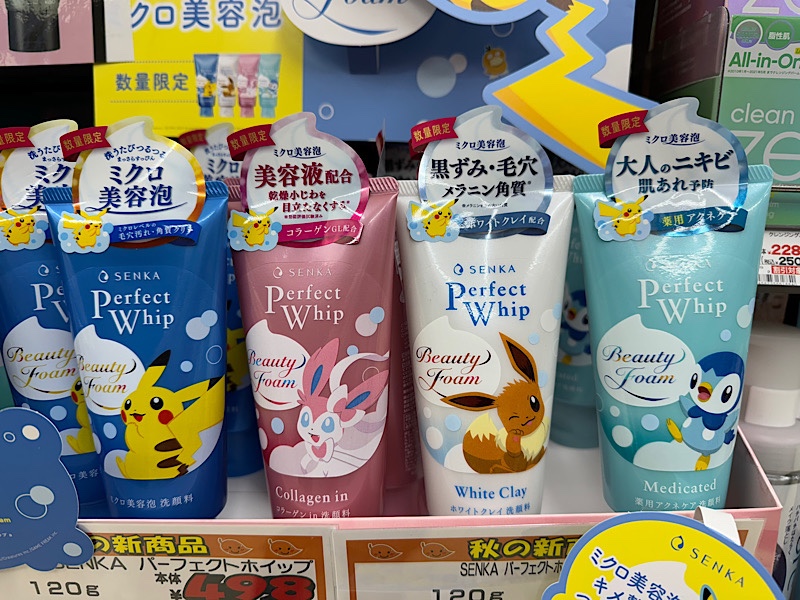
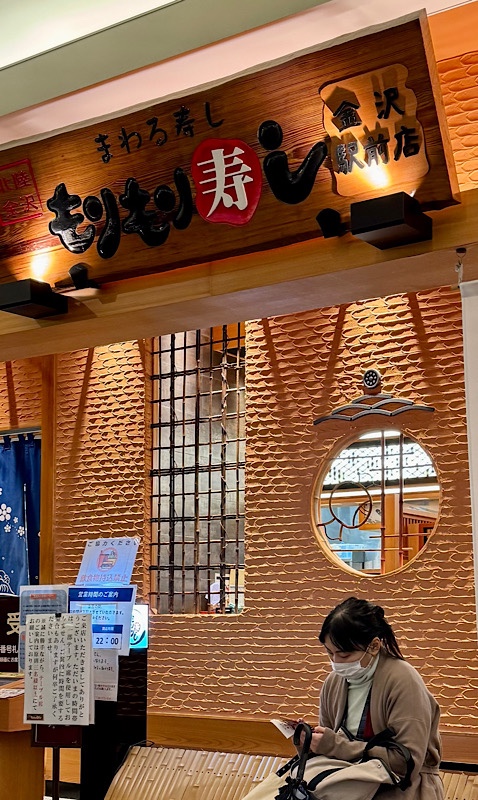 And wait we did! It was a good 45 minutes of listening to customers being called (in Japanese!) by the time we realised just how long a wait this was going to be! And by then you’re committed right? We ended up waiting about 75 minutes to get a table!
And wait we did! It was a good 45 minutes of listening to customers being called (in Japanese!) by the time we realised just how long a wait this was going to be! And by then you’re committed right? We ended up waiting about 75 minutes to get a table!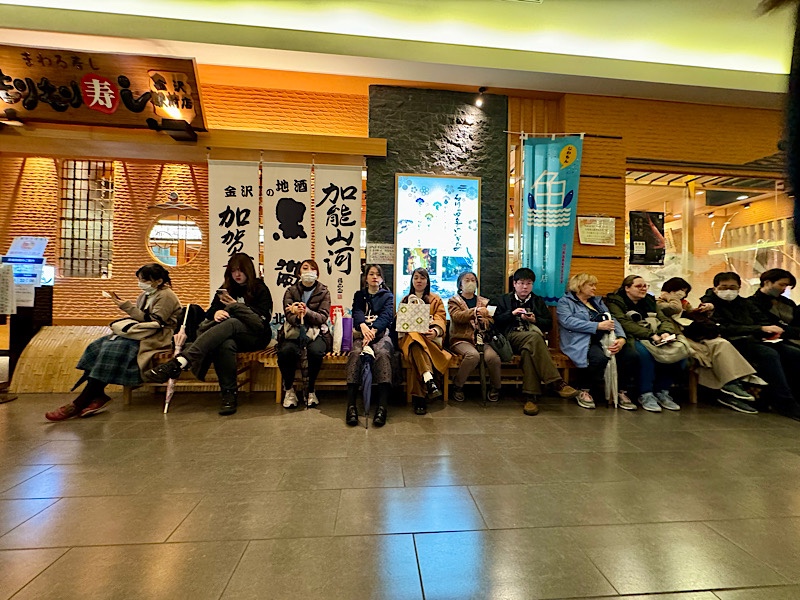 This was definitely going to be one of those, ‘oh dear, I hope this is worth it’ things, and while I was pretty confident that I’d be happy with my wash once we managed to have some dinner, I was less confident that Mr K would find the wait worth his while given he’s not the sushi/sashimi fan in the fam.
This was definitely going to be one of those, ‘oh dear, I hope this is worth it’ things, and while I was pretty confident that I’d be happy with my wash once we managed to have some dinner, I was less confident that Mr K would find the wait worth his while given he’s not the sushi/sashimi fan in the fam. 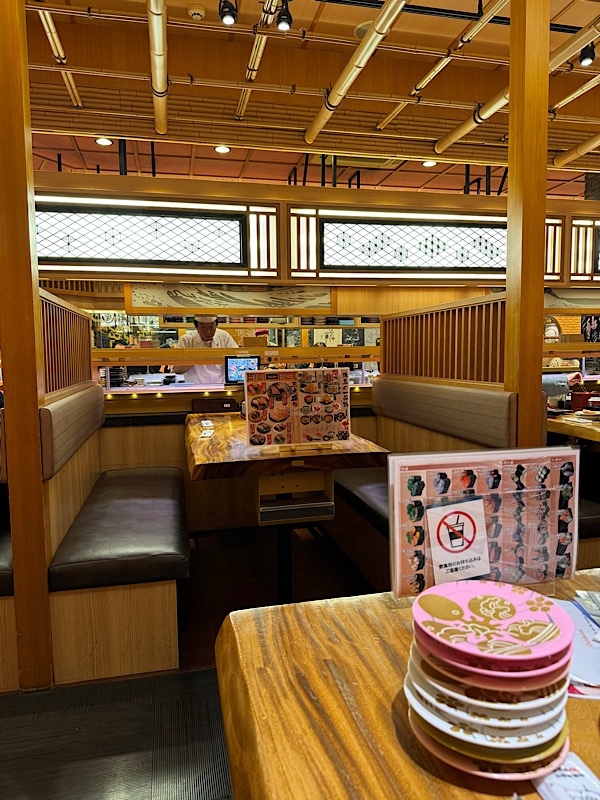 Speedy conveyor built sushi train:
Speedy conveyor built sushi train: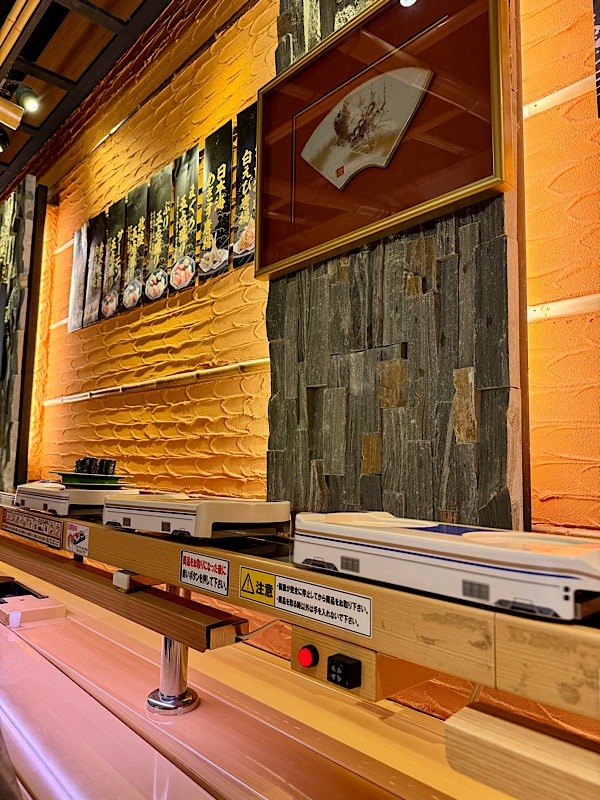 Mr K once he realised that his beer would arrive cold and immediately! Happy face – thankfully.
Mr K once he realised that his beer would arrive cold and immediately! Happy face – thankfully.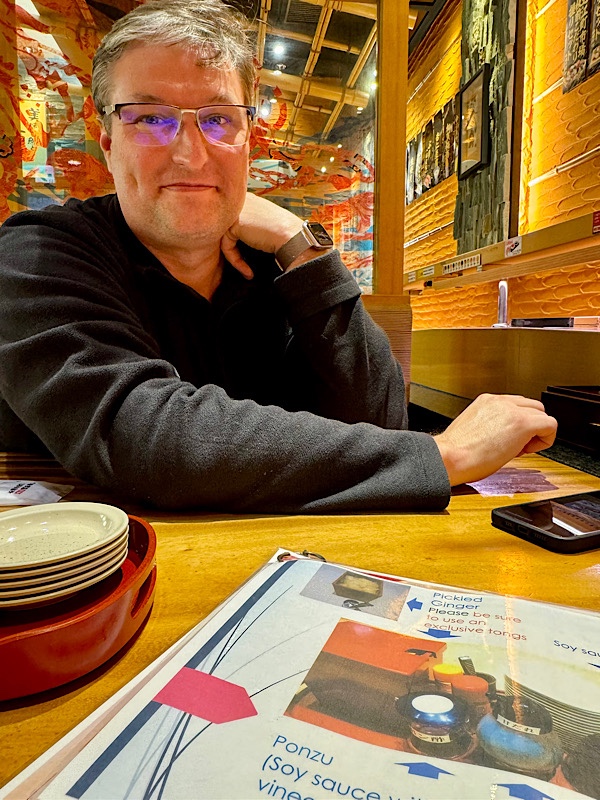 The menu was quite extensive with pages and pages of offerings under each category, and our orders arrived really promptly.
The menu was quite extensive with pages and pages of offerings under each category, and our orders arrived really promptly. 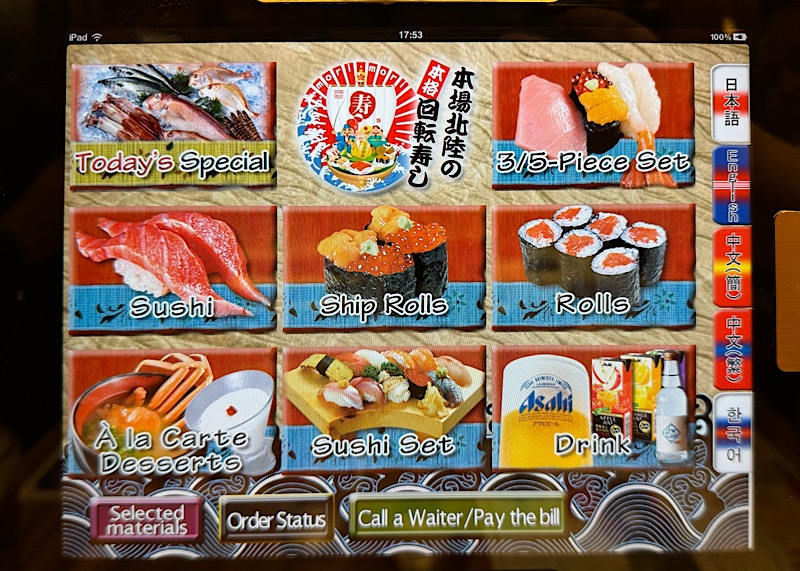 Saké and beer to start, like there was any doubt about this. I had some Tateyama Gingo saké and it was cold and delicious (it’s getting so much easier to order a drop I know I will like, the more familiar I am becoming with the local products).
Saké and beer to start, like there was any doubt about this. I had some Tateyama Gingo saké and it was cold and delicious (it’s getting so much easier to order a drop I know I will like, the more familiar I am becoming with the local products). 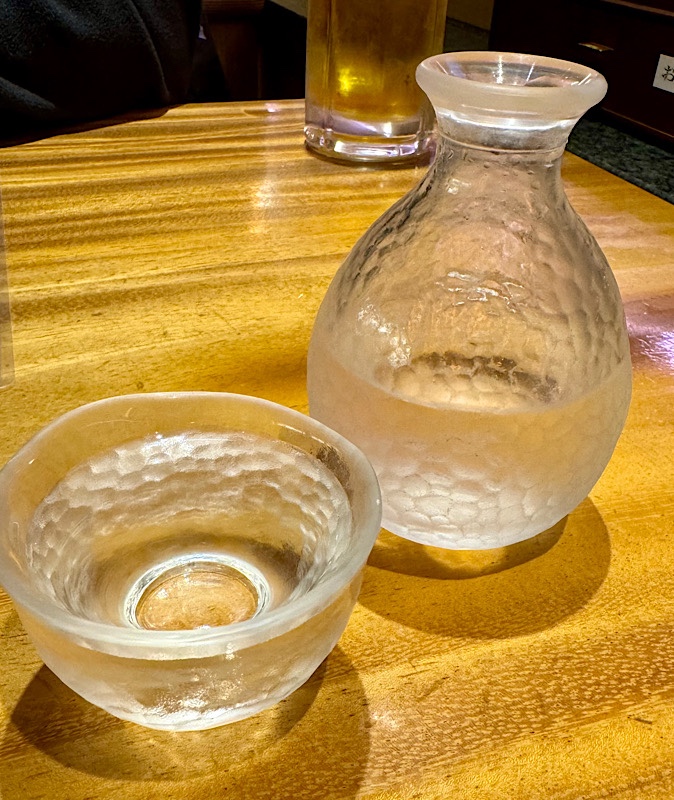 The food was delicious and imho, well worth waiting for. I had some salmon an some yellow tail sashimi, as well as some maguro tuna and some ikura ships. Everything was delicious and fresh just as you would like hope at a Japanese port town.
The food was delicious and imho, well worth waiting for. I had some salmon an some yellow tail sashimi, as well as some maguro tuna and some ikura ships. Everything was delicious and fresh just as you would like hope at a Japanese port town. 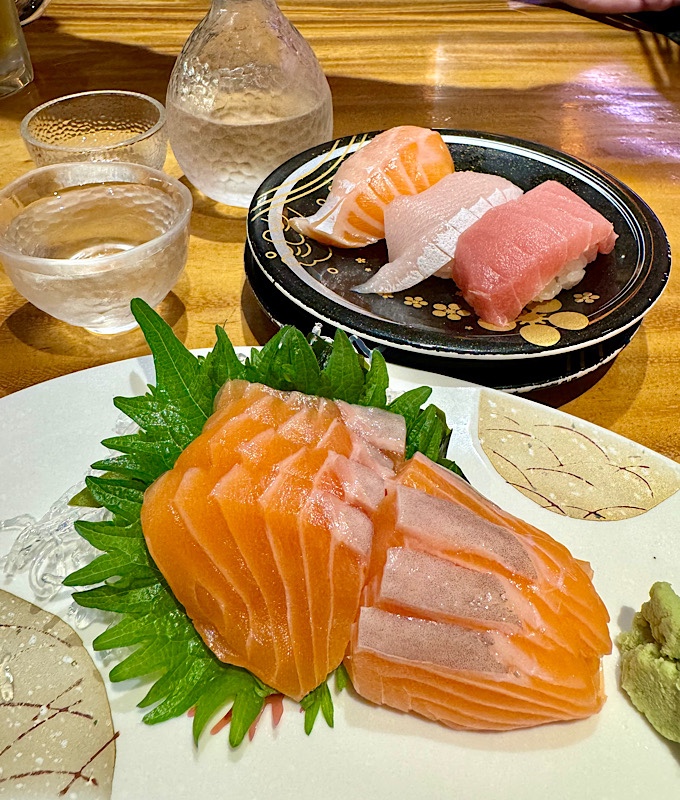 Mr K catching up on some serious news.
Mr K catching up on some serious news.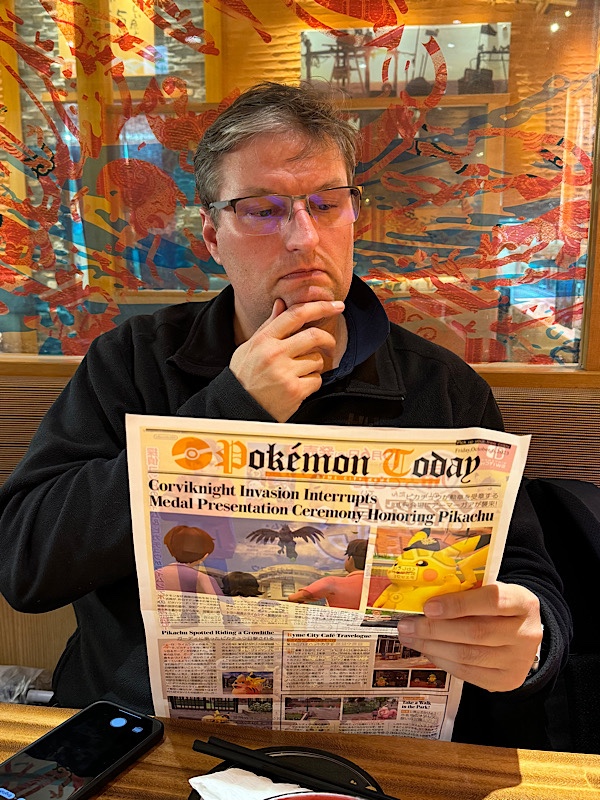
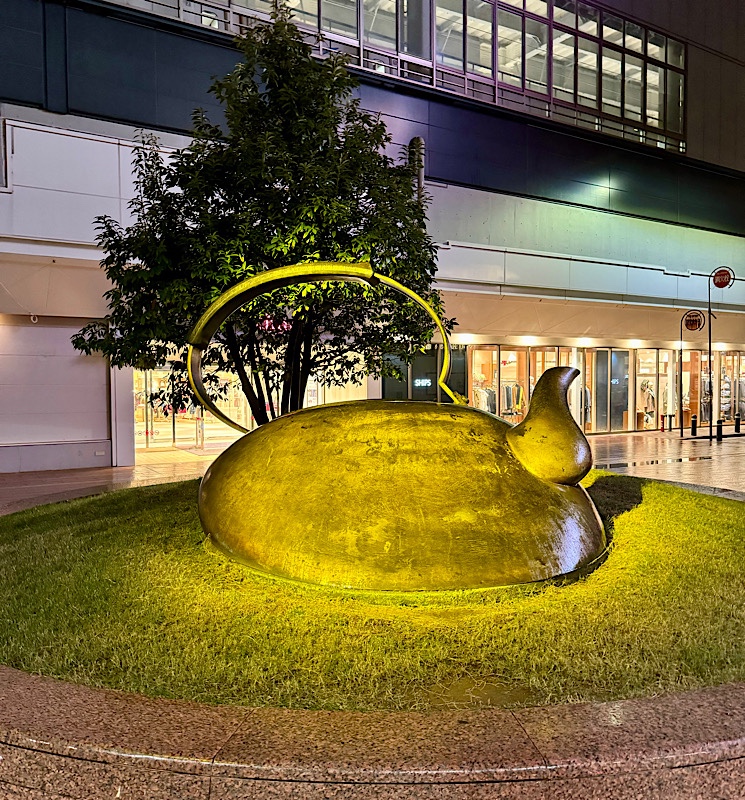
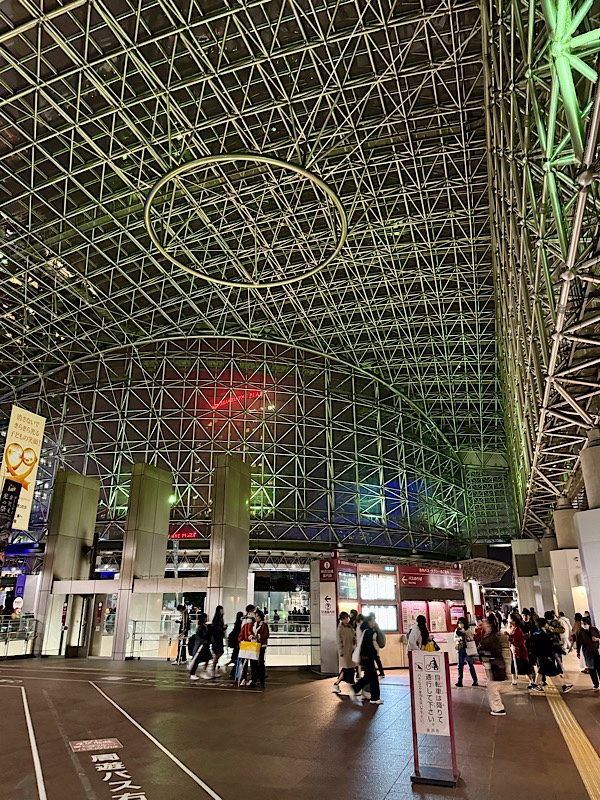
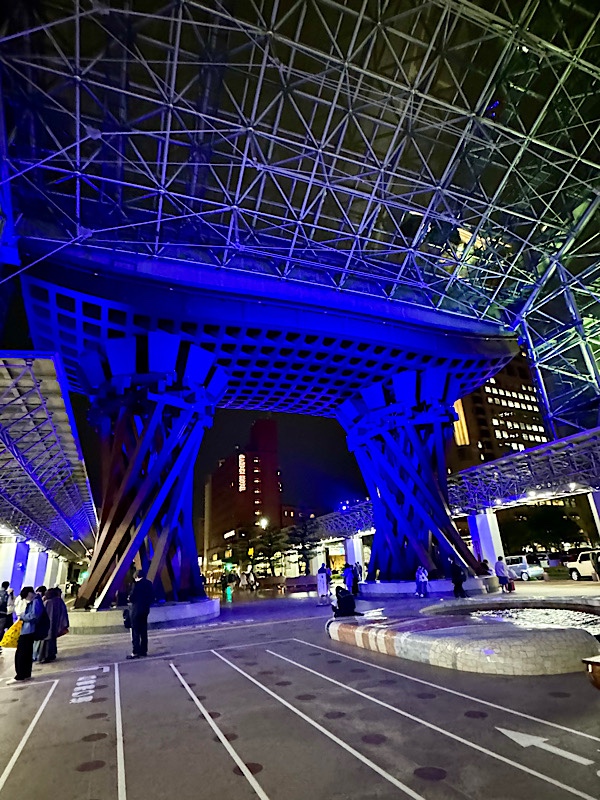
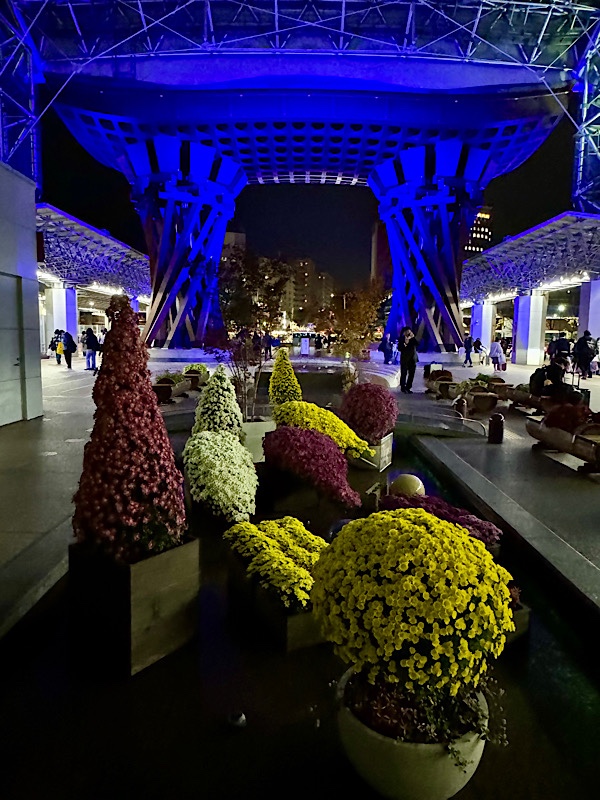
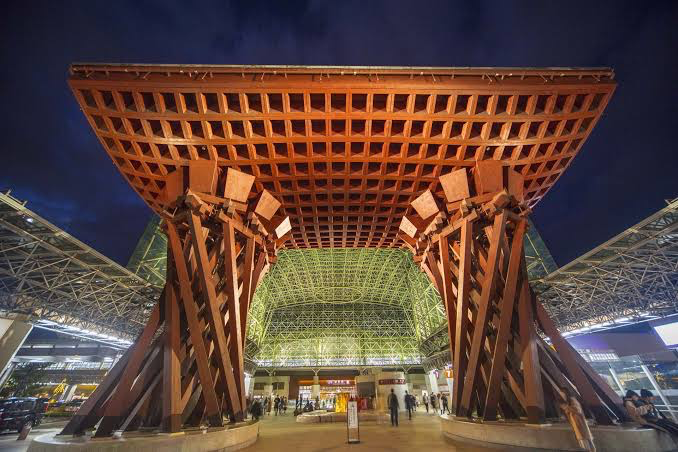
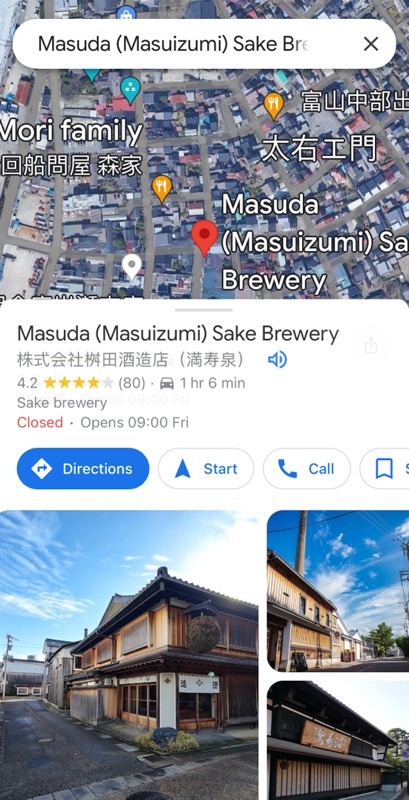 The pics that show up when you search a place are often quite handy so you know what you are looking for…
The pics that show up when you search a place are often quite handy so you know what you are looking for…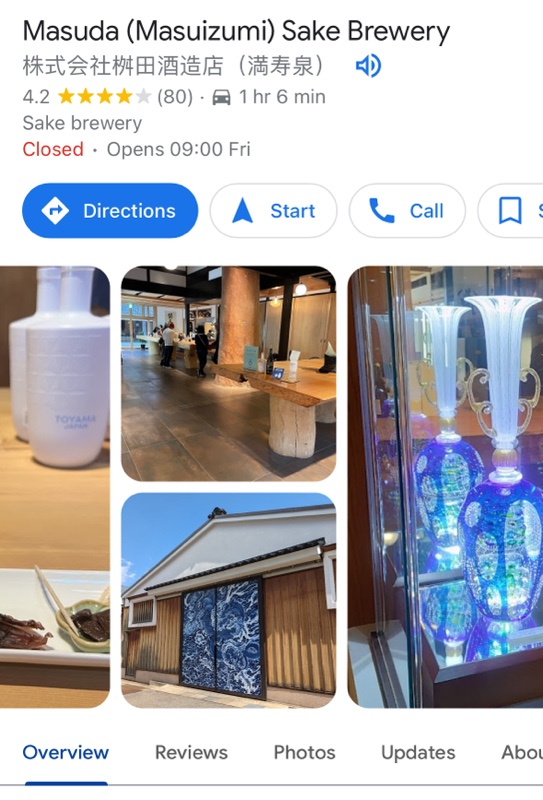 Anyway, you’d think this wouldn’t be too difficult a task… look up the brewery, find an address, type it into Google maps (and the car’s archaic GPS unit for good measure) and off you go! Oh if wishing made it so! We found the general area okay thanks to the aforementioned navigational devices, and then seemed to be stumbling around a bit lost until I saw this door – and remembered seeing it on the images that popped up on Google Maps. Awesome – we are in the right place. So I asked a guy who obviously worked there, who happened to be passing by, and he directed me slightly down the road to a doorway….
Anyway, you’d think this wouldn’t be too difficult a task… look up the brewery, find an address, type it into Google maps (and the car’s archaic GPS unit for good measure) and off you go! Oh if wishing made it so! We found the general area okay thanks to the aforementioned navigational devices, and then seemed to be stumbling around a bit lost until I saw this door – and remembered seeing it on the images that popped up on Google Maps. Awesome – we are in the right place. So I asked a guy who obviously worked there, who happened to be passing by, and he directed me slightly down the road to a doorway….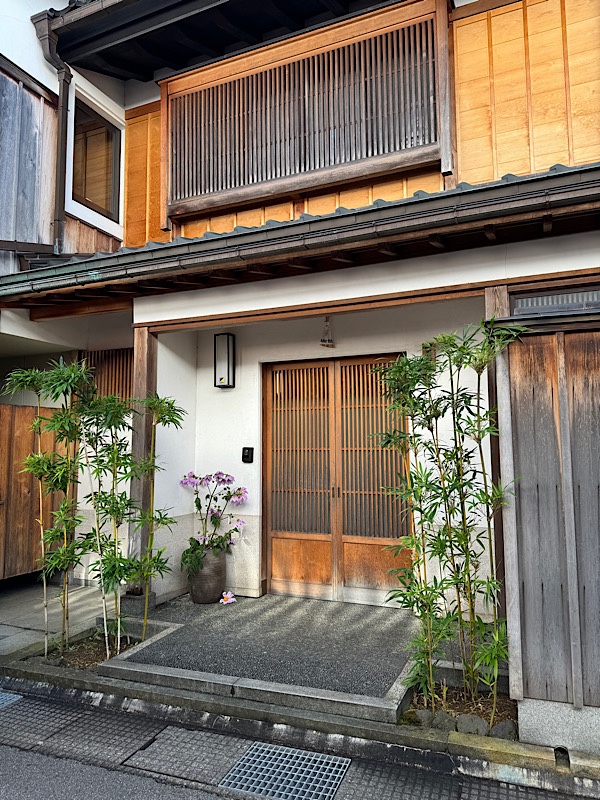 On the corner of the next block – totally not visible at all from where the ‘helpful’ worker was pointing was one of the buildings that I saw on the Google Map.
On the corner of the next block – totally not visible at all from where the ‘helpful’ worker was pointing was one of the buildings that I saw on the Google Map. 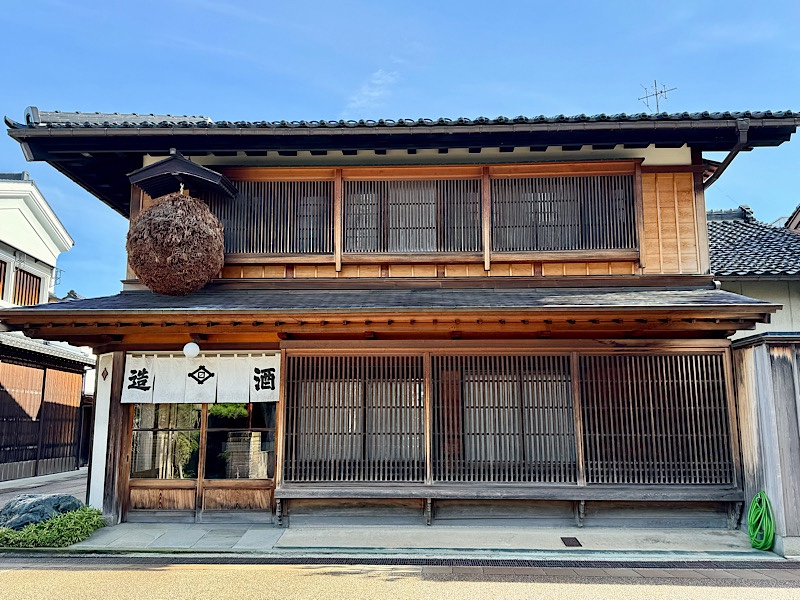
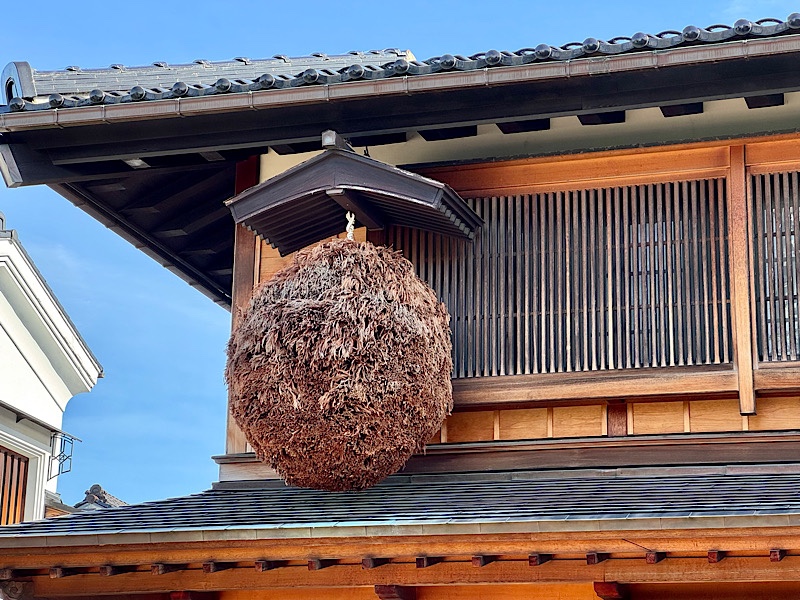
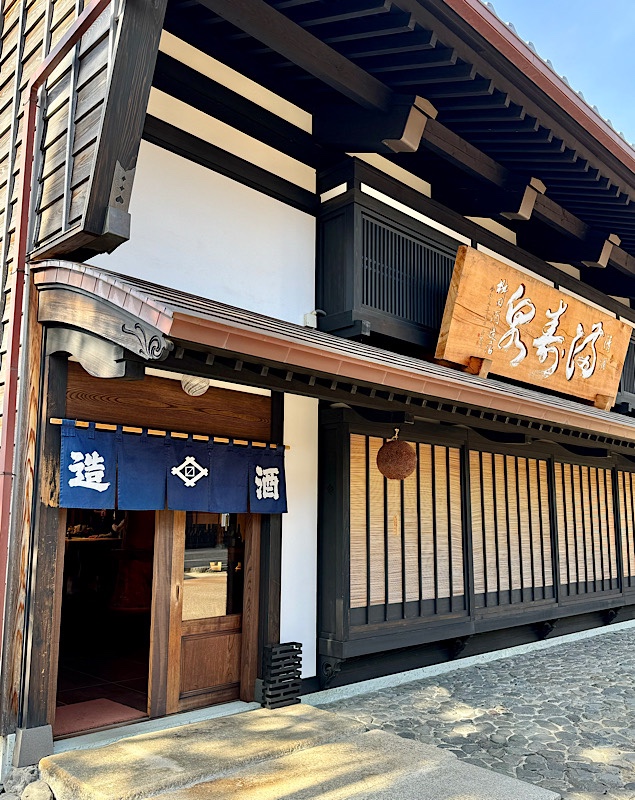
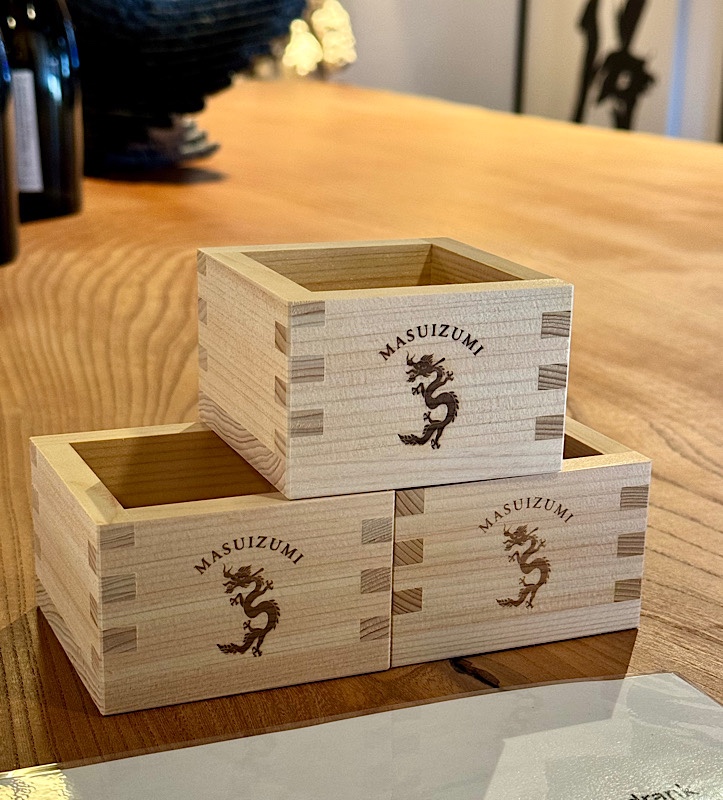
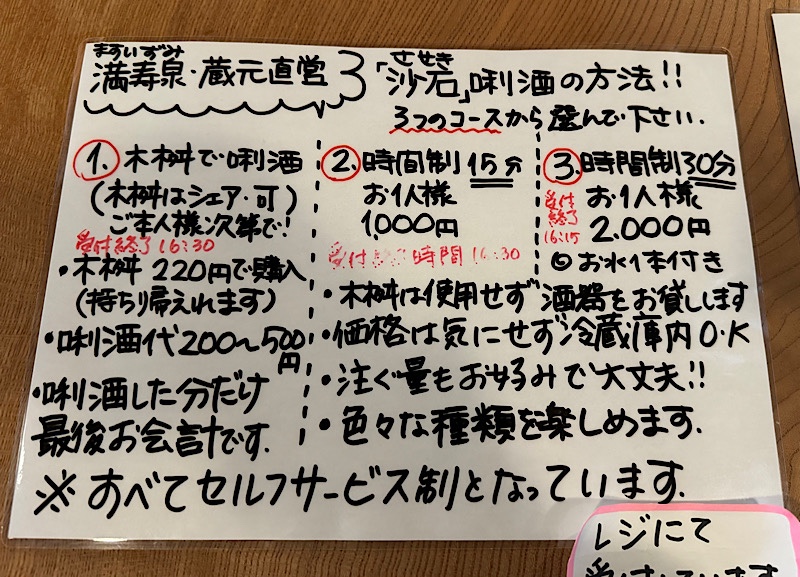
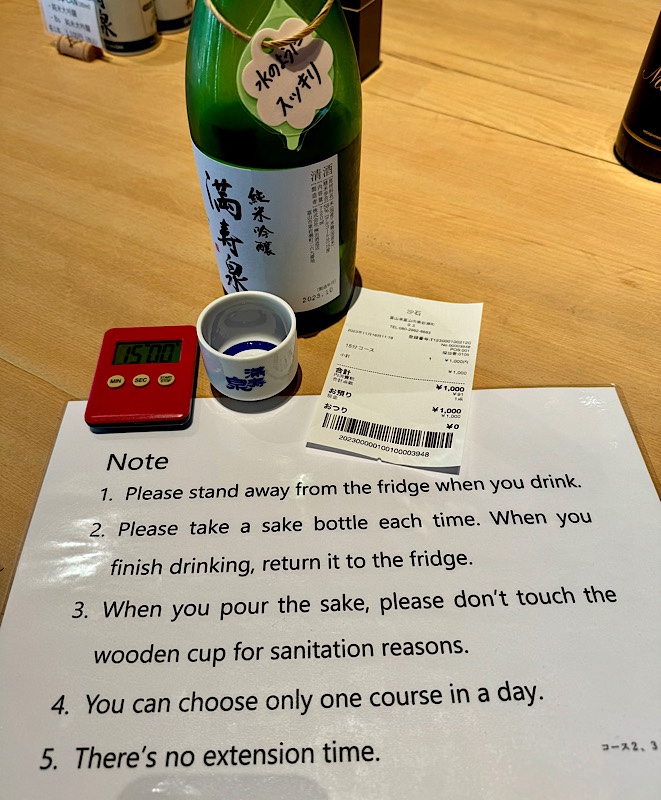
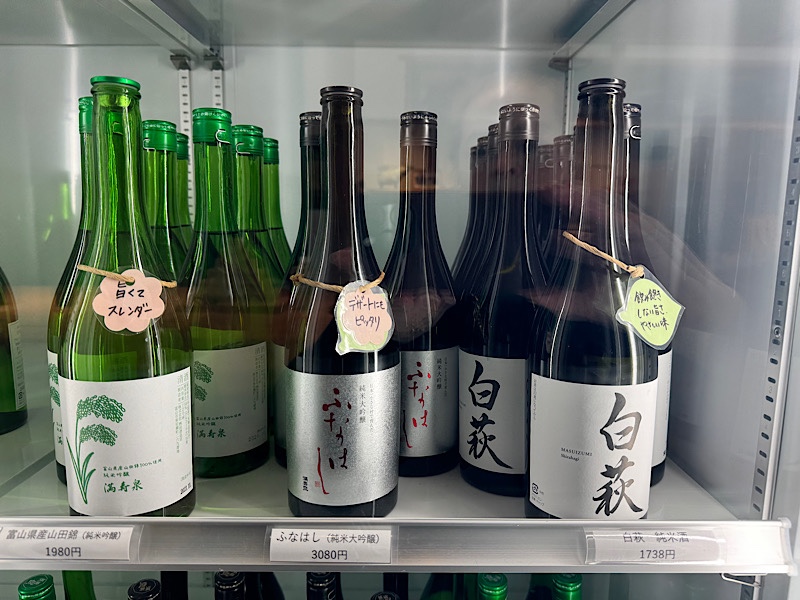 And I can’t read a lick of kanji… when it comes to saké I know that I like ones on the dry end of the scale, not to heavy on the aroma. Definitely nothing sweet or cloying (some are downright syrupy), and I quite dislike saké that feels like it should be labeled ‘vodka’ or tastes of grain spirit. Over time I’ve learned that I like the junmai gingo or junmai daiginjo and I have been to enough breweries and tastings to have some favourites.
And I can’t read a lick of kanji… when it comes to saké I know that I like ones on the dry end of the scale, not to heavy on the aroma. Definitely nothing sweet or cloying (some are downright syrupy), and I quite dislike saké that feels like it should be labeled ‘vodka’ or tastes of grain spirit. Over time I’ve learned that I like the junmai gingo or junmai daiginjo and I have been to enough breweries and tastings to have some favourites.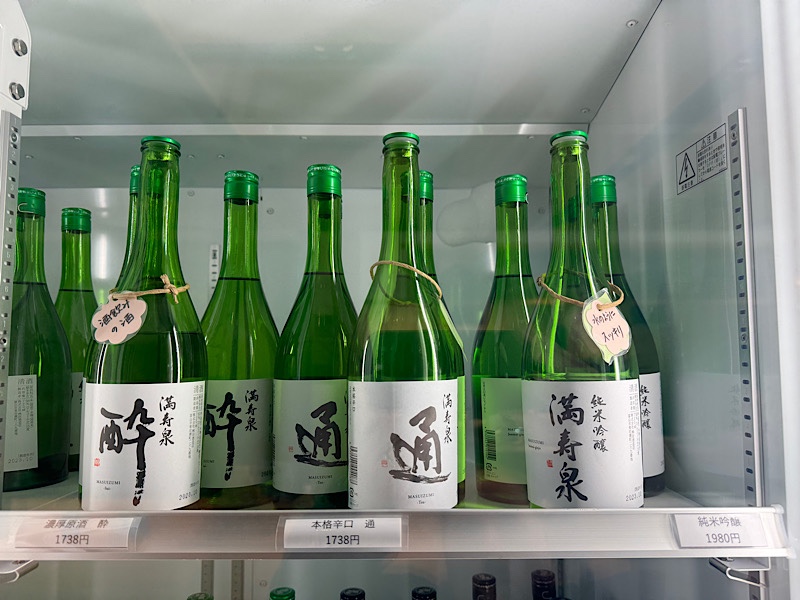 Oh and they had FIVE fridges this size all full of different offerings that you could try. Some of this fridge was full of vintage saké and limited edition runs which is a bit of a bitch because two of the ones I liked in this fridge aren’t even available for sale!
Oh and they had FIVE fridges this size all full of different offerings that you could try. Some of this fridge was full of vintage saké and limited edition runs which is a bit of a bitch because two of the ones I liked in this fridge aren’t even available for sale! 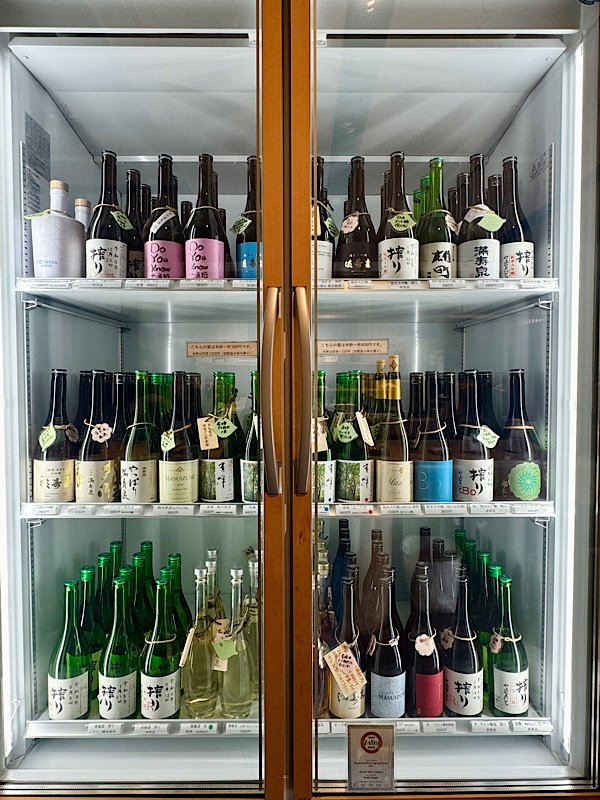 I tried about nine in my 15 minutes and took some photos of some favourites. I gotta say it was a lot of fun… there were a couple of other guests there who were also talking and laughing (in English) about tasting against the clock – they turned out to be Japanese and Croatian but both living and working in Berlin at the moment. We tried to divide and conquer a little but just ended up telling each other which ones to try. 🙂
I tried about nine in my 15 minutes and took some photos of some favourites. I gotta say it was a lot of fun… there were a couple of other guests there who were also talking and laughing (in English) about tasting against the clock – they turned out to be Japanese and Croatian but both living and working in Berlin at the moment. We tried to divide and conquer a little but just ended up telling each other which ones to try. 🙂 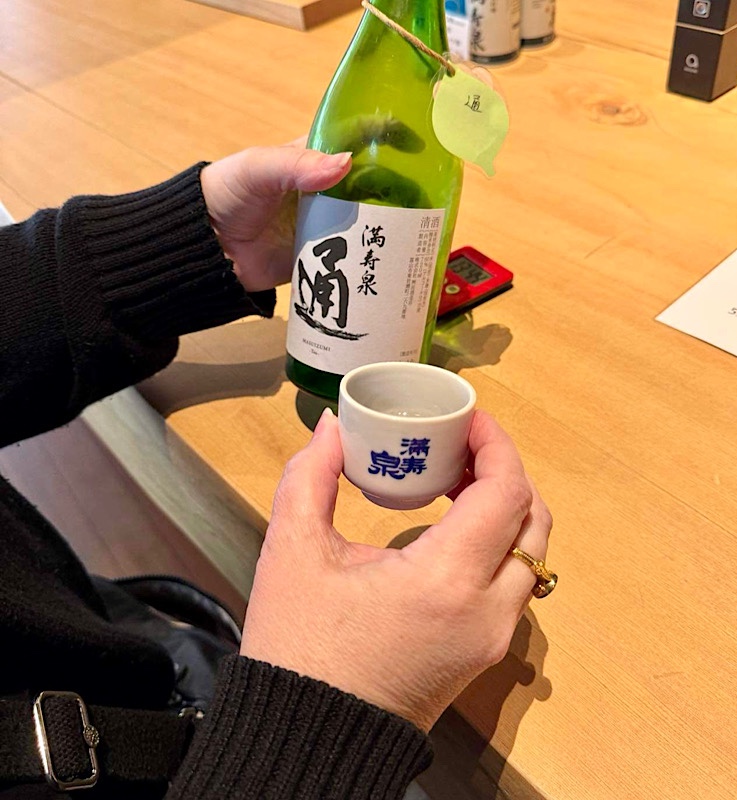 It was good fun – I bought a nice bottle of junmai daiginjo to take away and couple of little cups as a memento. Then we ventured south in search of the next brewery – which was the Yoshino Tomo brewery.
It was good fun – I bought a nice bottle of junmai daiginjo to take away and couple of little cups as a memento. Then we ventured south in search of the next brewery – which was the Yoshino Tomo brewery. 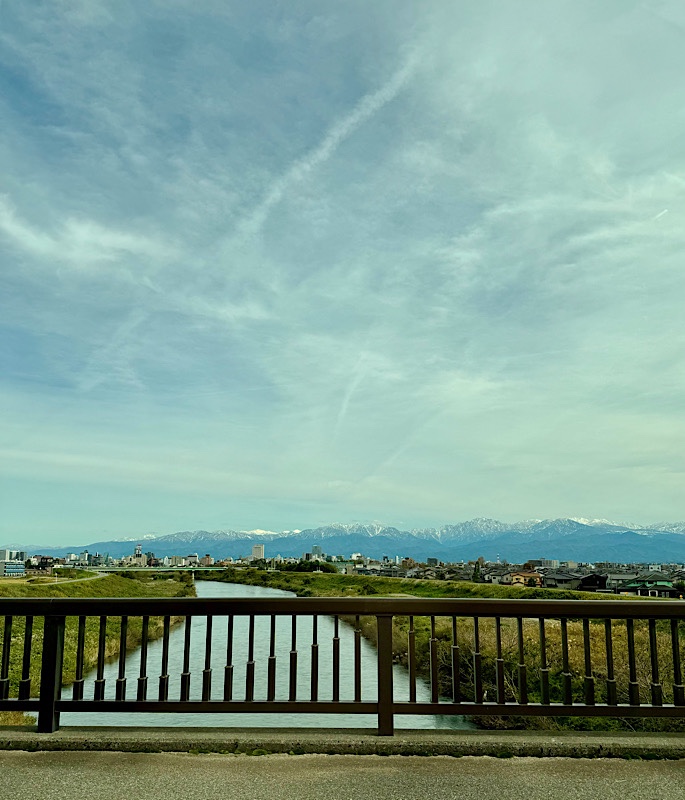 Thankfully a little easier to find. Definitely not as slick an operation as the Masuda brewery and we walked in and were hard pressed to find anyone to show us around or give us any information.
Thankfully a little easier to find. Definitely not as slick an operation as the Masuda brewery and we walked in and were hard pressed to find anyone to show us around or give us any information. 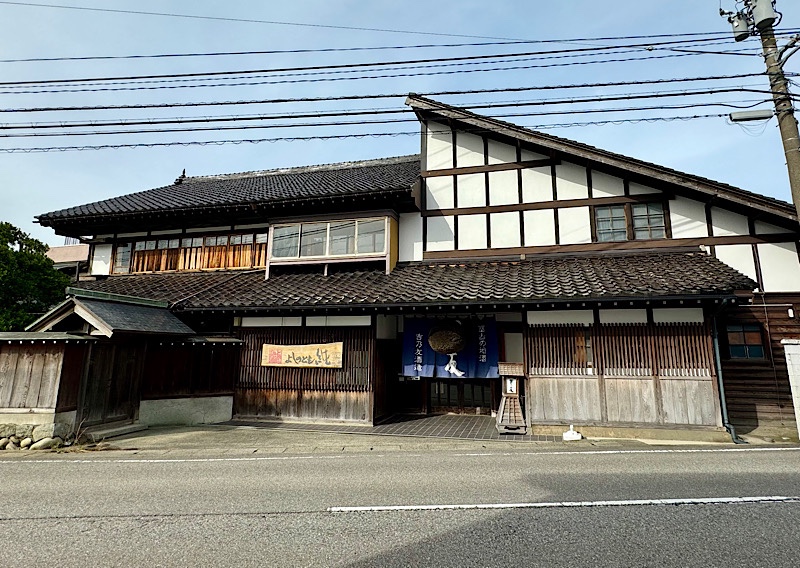
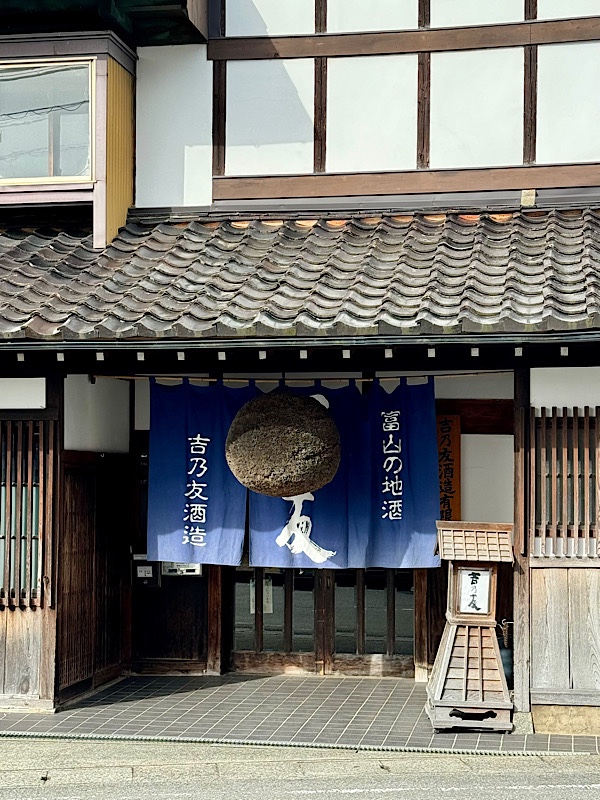 This little tanuki was by the door with a big ‘Welcome’ sign but to be honest it wouldn’t have surprised me if we were trespassing again – the welcoming committee was non-existent and we couldn’t seem to get any help at all.
This little tanuki was by the door with a big ‘Welcome’ sign but to be honest it wouldn’t have surprised me if we were trespassing again – the welcoming committee was non-existent and we couldn’t seem to get any help at all.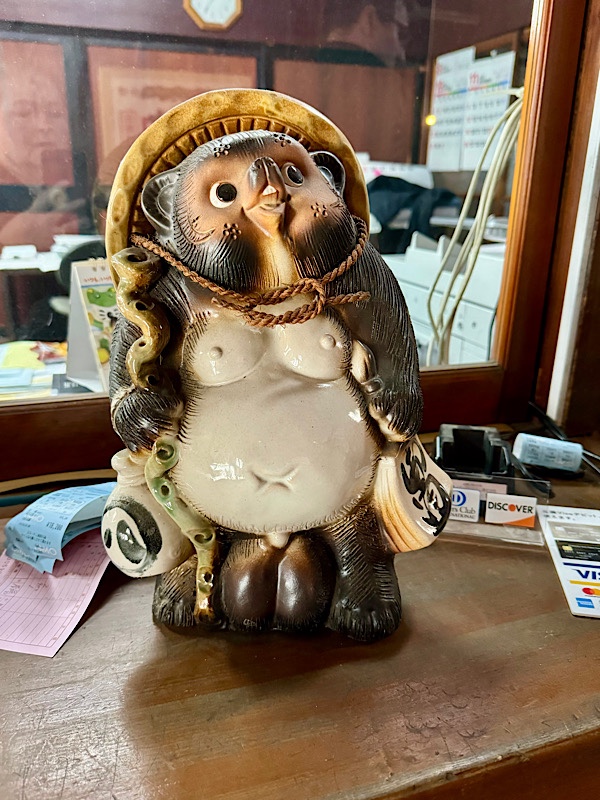
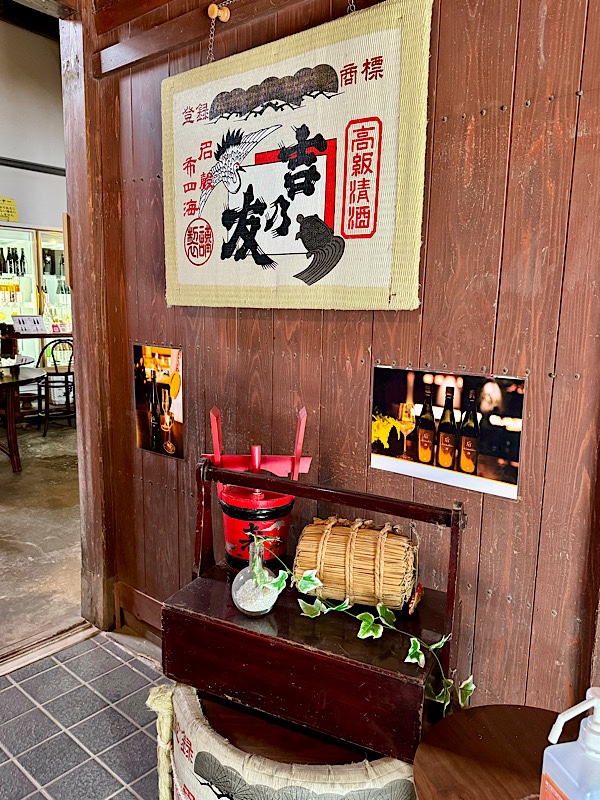 After poking around for a while and using Google Translate to decipher many many labels, we decided to bail out and took some notes of anything we might like to try down the track from the supermarkets. Seemed easier!
After poking around for a while and using Google Translate to decipher many many labels, we decided to bail out and took some notes of anything we might like to try down the track from the supermarkets. Seemed easier!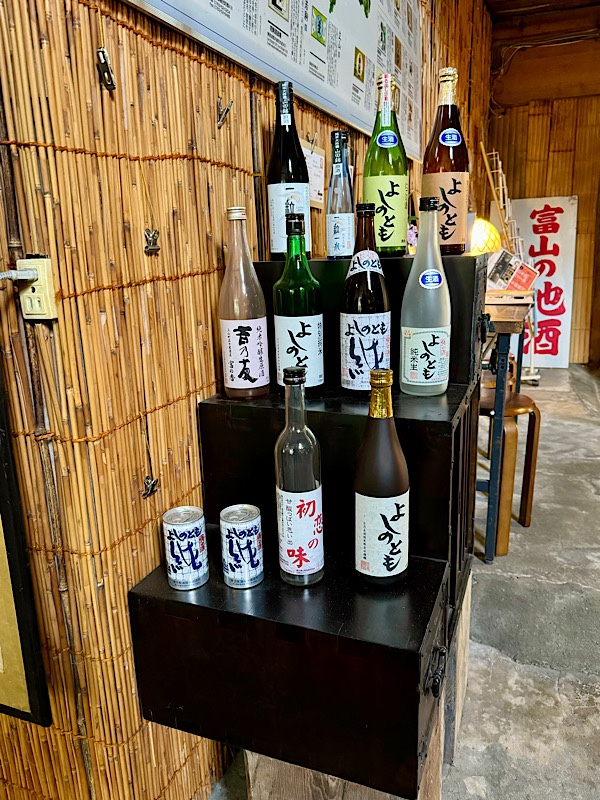
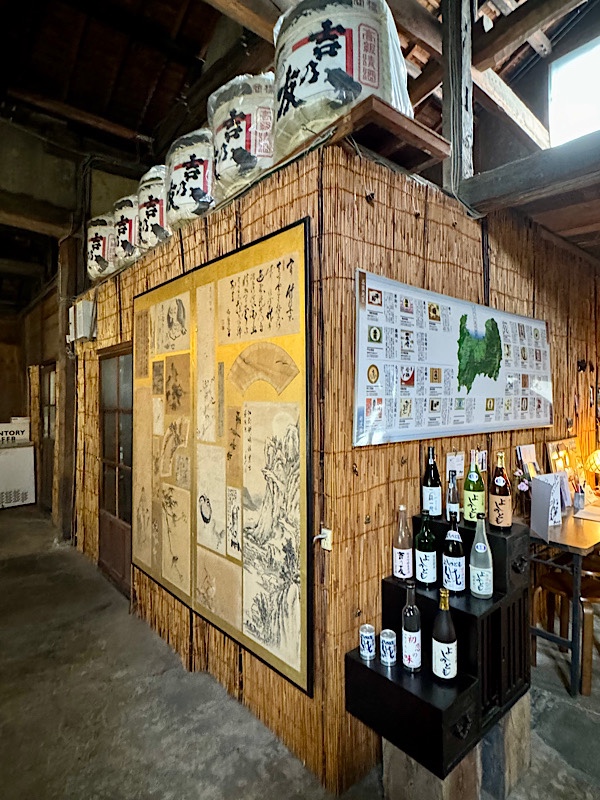
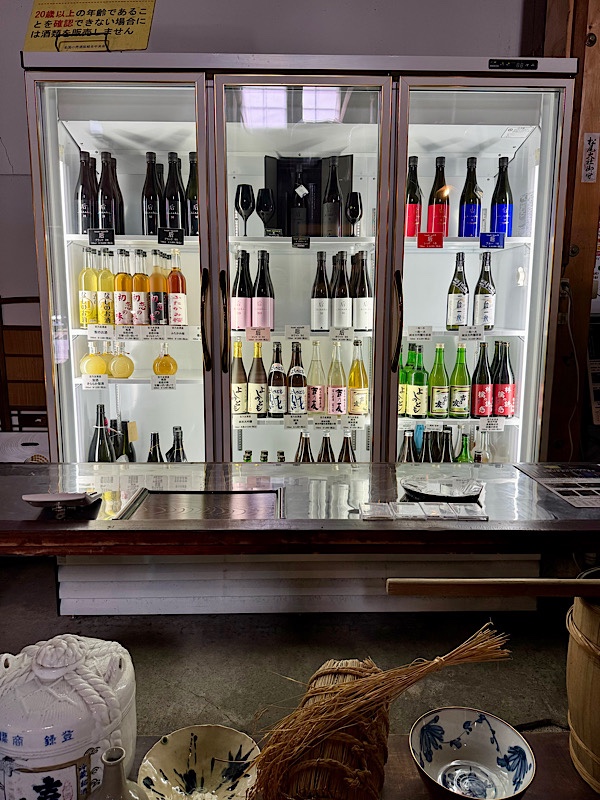 I have seen the Kisaki pink in the shops before so now we have a bit more info, it might be worth giving some of these a try. At least the labels are distinctive so we’ll be able to recognise them easily.
I have seen the Kisaki pink in the shops before so now we have a bit more info, it might be worth giving some of these a try. At least the labels are distinctive so we’ll be able to recognise them easily.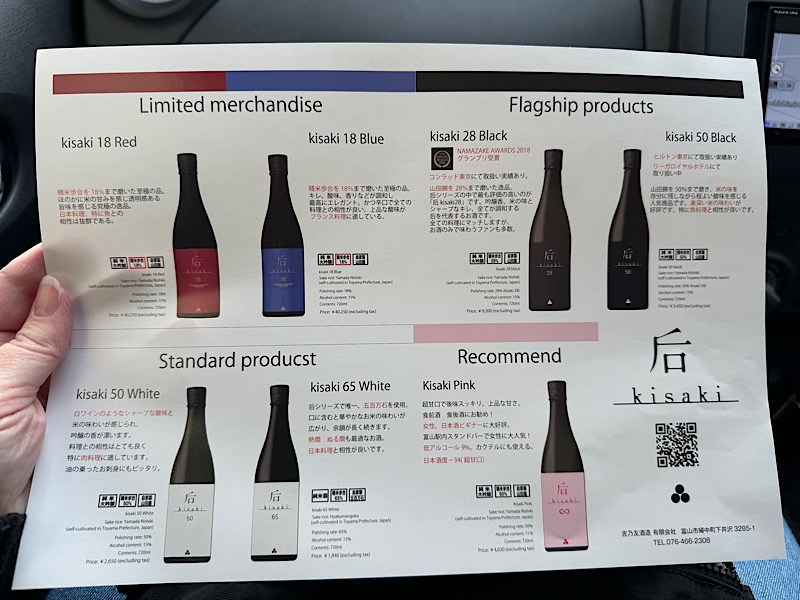 Oh look… there is the Masuizumi Junmain gingo at Lawson’s that I just bought at the last brewery, for JPY400 less than they charged at the tasting room! Oh well, live and learn. 🙂
Oh look… there is the Masuizumi Junmain gingo at Lawson’s that I just bought at the last brewery, for JPY400 less than they charged at the tasting room! Oh well, live and learn. 🙂 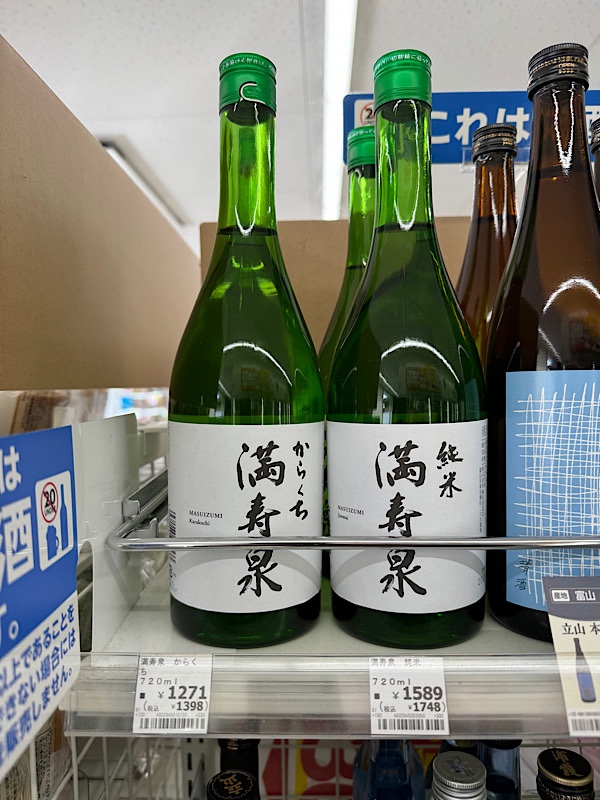 Next stop was a roadside services for lunch – and I have to say, even dodgy roadside food here is better than a lot of the cheap and cheerful Japanese restaurants that we have at home. I’d go so far as to say convenience store sushi is better than most Australian sushi trains restaurants. 😐 Disappointing but there you have it. This katsudon meal with miso soup was roughly AUD$10 – and it was delicious.
Next stop was a roadside services for lunch – and I have to say, even dodgy roadside food here is better than a lot of the cheap and cheerful Japanese restaurants that we have at home. I’d go so far as to say convenience store sushi is better than most Australian sushi trains restaurants. 😐 Disappointing but there you have it. This katsudon meal with miso soup was roughly AUD$10 – and it was delicious.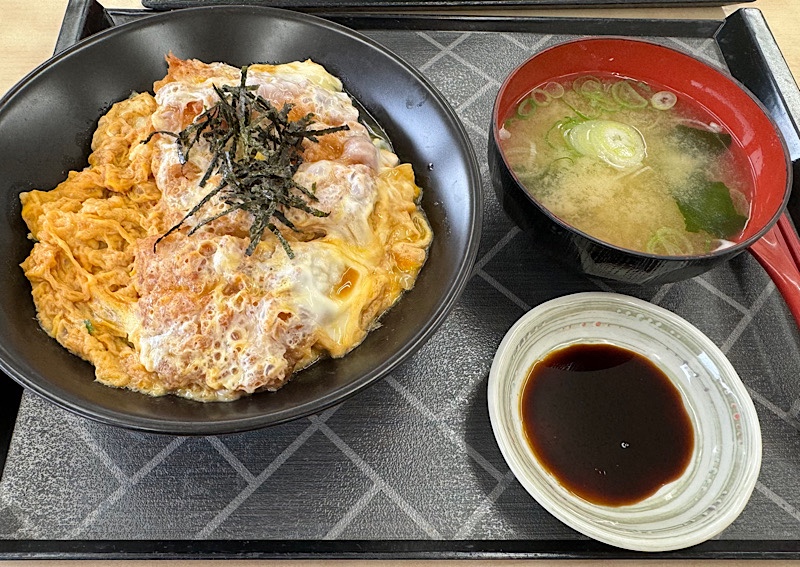
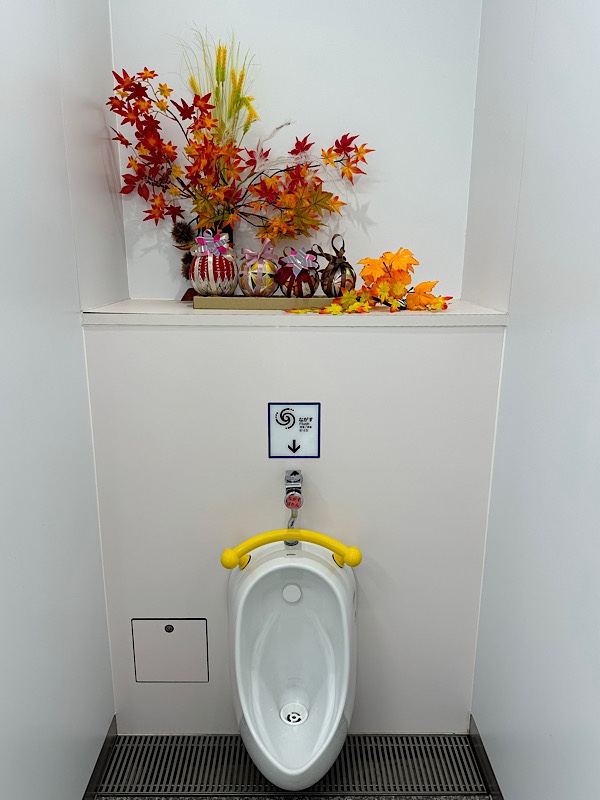
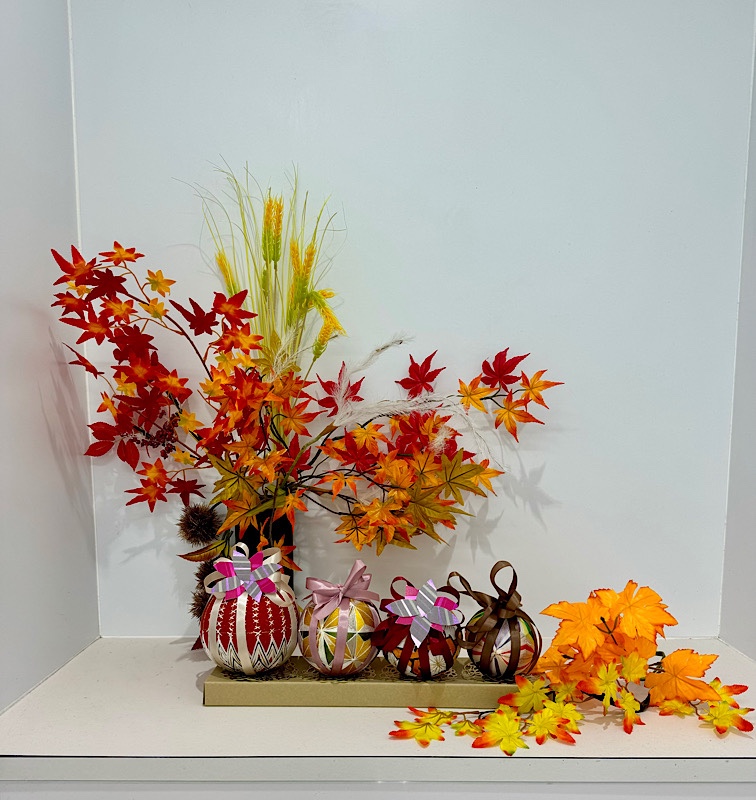

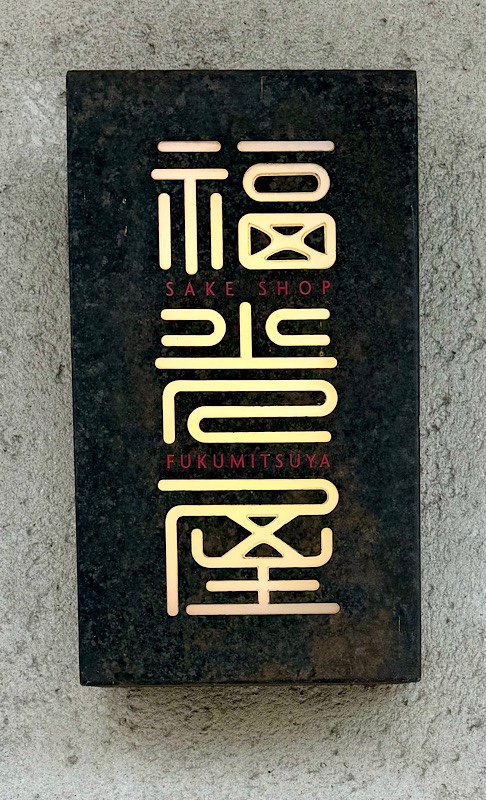
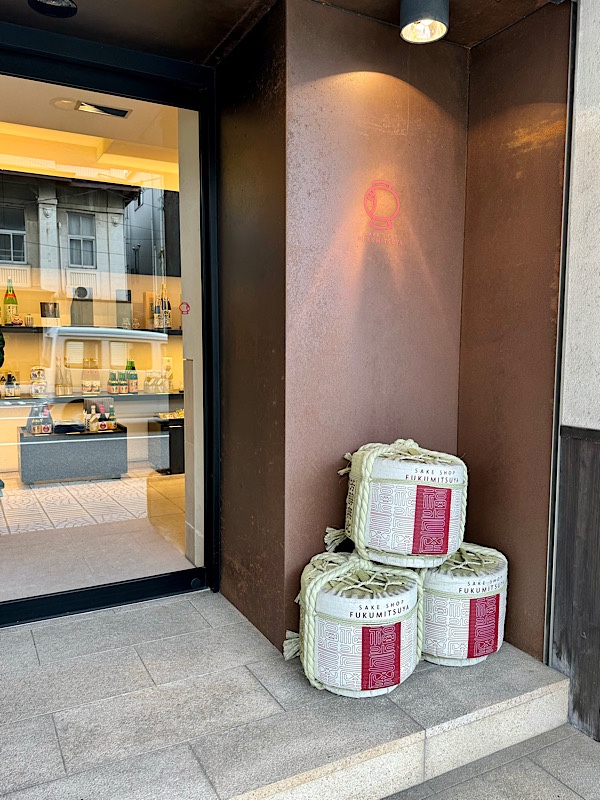 Here, I met a lovely woman who had been living in the US for a number of years and her English was exceptional. We had an in-depth discussion about the various types of saké, and she led me through some tastings. She gave me a pile of information on different varieties and practices that various different breweries were engaging in.
Here, I met a lovely woman who had been living in the US for a number of years and her English was exceptional. We had an in-depth discussion about the various types of saké, and she led me through some tastings. She gave me a pile of information on different varieties and practices that various different breweries were engaging in. 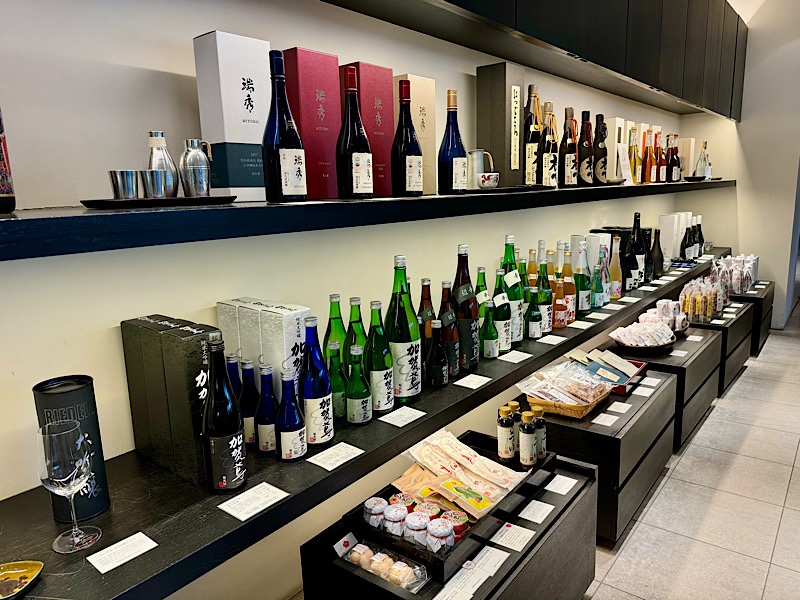 Turns out, that without even realising it – I have developed a taste for ‘purest saké’ (because of course I have… champagne tastes on a beer budget my entire life!). Meaning that the sakés I have found I enjoyed the most are the ones with the least amount of additives. Anything with ‘junmai’ on the label is pure saké, made only with rice, natural waters and koji (koji being a fermentation culture). Which totally explains (for me, at least) why I dislike some saké because it’s too sweet, (likely has sugar added), or to strong in it’s alcohol taste, (likely has grain alcohol added).
Turns out, that without even realising it – I have developed a taste for ‘purest saké’ (because of course I have… champagne tastes on a beer budget my entire life!). Meaning that the sakés I have found I enjoyed the most are the ones with the least amount of additives. Anything with ‘junmai’ on the label is pure saké, made only with rice, natural waters and koji (koji being a fermentation culture). Which totally explains (for me, at least) why I dislike some saké because it’s too sweet, (likely has sugar added), or to strong in it’s alcohol taste, (likely has grain alcohol added).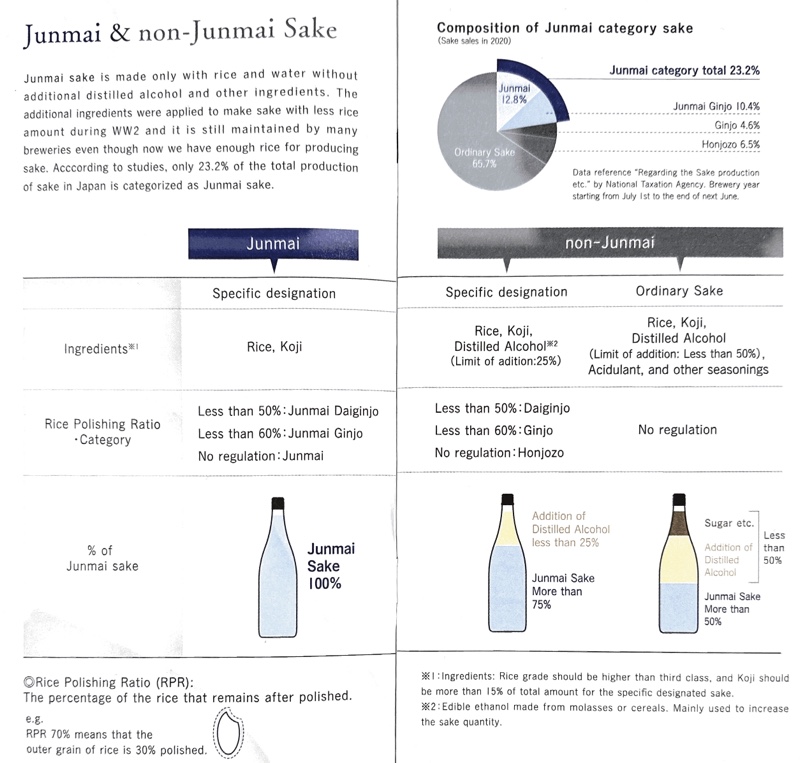
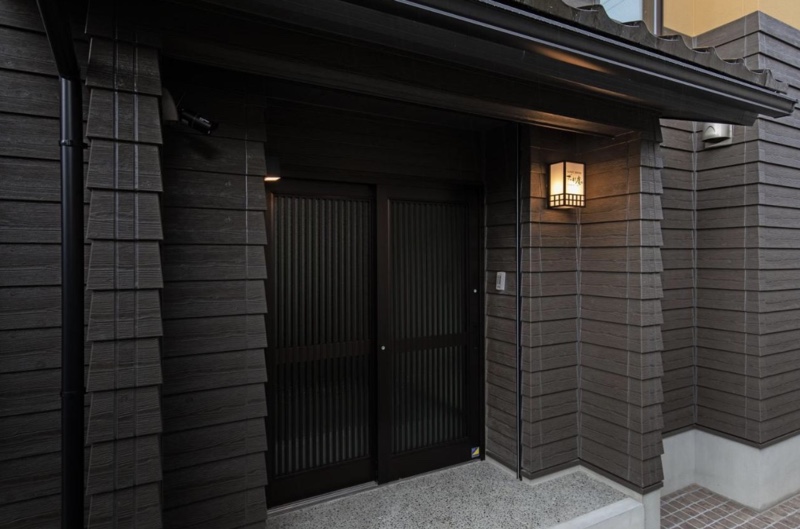

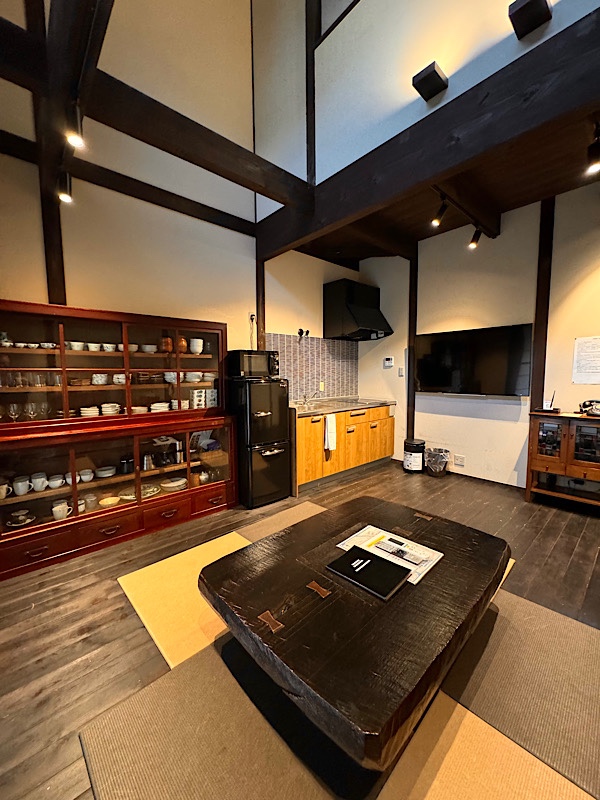
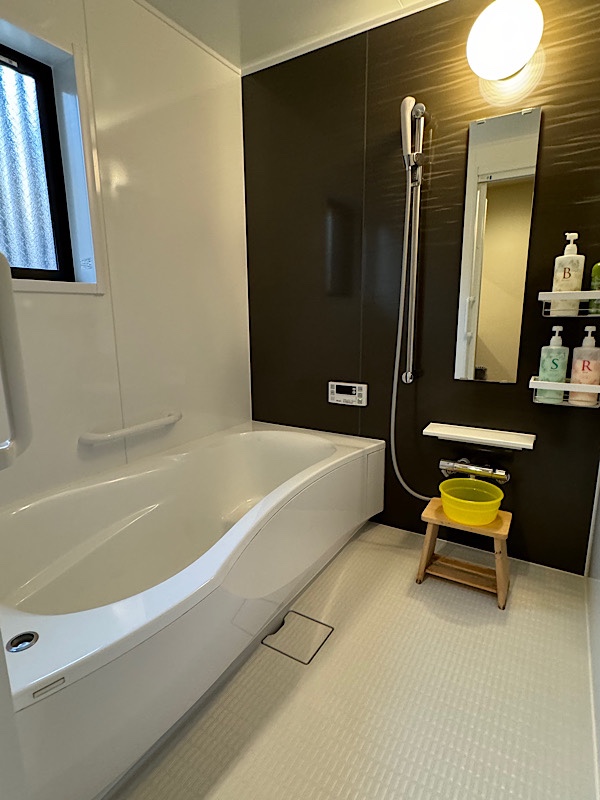 This mural is called a Fusama painting and it was apparently created by Kahoolawe Ueshima, who is a well known local arts who works in the ParalymArt collective – I have no idea what that is, but it appears to be a significant art community according to our host.
This mural is called a Fusama painting and it was apparently created by Kahoolawe Ueshima, who is a well known local arts who works in the ParalymArt collective – I have no idea what that is, but it appears to be a significant art community according to our host. 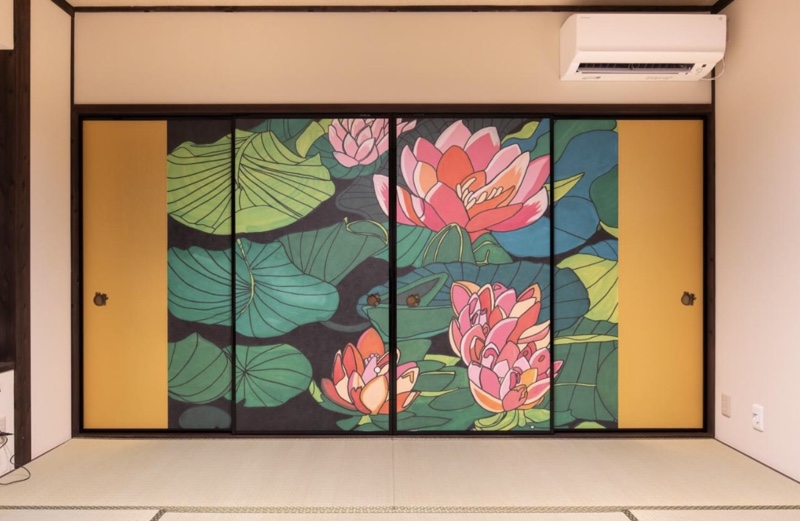
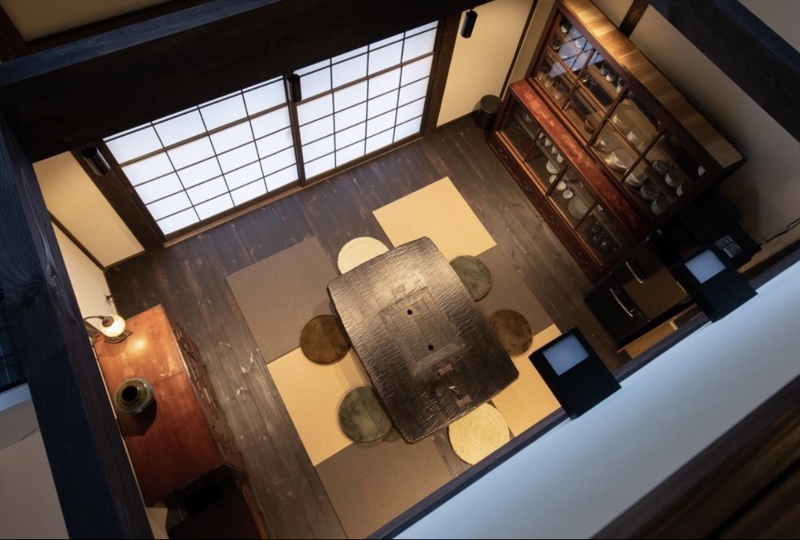
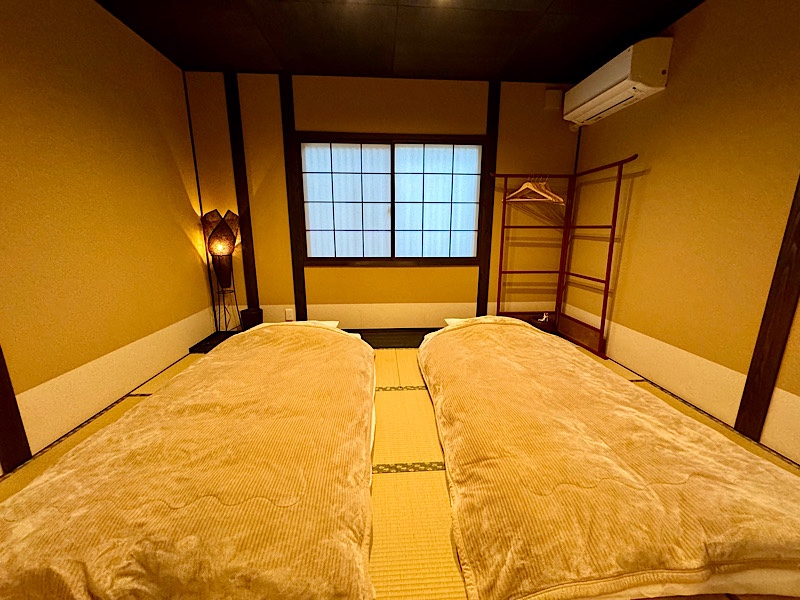 We have a cute, private little garden space; I love the rain chains and have often wondered if they would look out of place in suburban Brisbane. lol
We have a cute, private little garden space; I love the rain chains and have often wondered if they would look out of place in suburban Brisbane. lol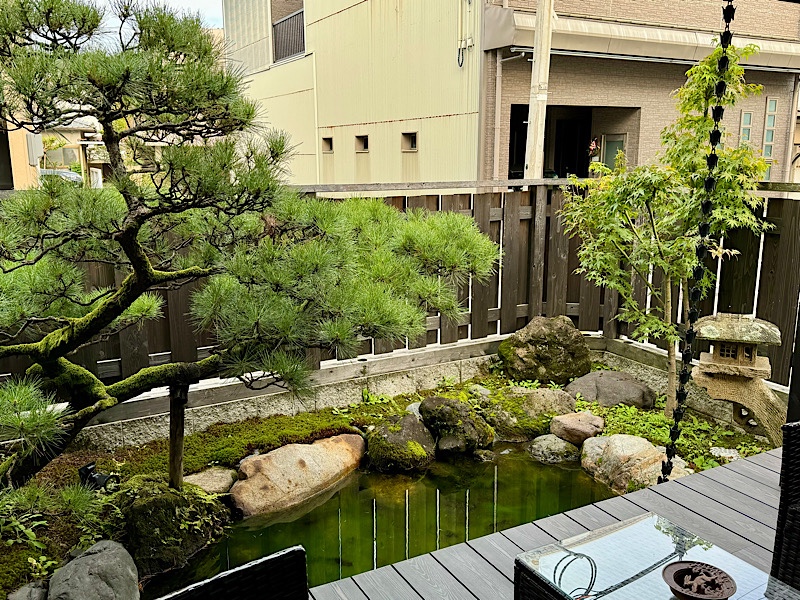
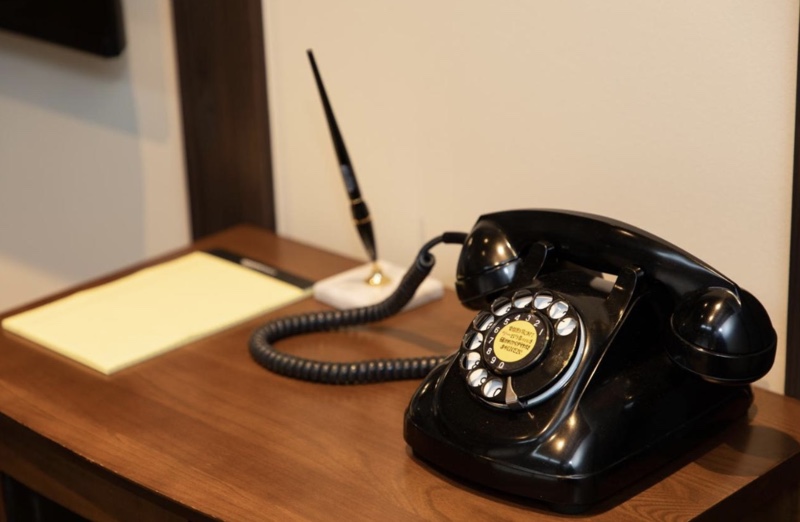 Now to sit down to do some serious work, which of course requires – saké!!! Kanpai.
Now to sit down to do some serious work, which of course requires – saké!!! Kanpai.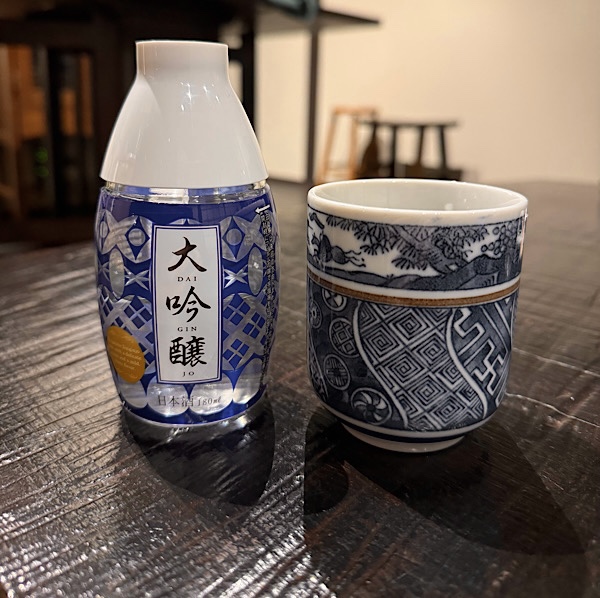
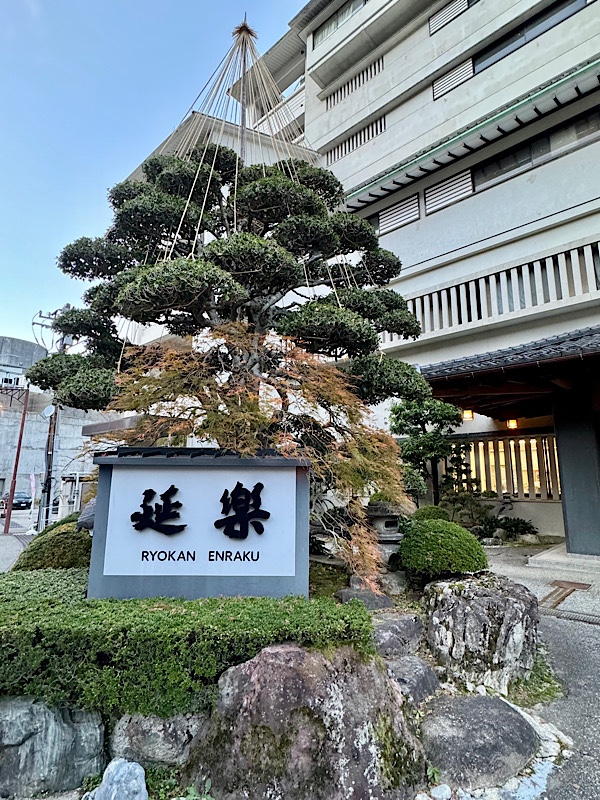 The lobby was lush, and set a beautiful warm and welcoming tone to the ryokan.
The lobby was lush, and set a beautiful warm and welcoming tone to the ryokan.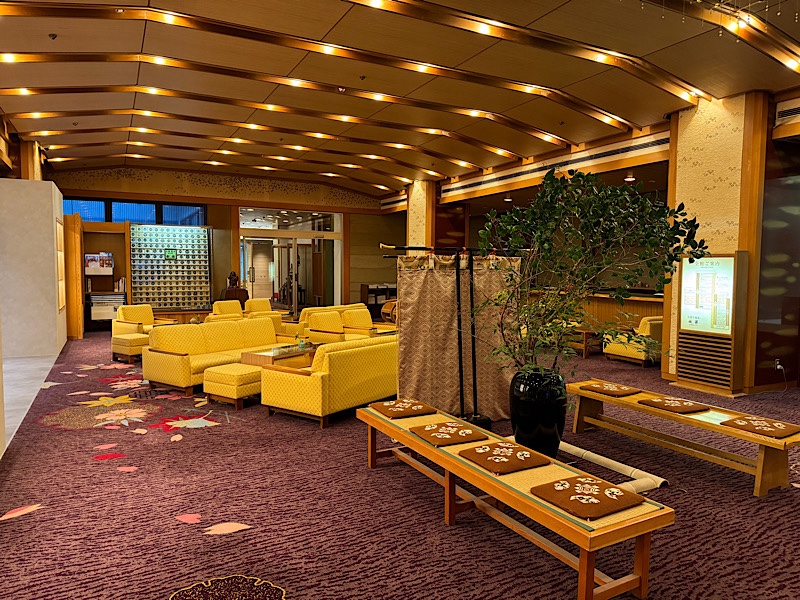 Our rom was on the 11th floor with a large deck and garden that overlooked the gorge. The living room was set up for day use with some low chairs and tables on a large tatami mat space.
Our rom was on the 11th floor with a large deck and garden that overlooked the gorge. The living room was set up for day use with some low chairs and tables on a large tatami mat space. 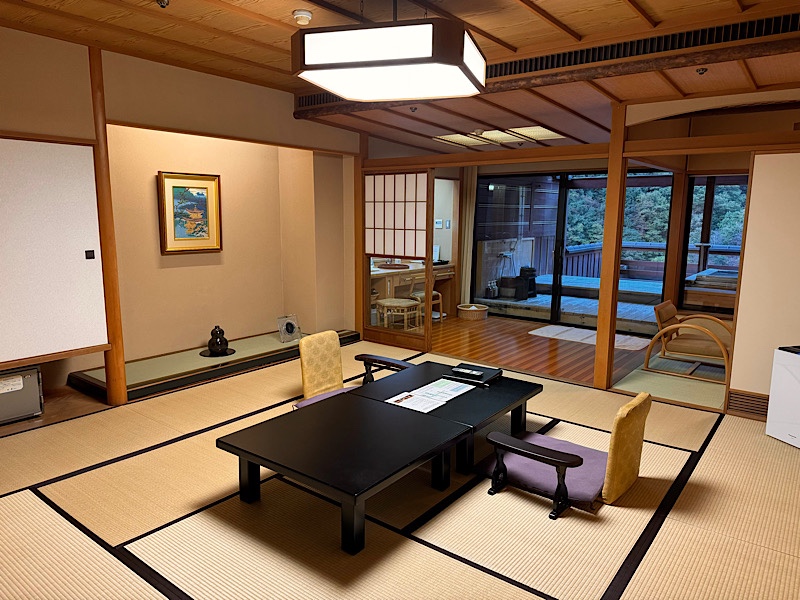 Just past that was a sectioned off area with a dressing table and basin, fitted out with all sorts of amenities (toothbrush kits, hair brushes, shower caps, razors, shampoo, conditioner, lotions, face mask treatment things – all individually wrapped)…
Just past that was a sectioned off area with a dressing table and basin, fitted out with all sorts of amenities (toothbrush kits, hair brushes, shower caps, razors, shampoo, conditioner, lotions, face mask treatment things – all individually wrapped)…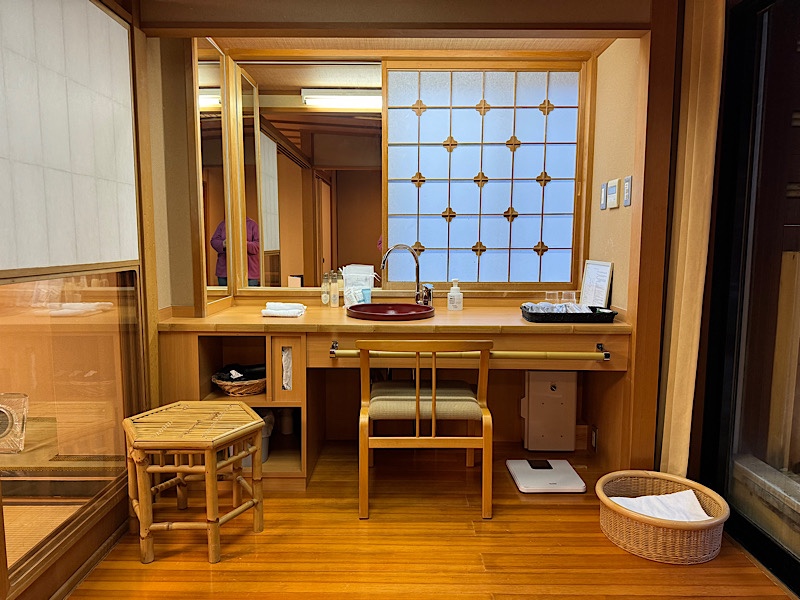 …opposite that is a pair of low chairs and a table for reading, relaxing or sitting and having a drink.
…opposite that is a pair of low chairs and a table for reading, relaxing or sitting and having a drink.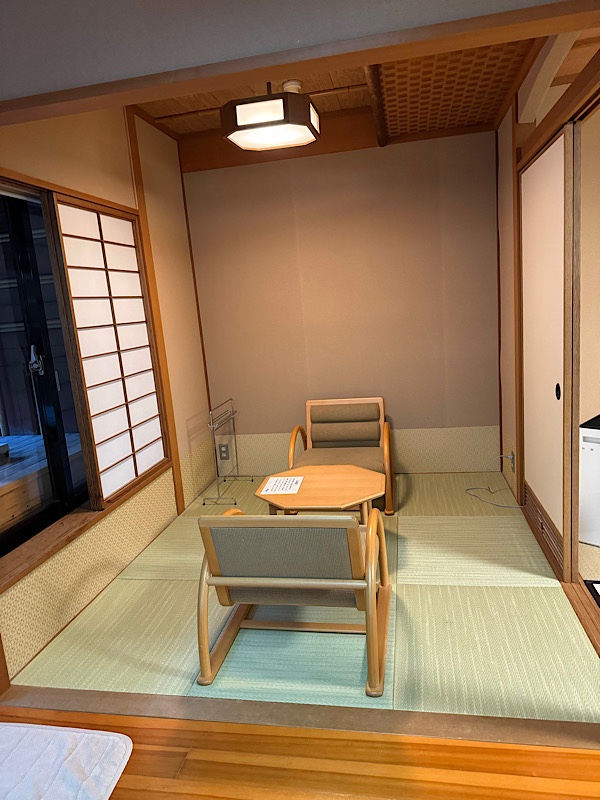
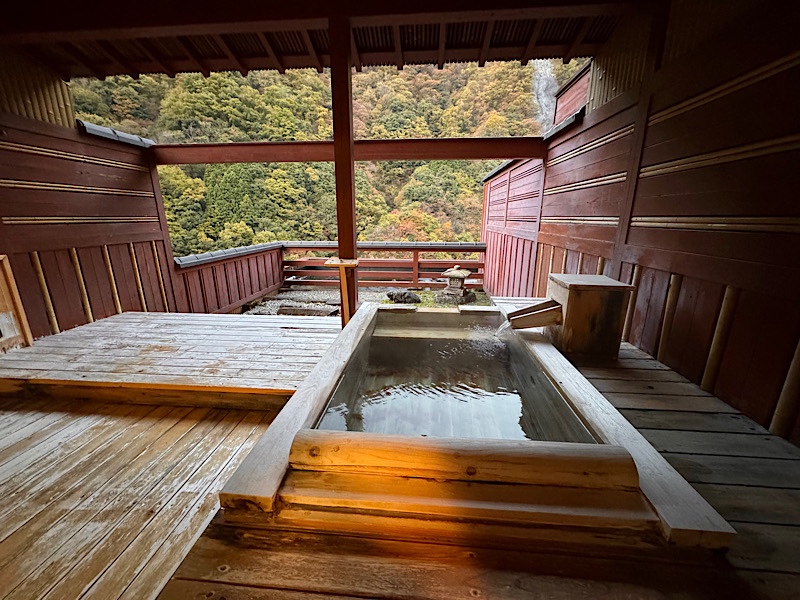 The bath was so inviting we jumped in almost as soon as our attendant left the room. 41C and absolutely divine. The rail trip up to gorge was great and it’s mostly a summer activity (closes down from end of November until April in fact) so it was rather cold sitting in the open sided carriages for quite a long time today.
The bath was so inviting we jumped in almost as soon as our attendant left the room. 41C and absolutely divine. The rail trip up to gorge was great and it’s mostly a summer activity (closes down from end of November until April in fact) so it was rather cold sitting in the open sided carriages for quite a long time today.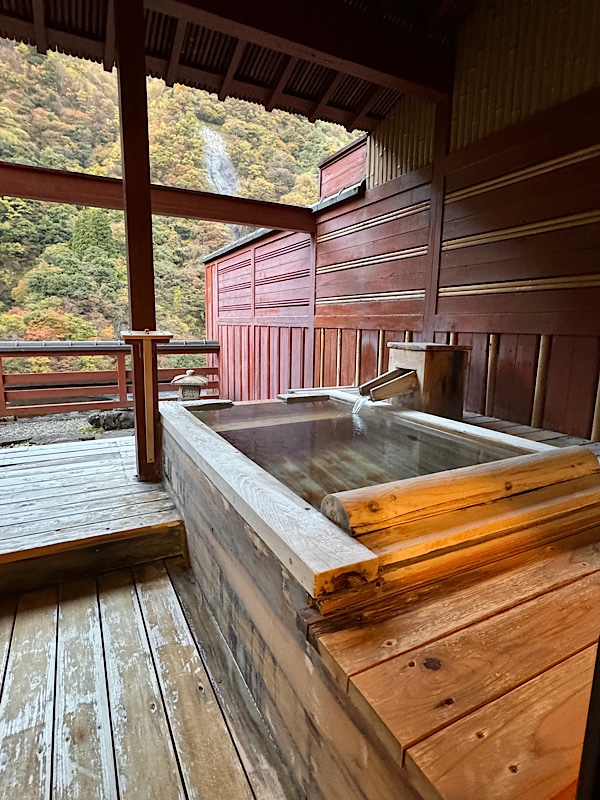
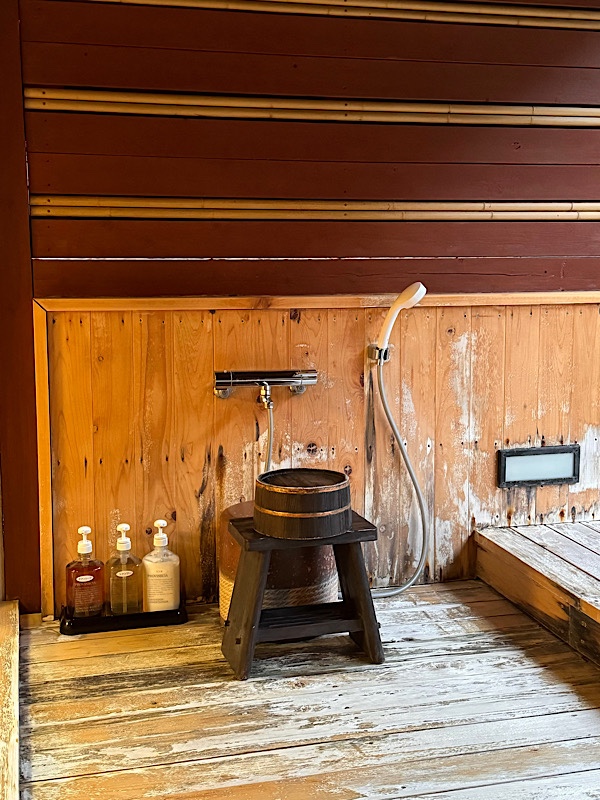
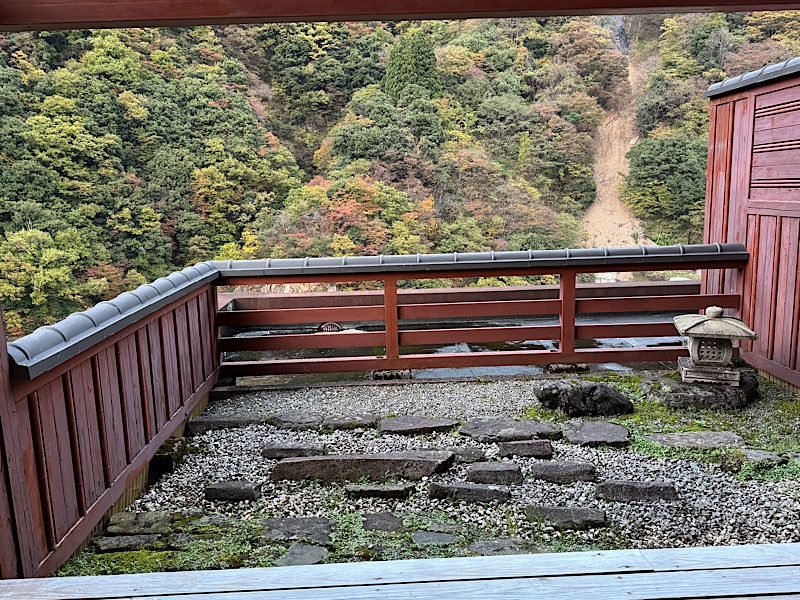
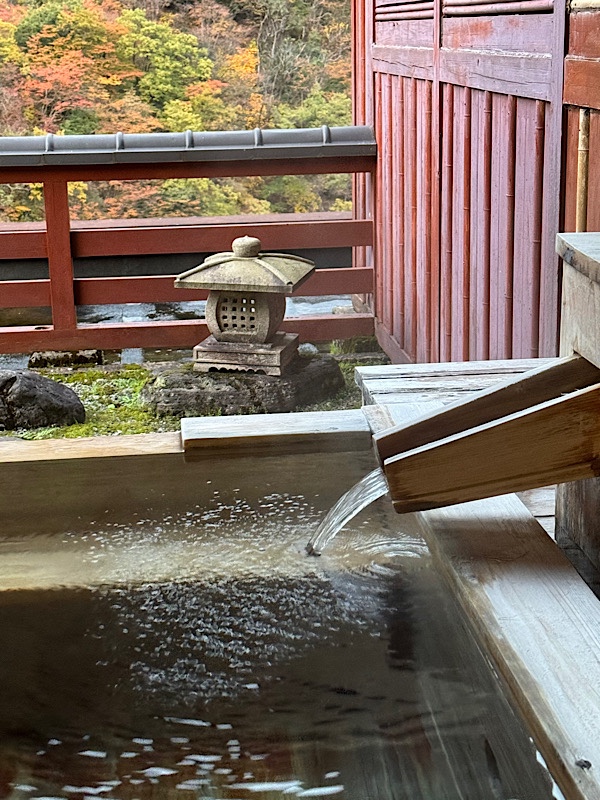 Back inside off the vestibule, (yes there is an entrance space that is most aptly described as a vestibule!) is the interior actual bathroom area… which consisted of three more rooms! A dressing room, a separate toilet and another shower and cypress bath area.
Back inside off the vestibule, (yes there is an entrance space that is most aptly described as a vestibule!) is the interior actual bathroom area… which consisted of three more rooms! A dressing room, a separate toilet and another shower and cypress bath area. 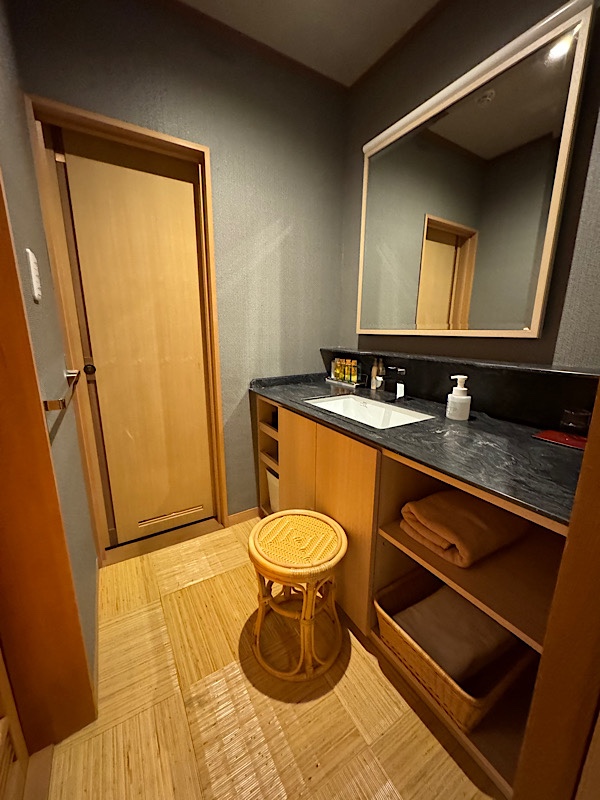 This bath is set into the floor and fully 70cm deep. The whole space is made of our cypress and smells amazing.
This bath is set into the floor and fully 70cm deep. The whole space is made of our cypress and smells amazing.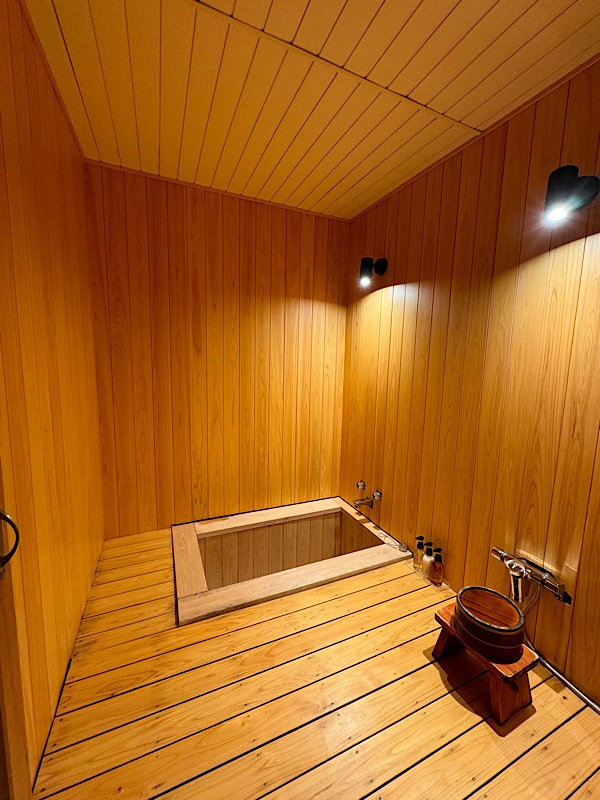 After our dip in the onsen we caught up on some emails etc for a while until it was time to go to dinner – which was being served down the hall in a lovely private dining room.
After our dip in the onsen we caught up on some emails etc for a while until it was time to go to dinner – which was being served down the hall in a lovely private dining room.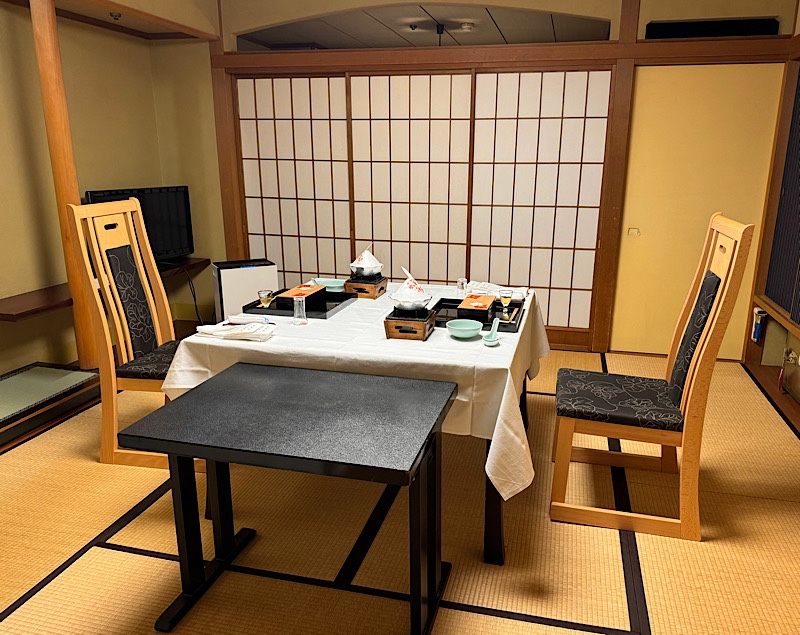 Our meal consisted of some assorted amuse bouche type things – one of these was tofu with a walnuts in an unknown but delicious sauce, another was some pickled something or other with some Imari, and the third was a mushroom tofu thingamebob that was fantastic.
Our meal consisted of some assorted amuse bouche type things – one of these was tofu with a walnuts in an unknown but delicious sauce, another was some pickled something or other with some Imari, and the third was a mushroom tofu thingamebob that was fantastic. 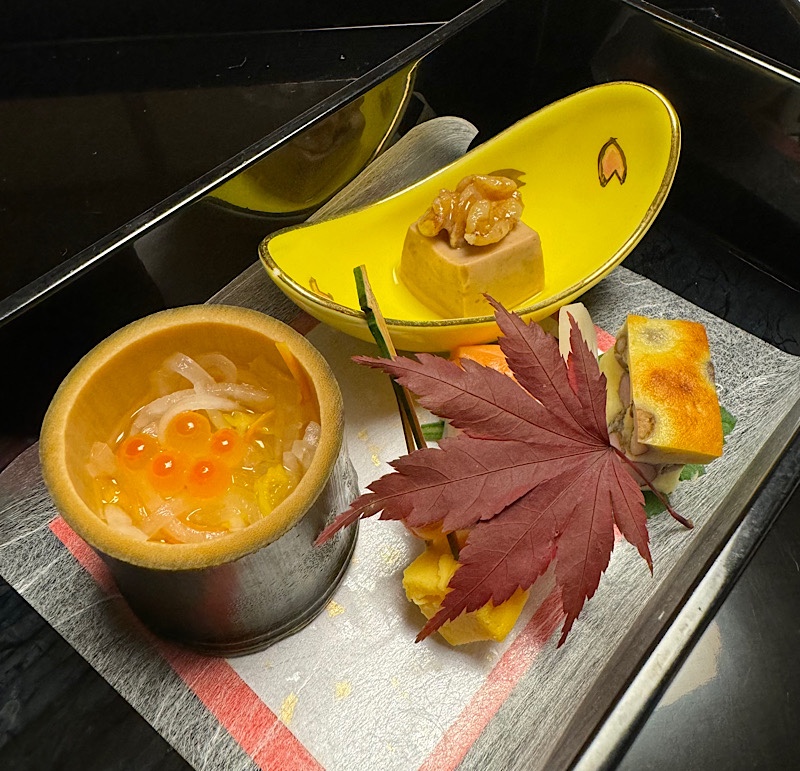 A grouper soup…
A grouper soup…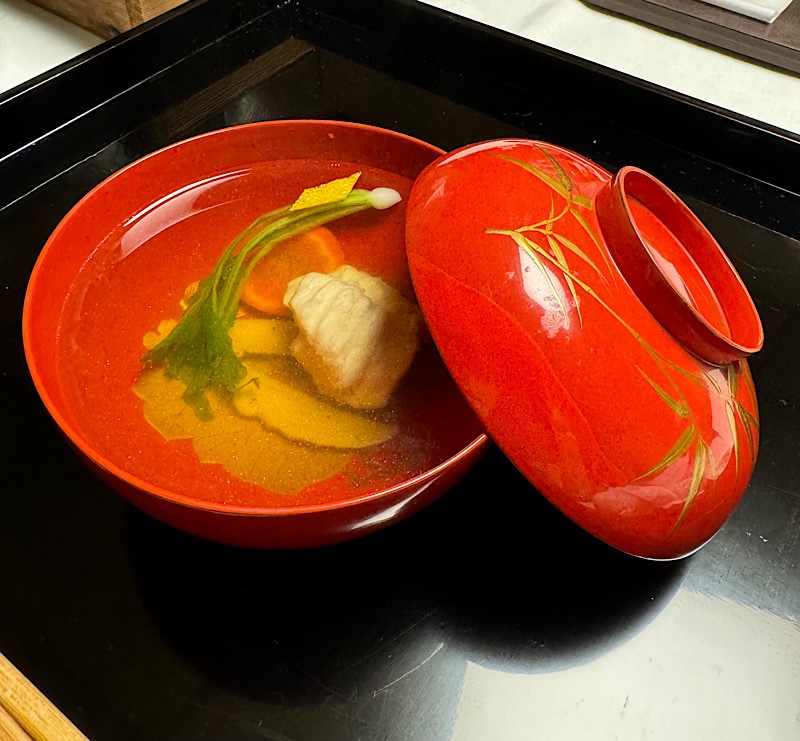
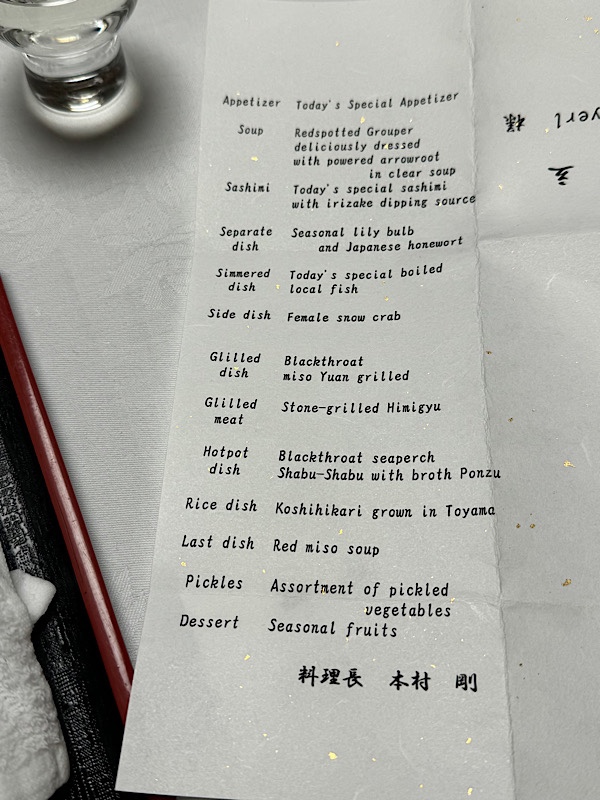
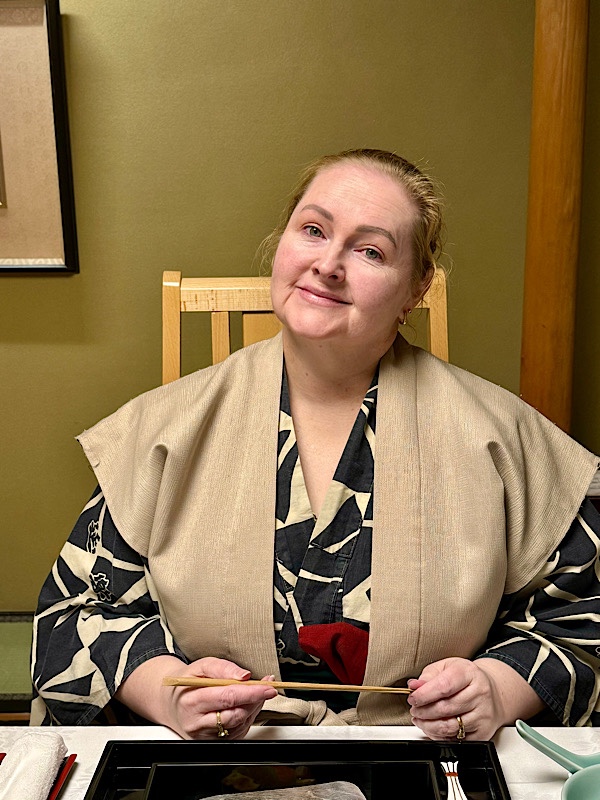 Lily bulb and some fresh sashimi served with irizake dipping sauce…
Lily bulb and some fresh sashimi served with irizake dipping sauce…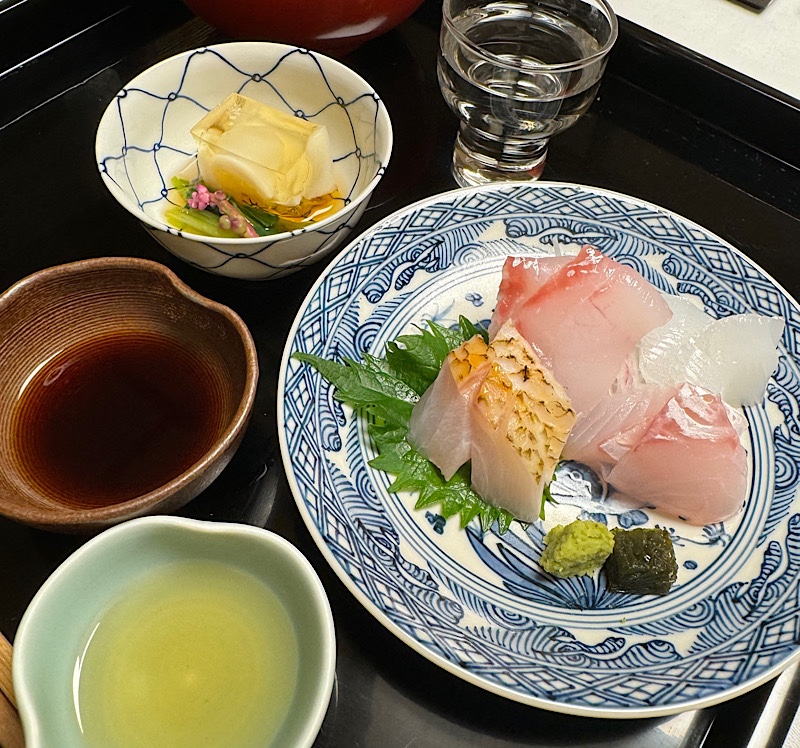

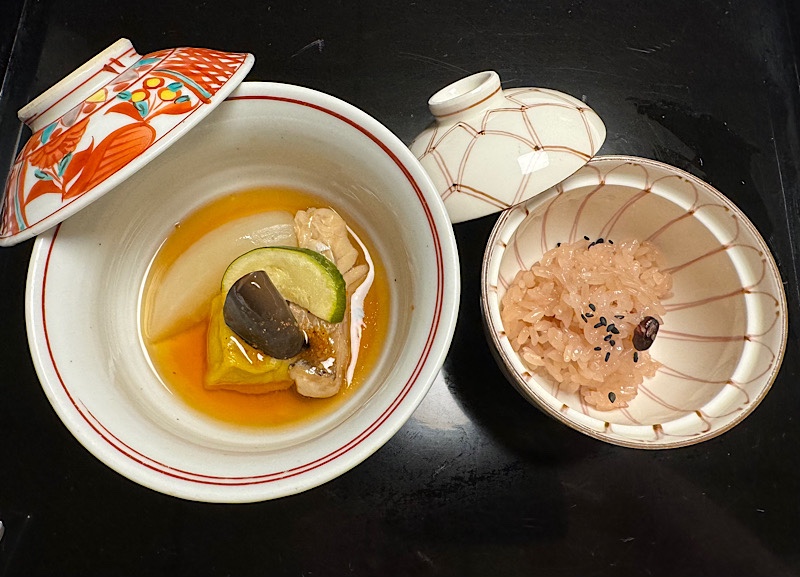 Female snow crab…
Female snow crab… 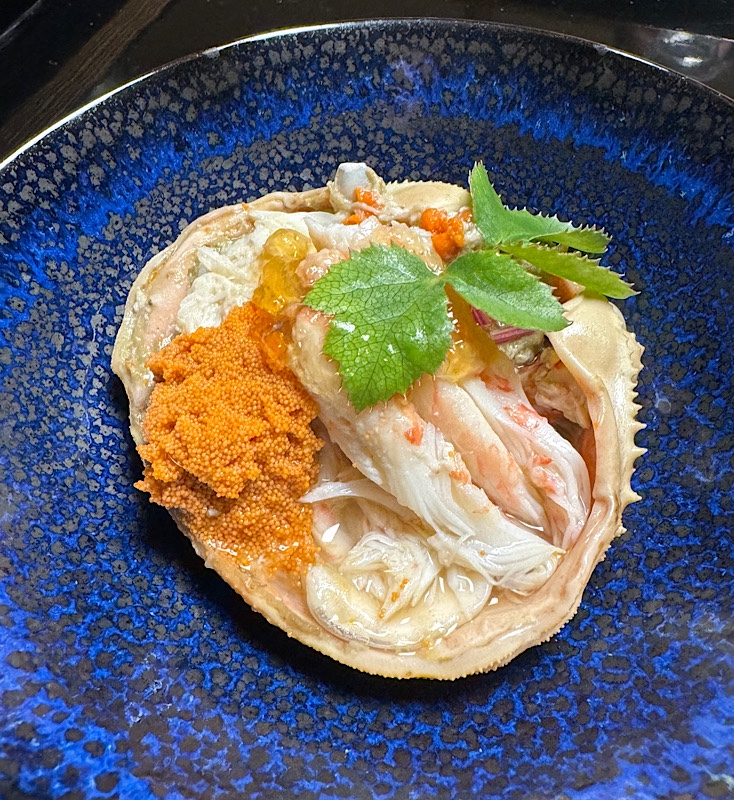 Karaage shrimp!
Karaage shrimp!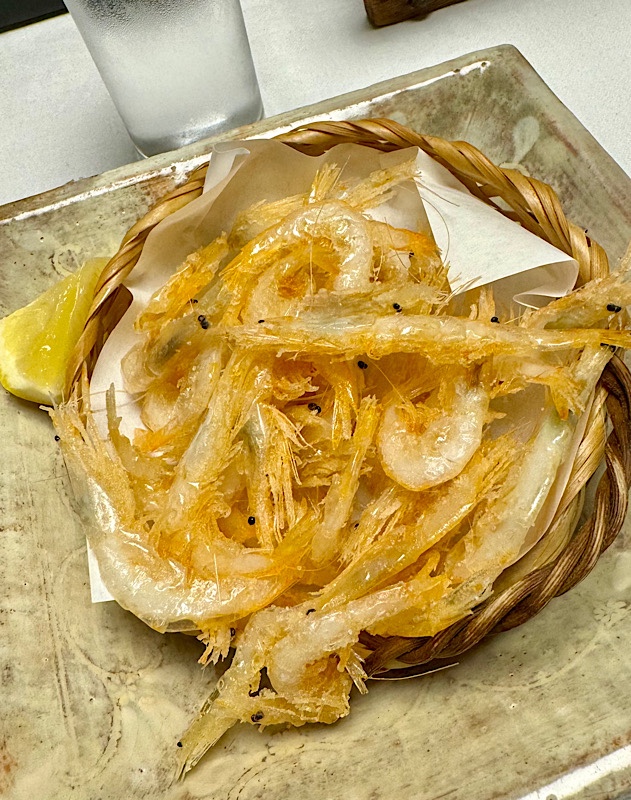 Grilled black throat fish with miso yuan and some heavily marbled waguy beef to cook on a black stone.
Grilled black throat fish with miso yuan and some heavily marbled waguy beef to cook on a black stone. 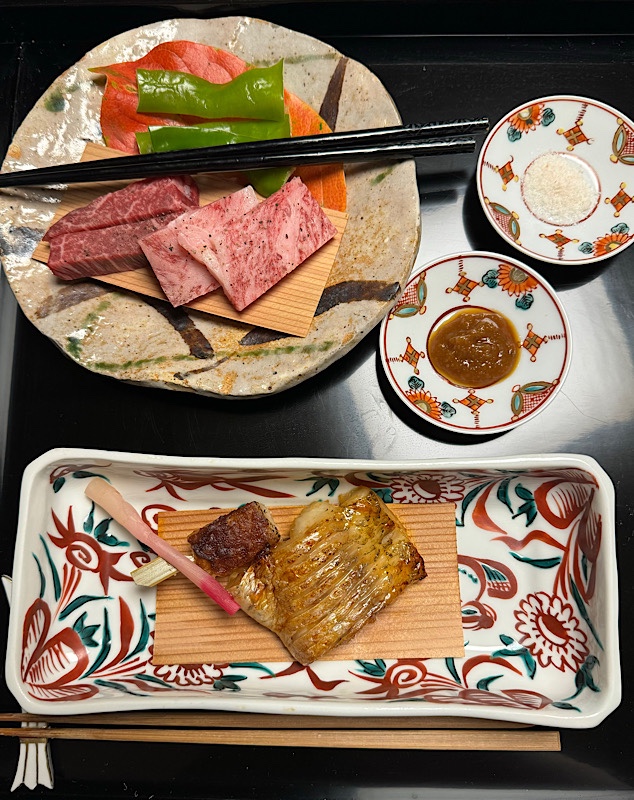
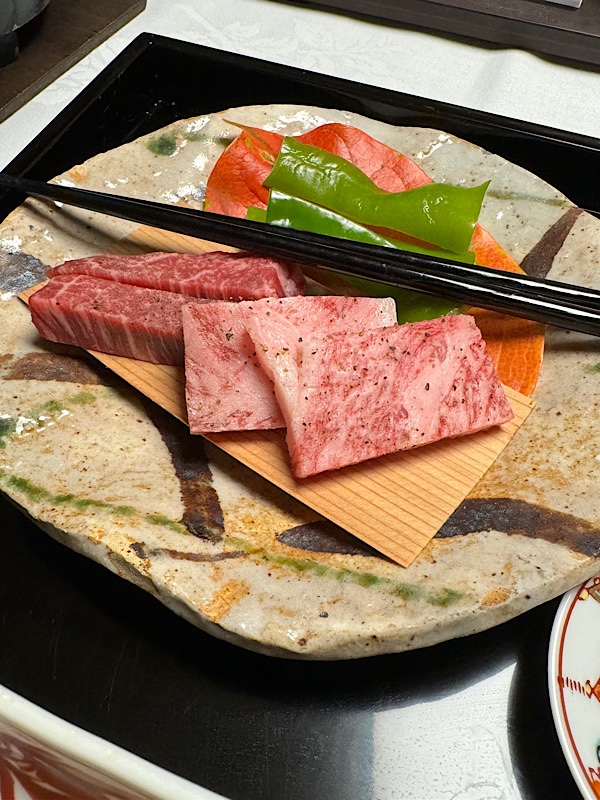
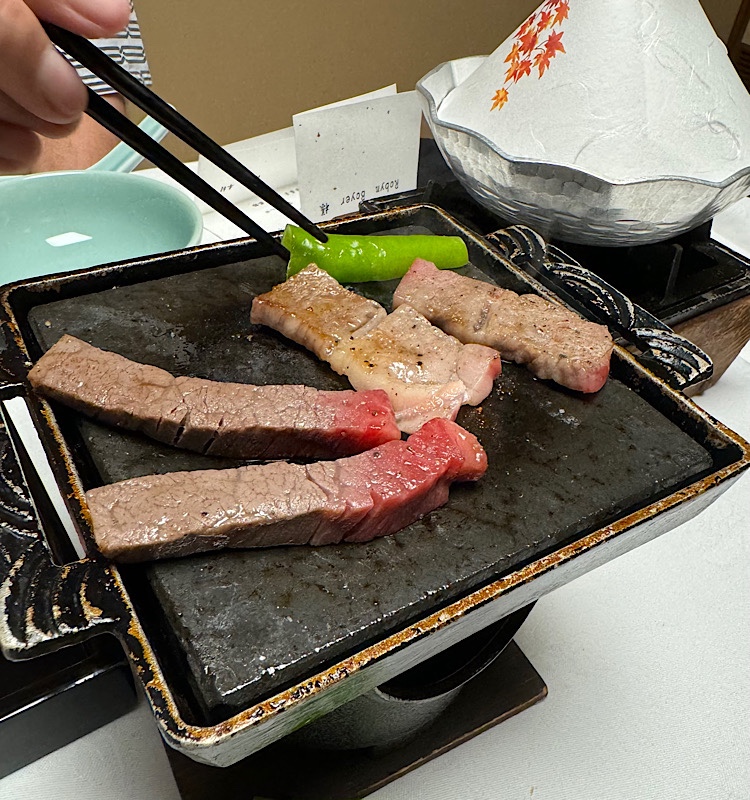
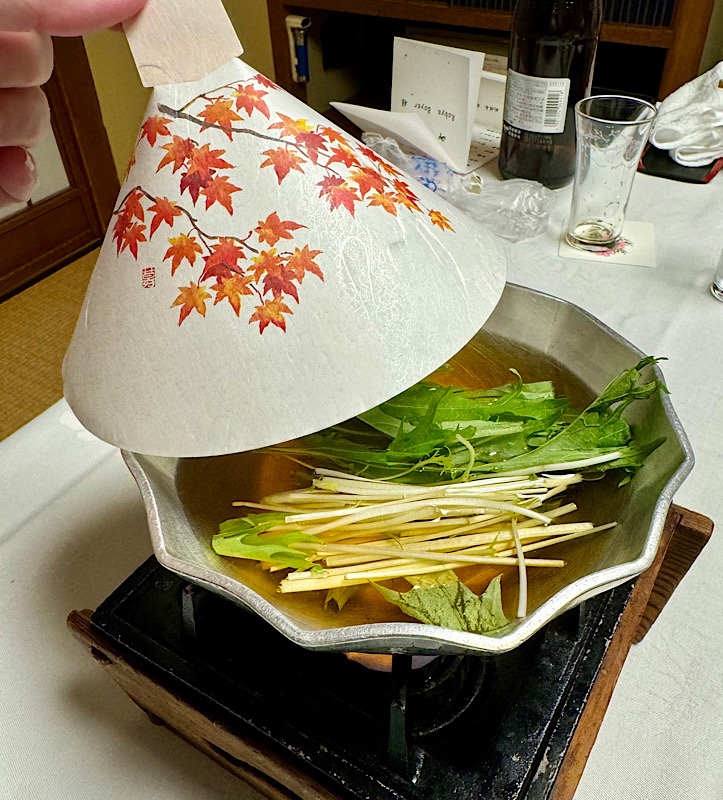
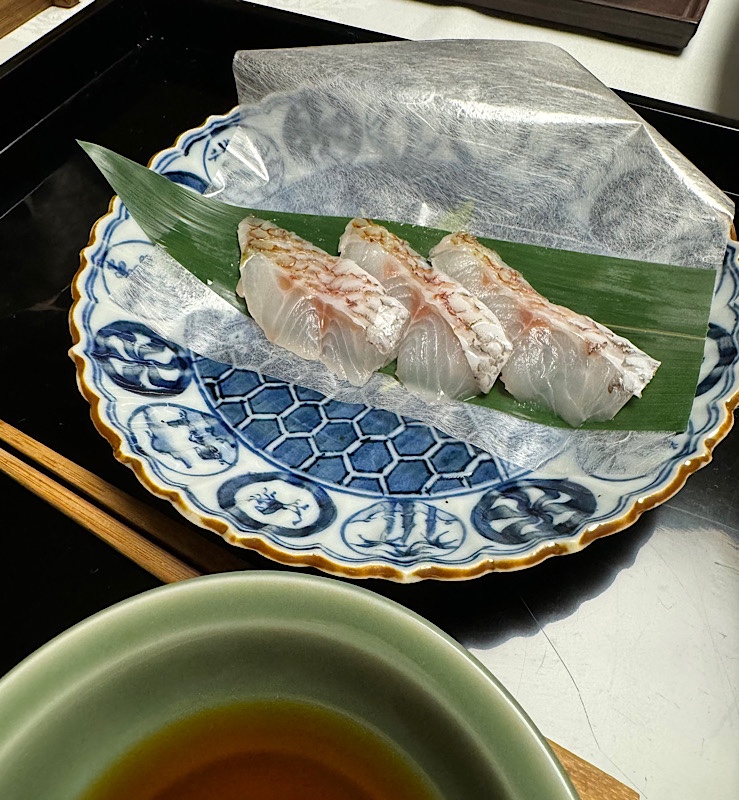
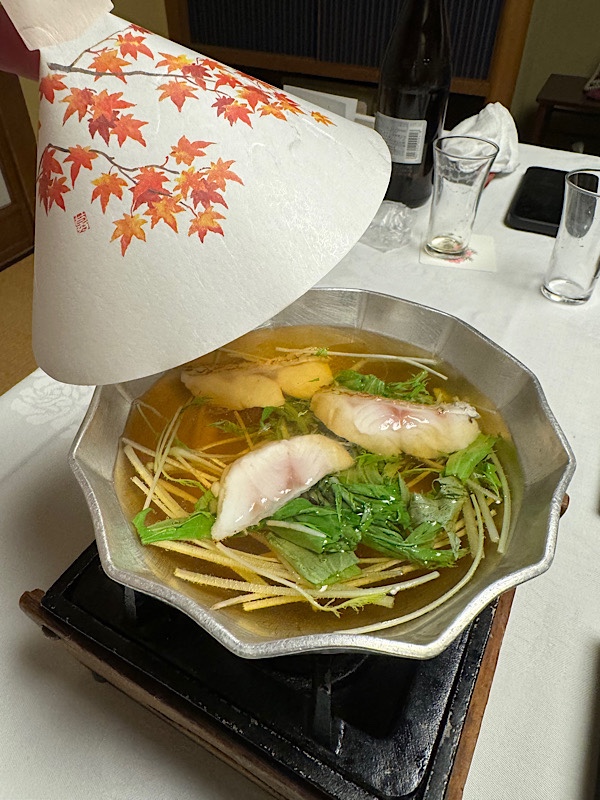
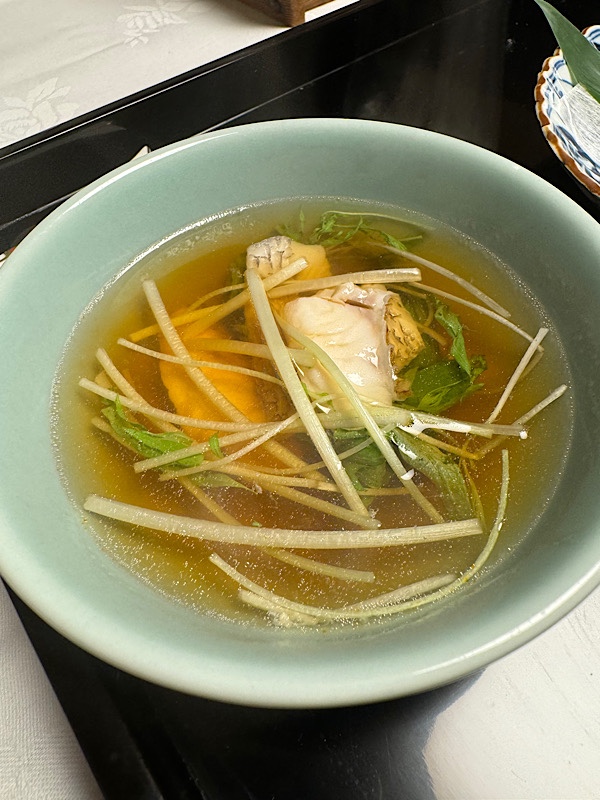 Then a small bowl of local Toyama rice (which apparently is some of the best in the country and explains why there are so many saké breweries around here) served with some red miso soup filled with mushrooms.
Then a small bowl of local Toyama rice (which apparently is some of the best in the country and explains why there are so many saké breweries around here) served with some red miso soup filled with mushrooms. 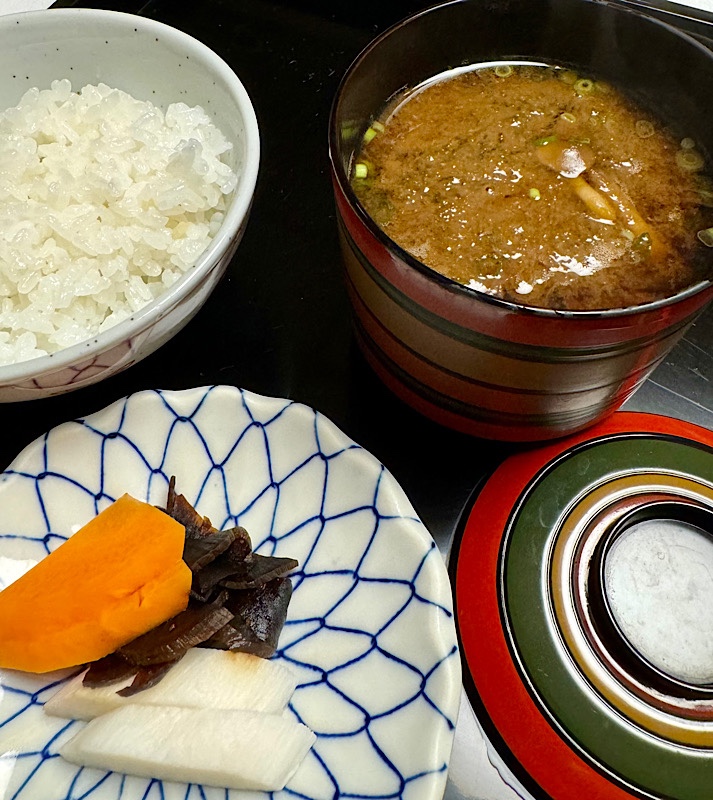 Finally topped off with some fresh fruit – I have to hand it to the Japanese, even though I come from the sub-tropics and fresh fruit is plentiful year round, the Japanese have amazing quality fruits.
Finally topped off with some fresh fruit – I have to hand it to the Japanese, even though I come from the sub-tropics and fresh fruit is plentiful year round, the Japanese have amazing quality fruits.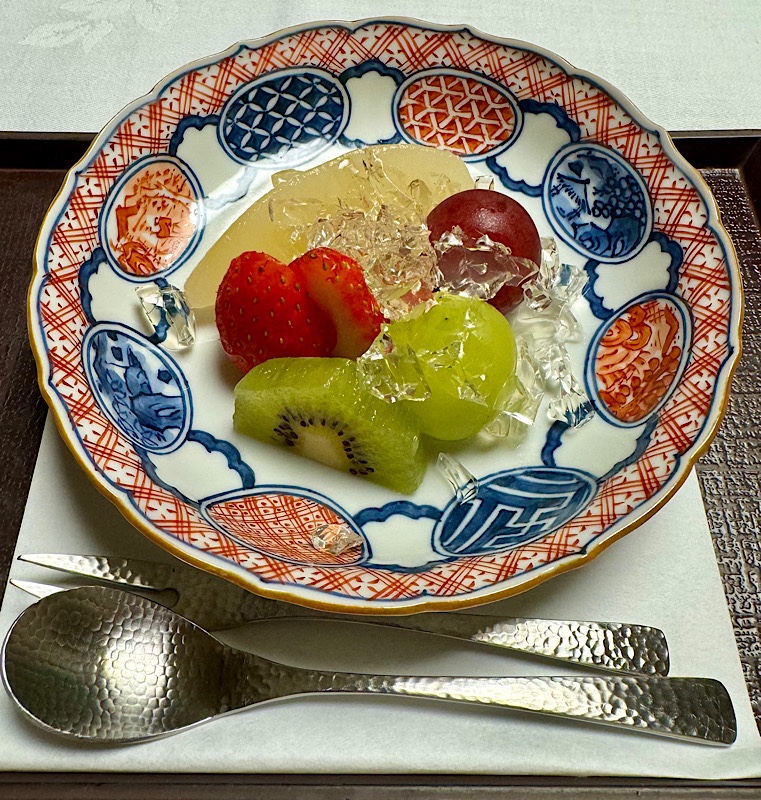 When we got back to the room, our attendant had made up our futons for the night and we let dinner settle and then hightailed it back into the onsen for another soak!
When we got back to the room, our attendant had made up our futons for the night and we let dinner settle and then hightailed it back into the onsen for another soak!